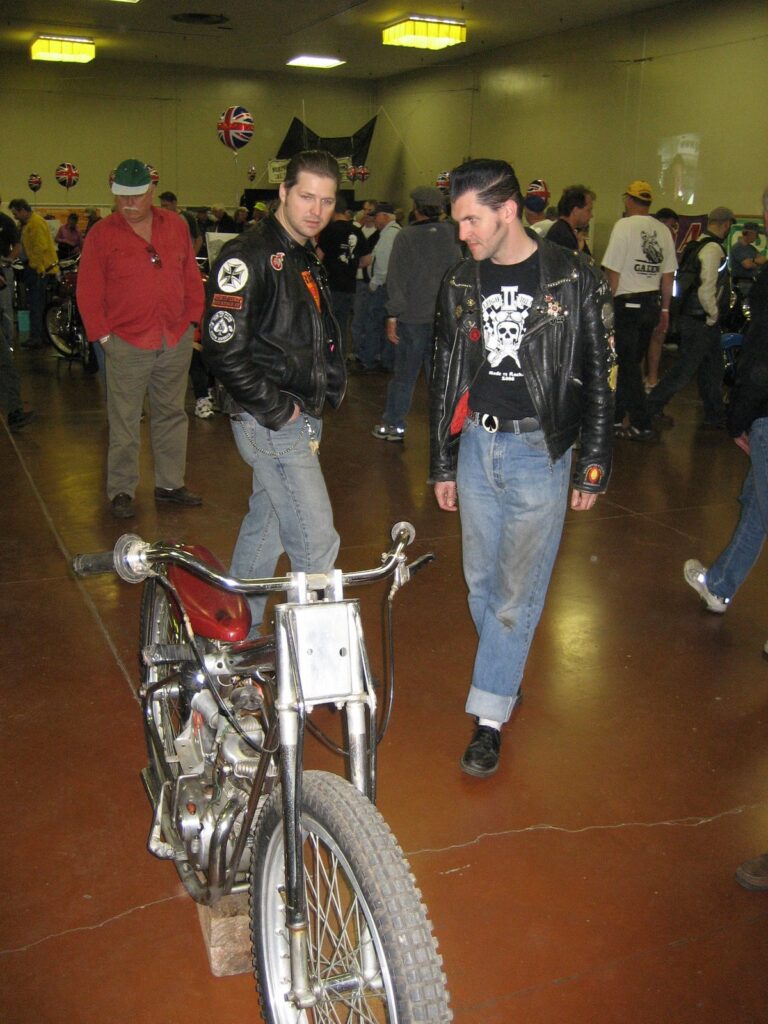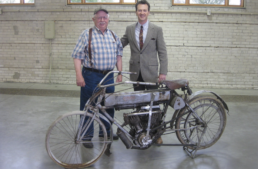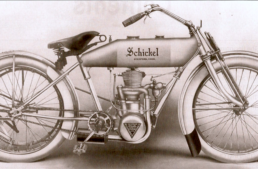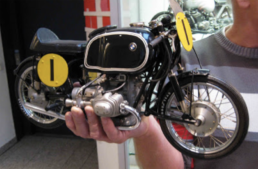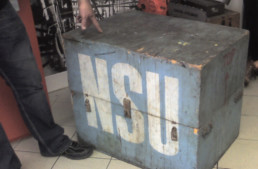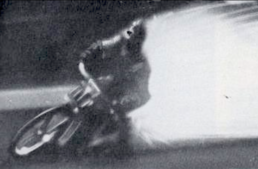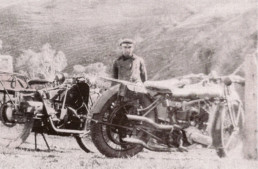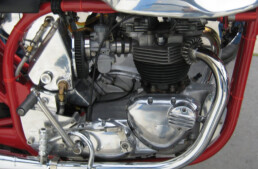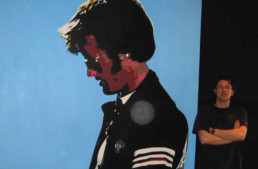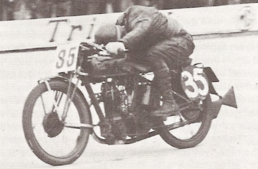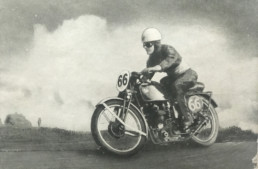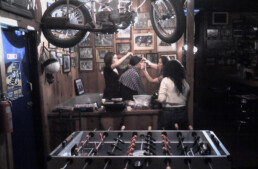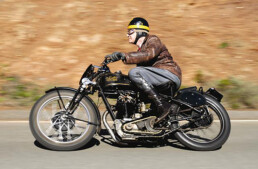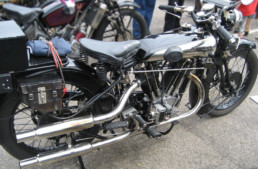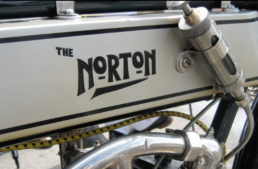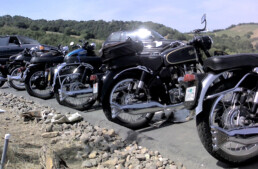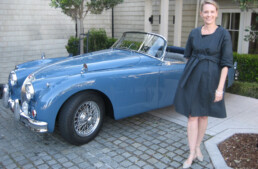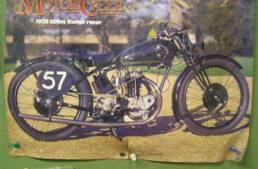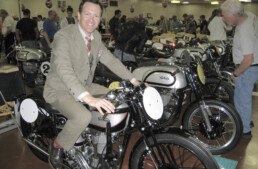Sale of a 1909 Curtiss V-twin
Nilus (and where did this name come from?), claimed owner of a 'barn find' 1909 Curtiss, was straight out of Central Casting; the director of our TV project had joked the night prior that it would be best if the owner of the Curtiss showed up in suspenders, and Nilus obliged, being a quintessential Iowa farmer. The family homestead, and that’s literally what it was, had been left behind in North Dakota many years ago, but family members still live on the property. That original building was described as having been of rough construction, as when the family arrived in the 1800s, North Dakota was still a very rough and basic territory – Nilus mentioned that regular electricity only arrived in the 1950’s! Thus, his Uncle Tom, the original owner of the Curtiss, would have been left basically to his own devices regarding maintenance and repairs to his motorcycle. During its 8 years of active duty, quite a few miles went under those tires, and the motorcycle certainly showed a hard life; both fenders having been repaired multiple times with rivets and patches, and the petrol tank having plenty of dents for character. The grey/white paint was still in good shape though, with a lot of chips from rocks and spills. Spills aplenty there must have been, as the first paved road in North Dakota came many decades after the Curtiss was laid up.
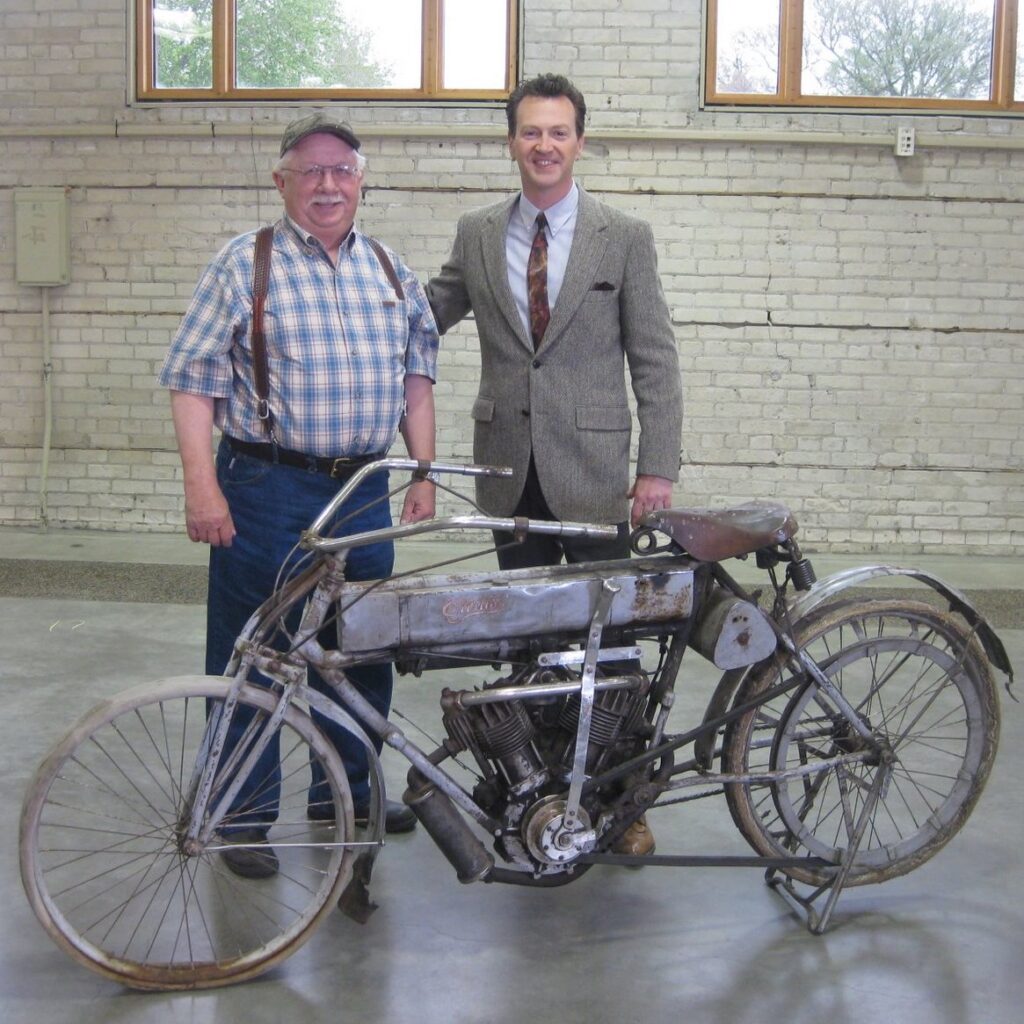
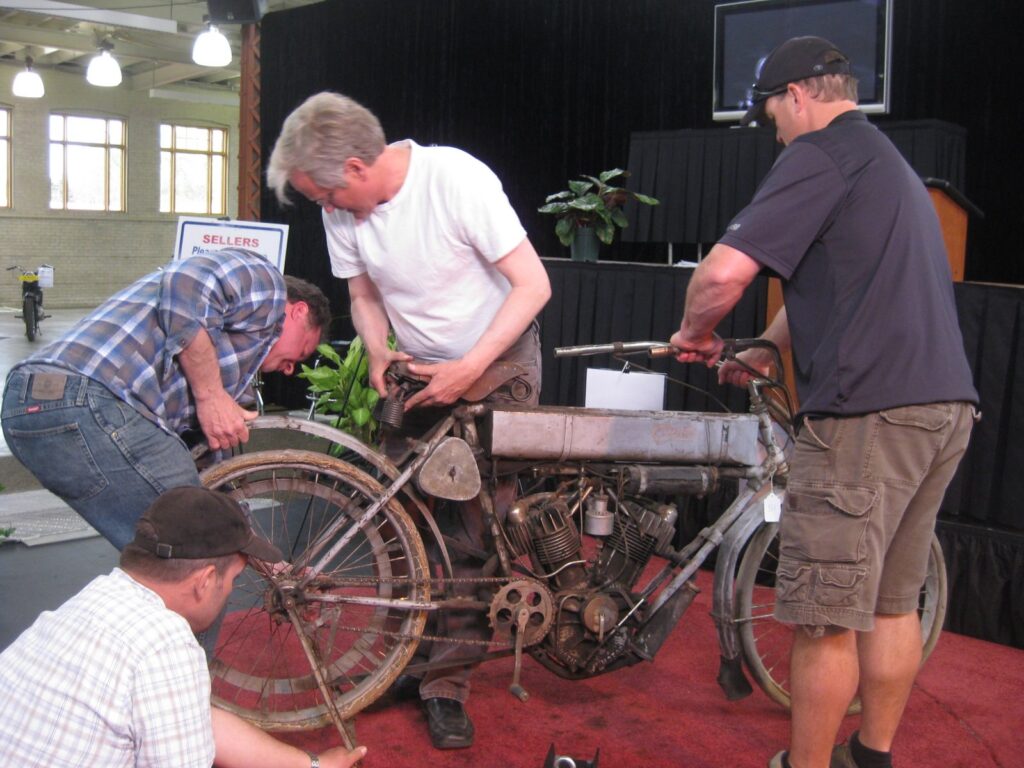
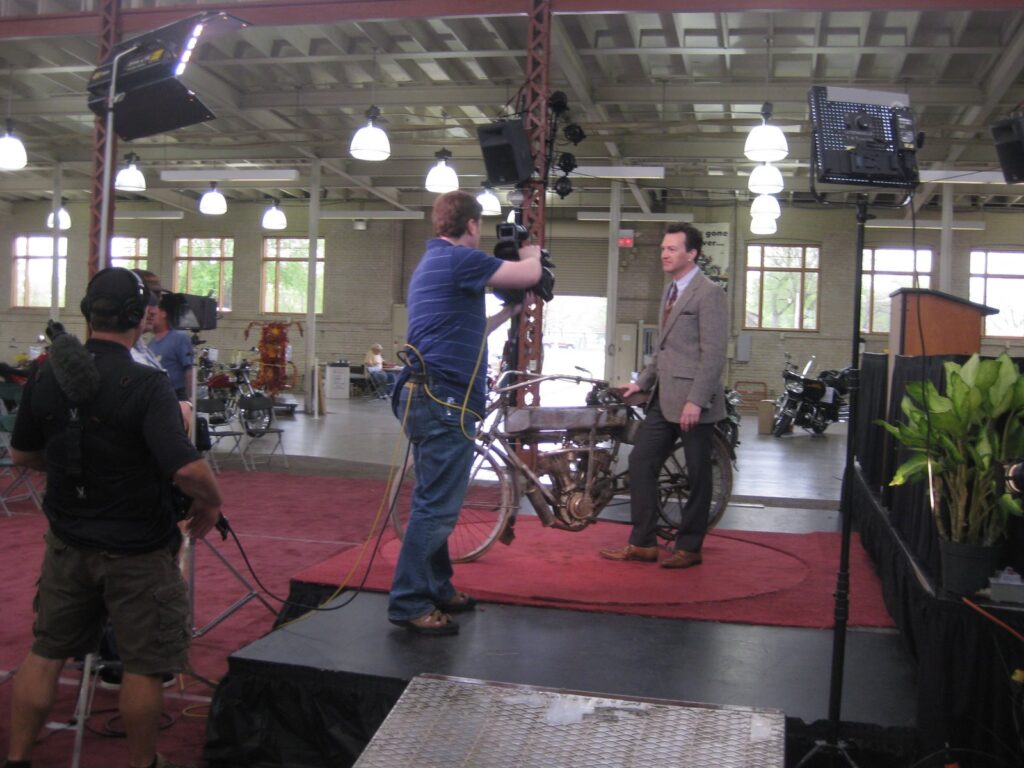
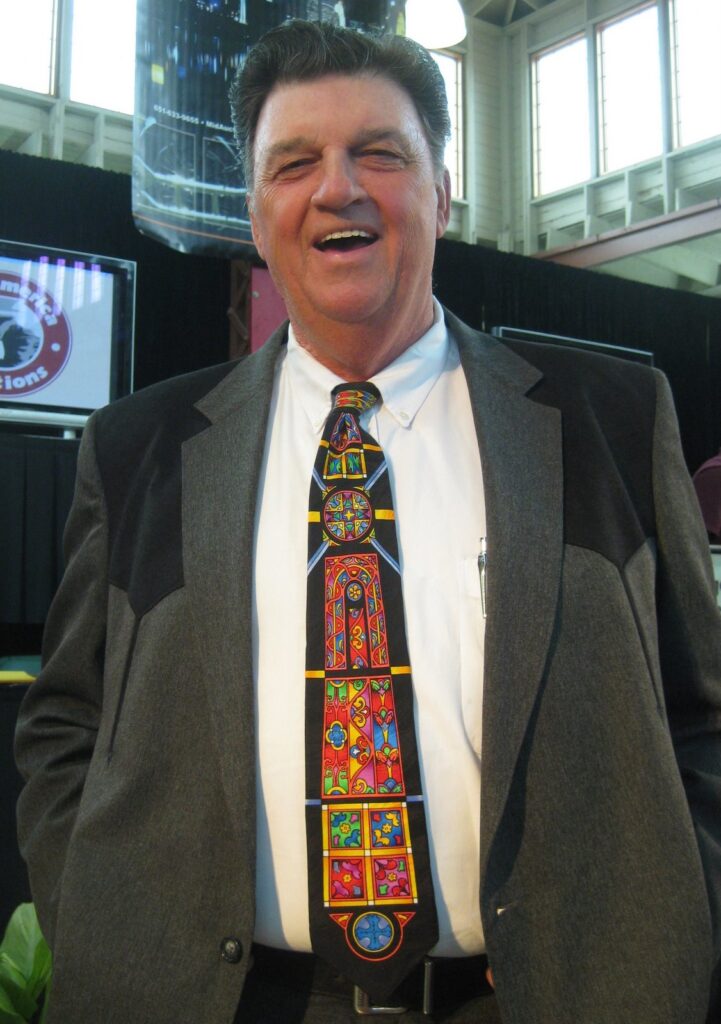
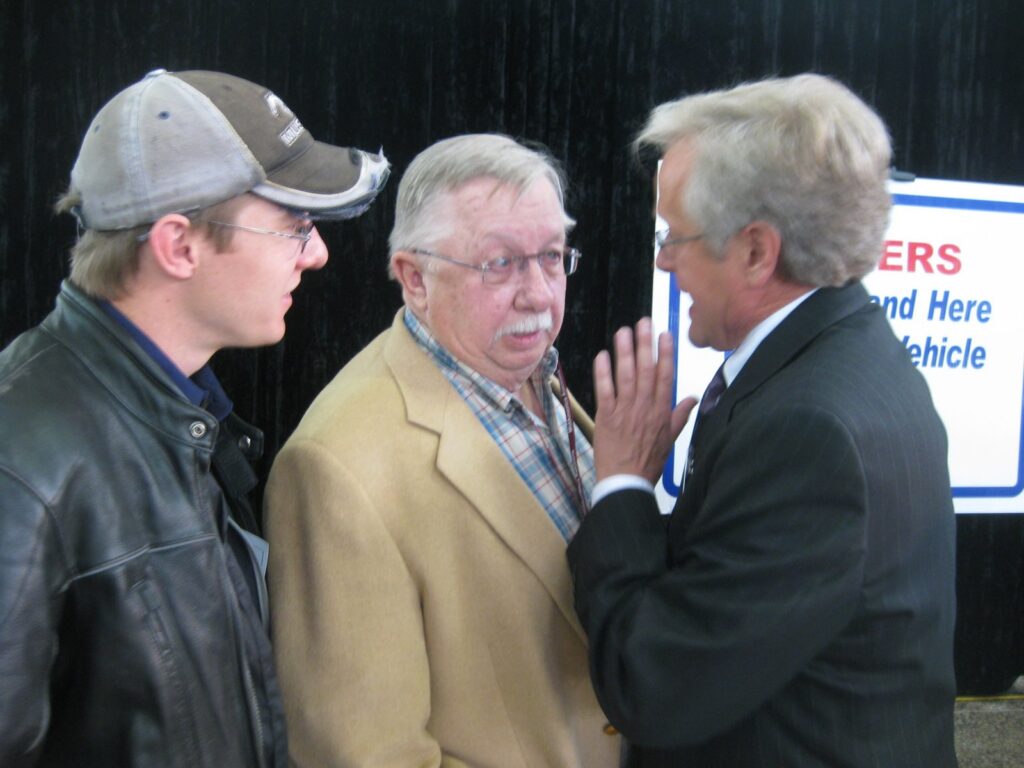
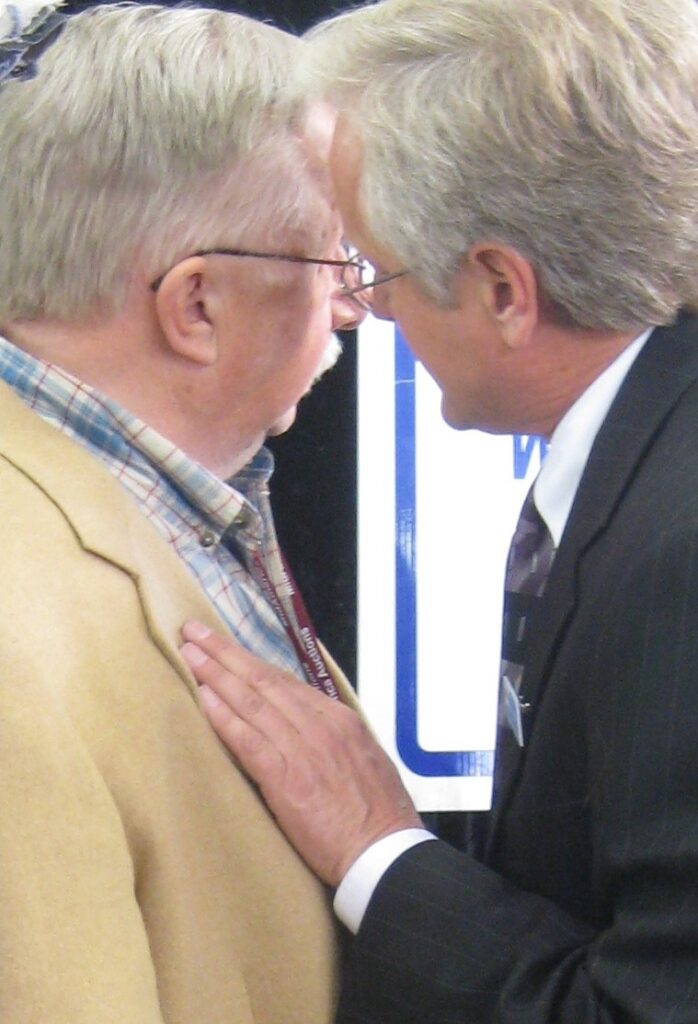
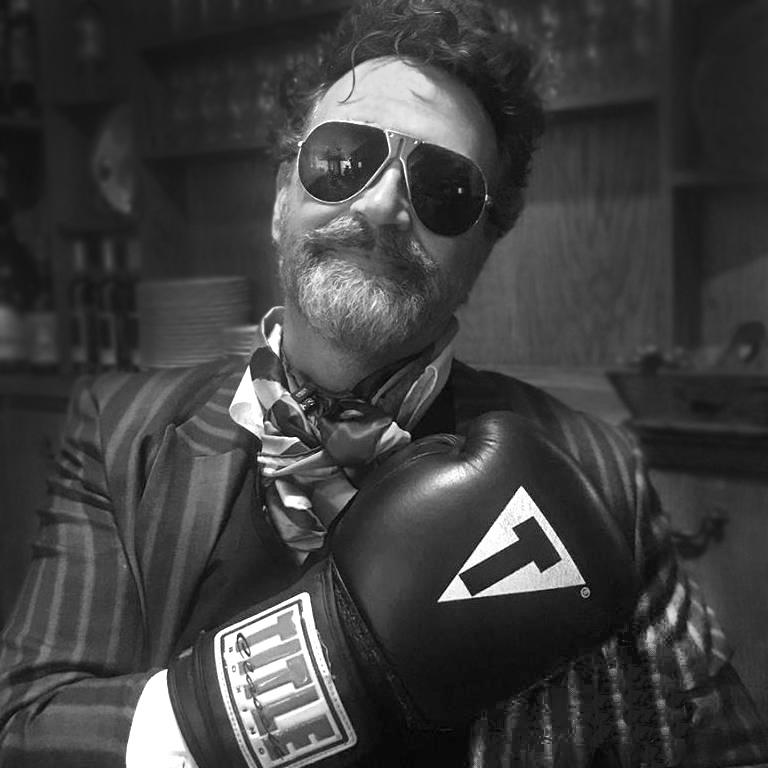
Book Review: 'Illustrated History of the Shickel Motorcycle'
I will confess to never having heard of the Schickel before finding the marque history for the company, written by the grandson of the founder, Ken Anderson. His book is 'The Illustrated History of the Schickel Motorcycle, 1911-1924; The First 2-Cycle Built In America' (Two Cycle Press, 2008), and thankfully his family has preserved a great archive of photographs, patent documents, and various motorcycles and parts, with which Ken was able to compile this most interesting history.
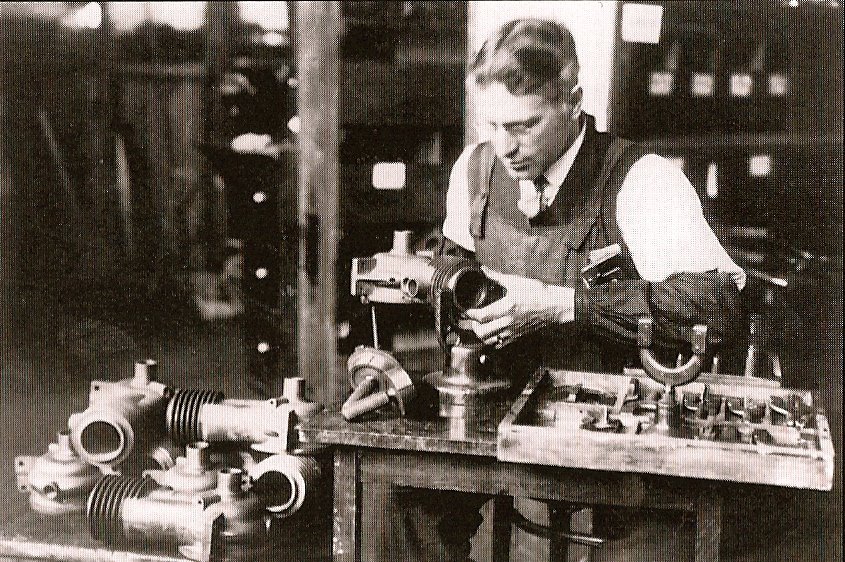
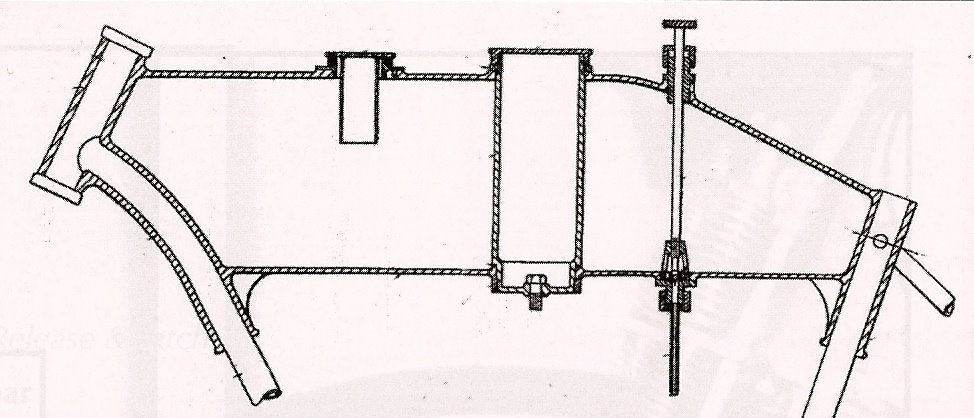
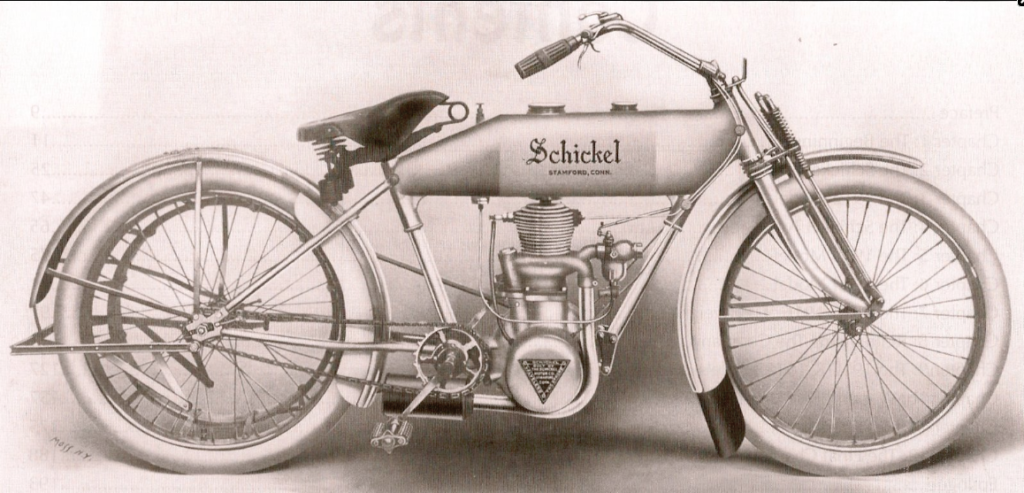
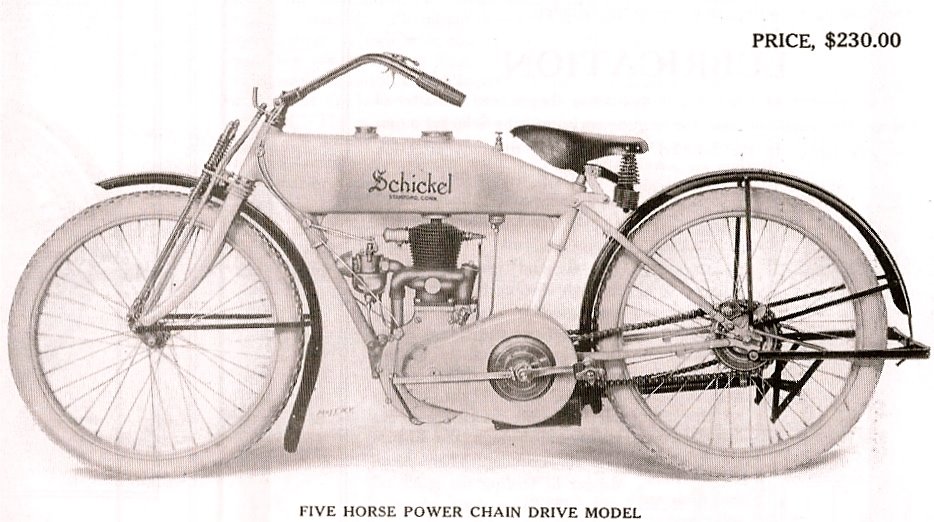
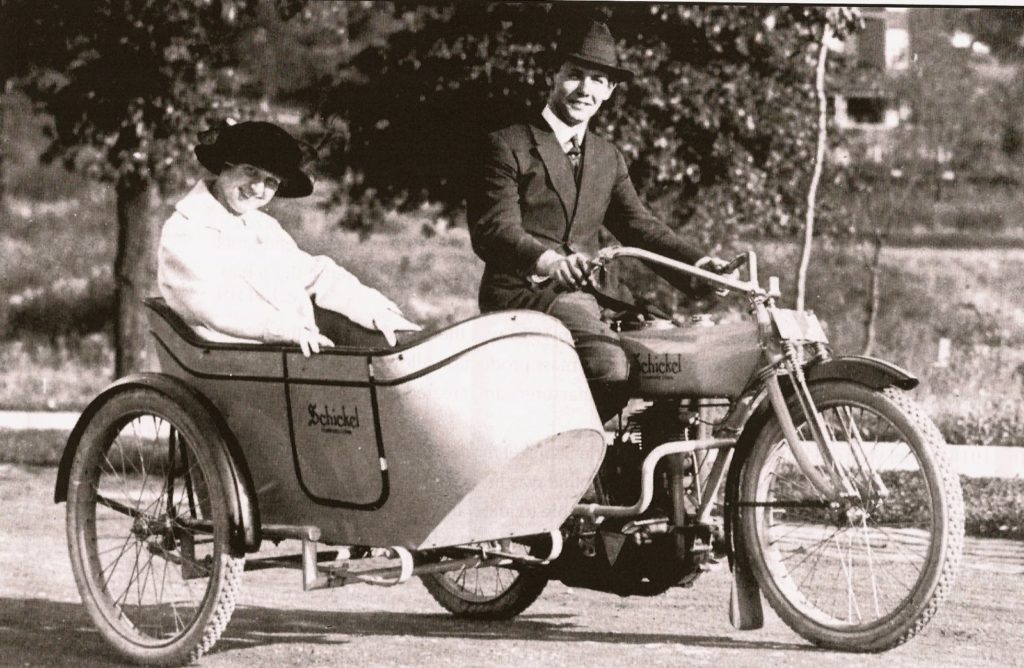
In 1915, the company also introduced a motorized bicycle attachment (stinkwheel!) called the 'Resto Bike-Motor', for $25, utilizing the same engine, which could be attached to any bicycle.
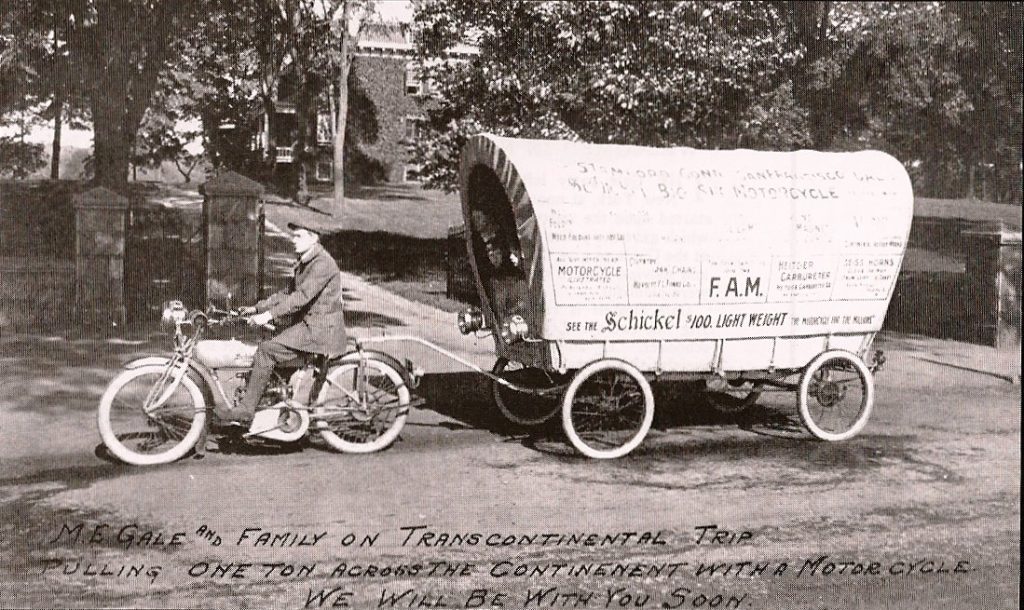
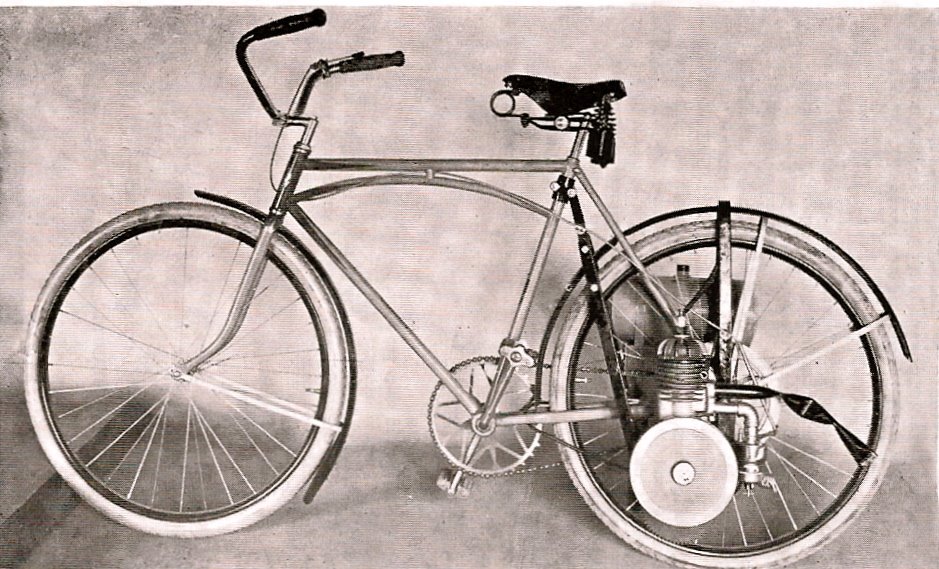
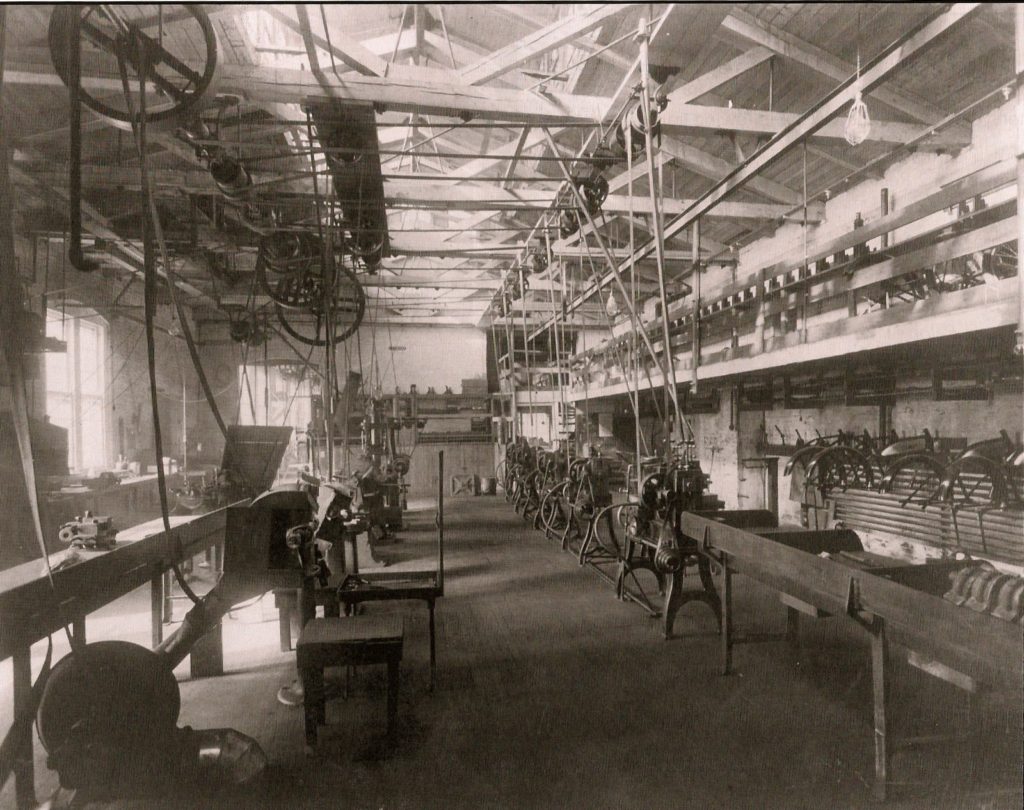
The 'Illustrated History of the Shickel Motorcycle' is available directly from Ken Anderson, and can be ordered here.

Eugene Ziegler - The Kitchen Master
These incredible models were built in Germany by Eugene Ziegler, who worked nightly on the machines in his kitchen, often with his wife's help. He used period technical drawings to create accurate 1:4.5 scale models, built entirely from scratch. They are prominently housed in the Deutsches Zweirad Museum (Neckarsulm); if you visit, the large glass case housing these gems is the first display one sees on entering the museum.
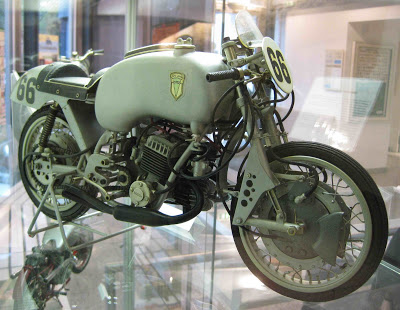
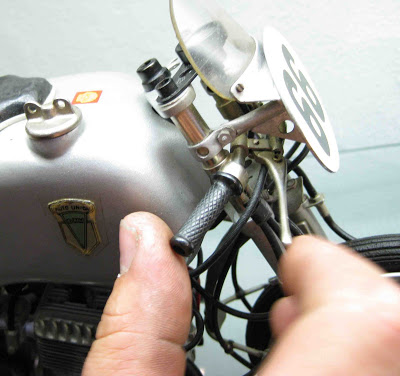
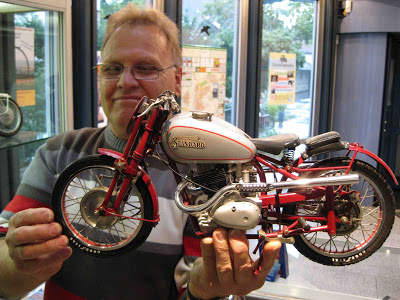
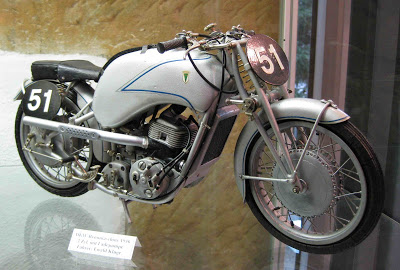
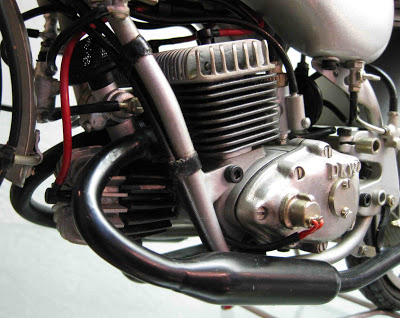
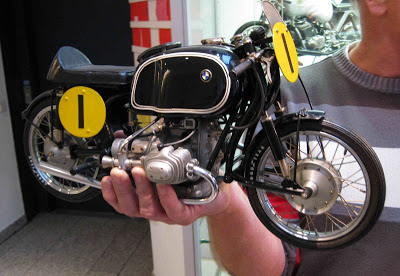
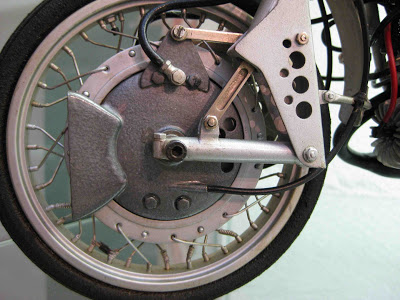
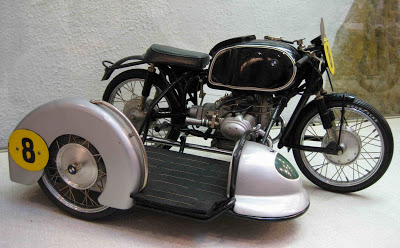

The Blue Box
On being granted a private tour of the NSU collection of the Audi Museum, I asked, 'What collection?' In 2009, Audi only exhibited DKW and Wanderer motorcycles in its museum, as these companies were two of the 'four rings' of the Auto Union logo: Audi, Wanderer, Horch, and DKW, who banded together in 1932, during the Depression, as a survival strategy. The four rings logo is now Audi's alone, after Volkswagen purchased Auto Union in 1964, and set about its own re-branding over the years. NSU was merged into VW/Auto Union in 1969, and its designs and research absorbed into group, with NSU effectively disappearing. The purchase of NSU included a considerable stock of the brand's history, including most of their amazing Grand Prix racers, including the all-dominant Rennmax twins that took the World Championship three years in a row from 1952-54 in the 250cc class, and two years in the 125cc class. Even after NSU quit the Grand Prix scene for the 1955 season, and NSU still won the 250cc World Championship, as HP 'Happy' Müller took a private NSU Sportmax production racer to glory - the first privateer to win a World Championship.
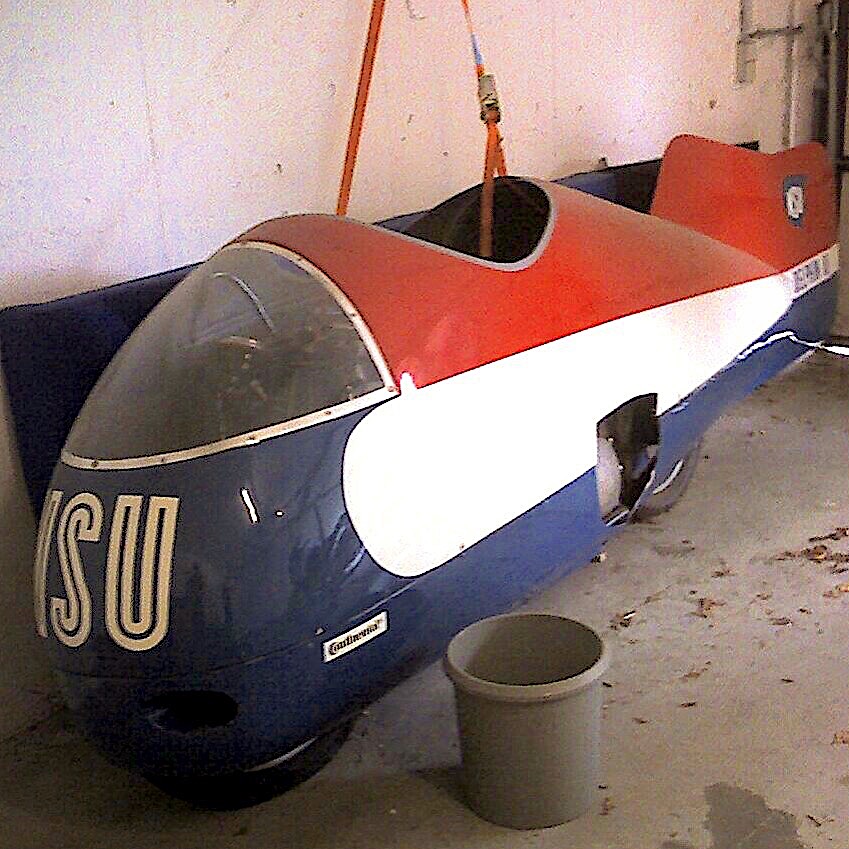
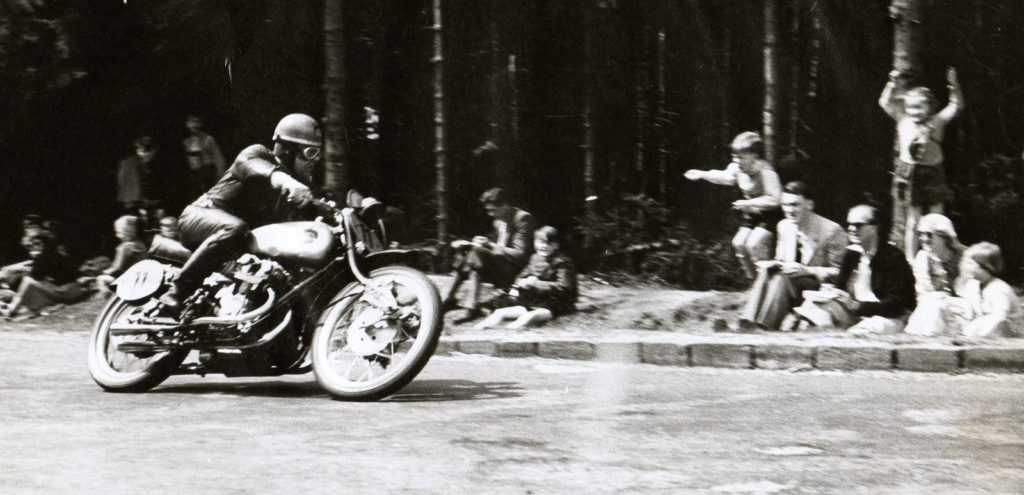
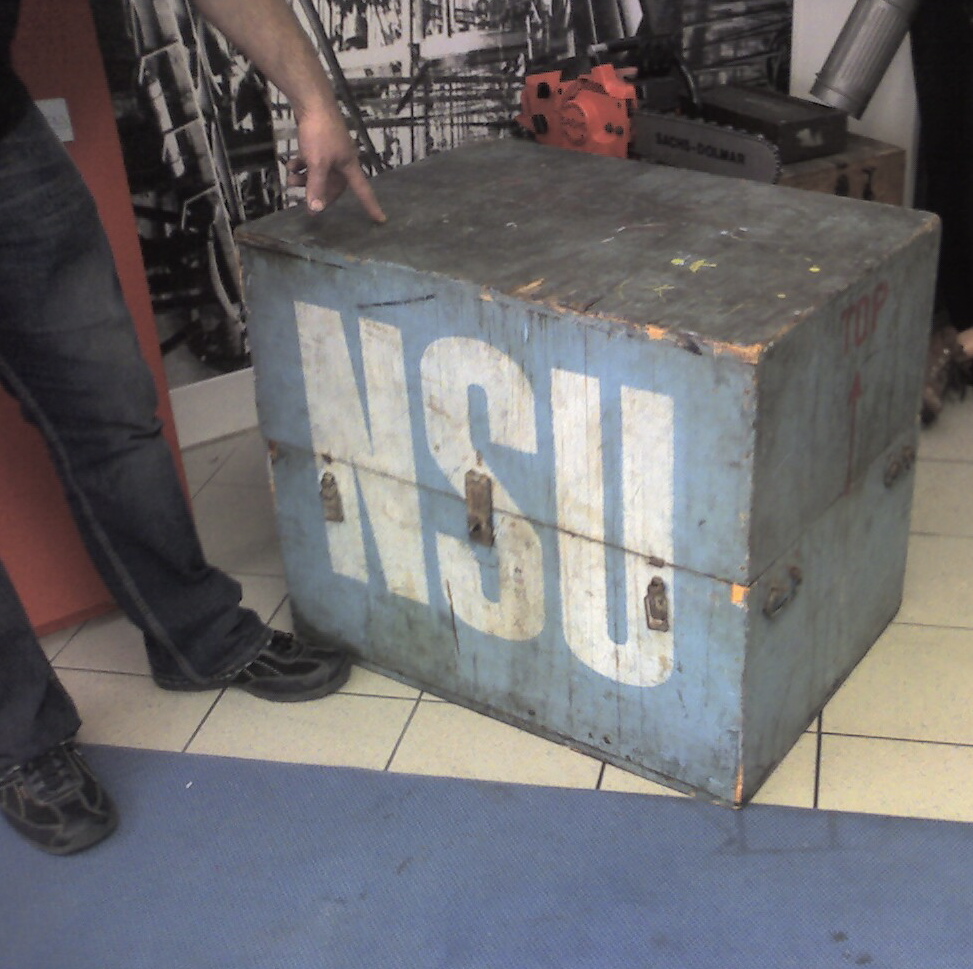
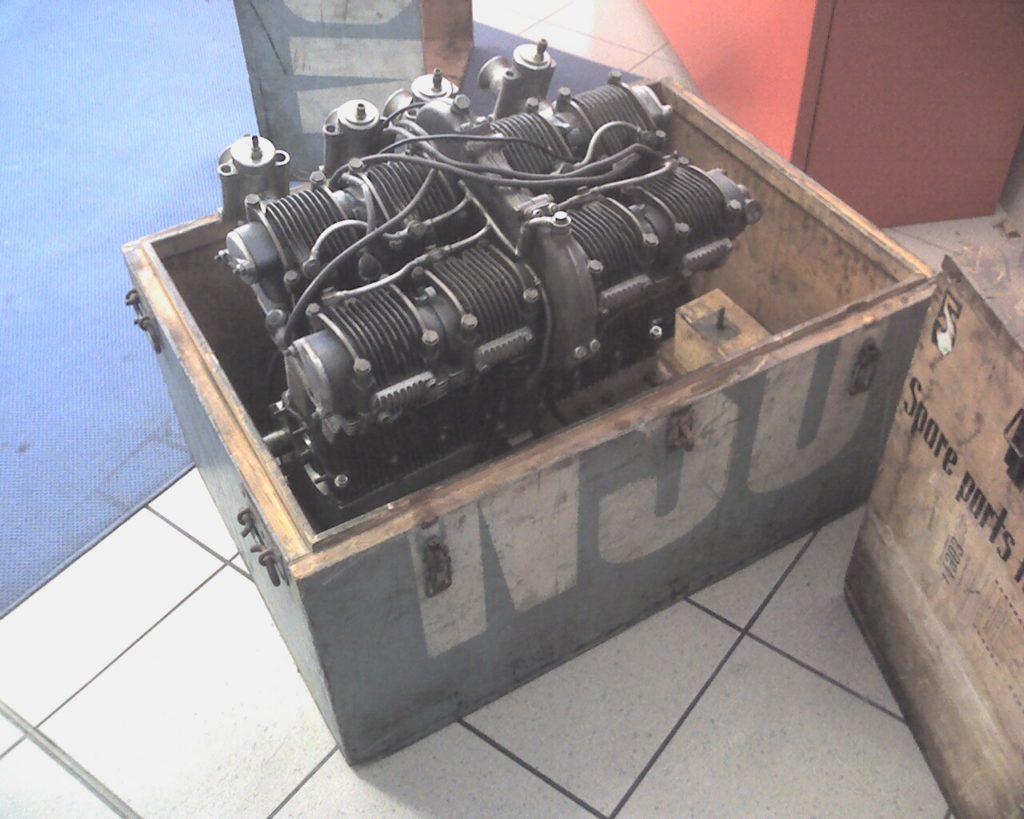
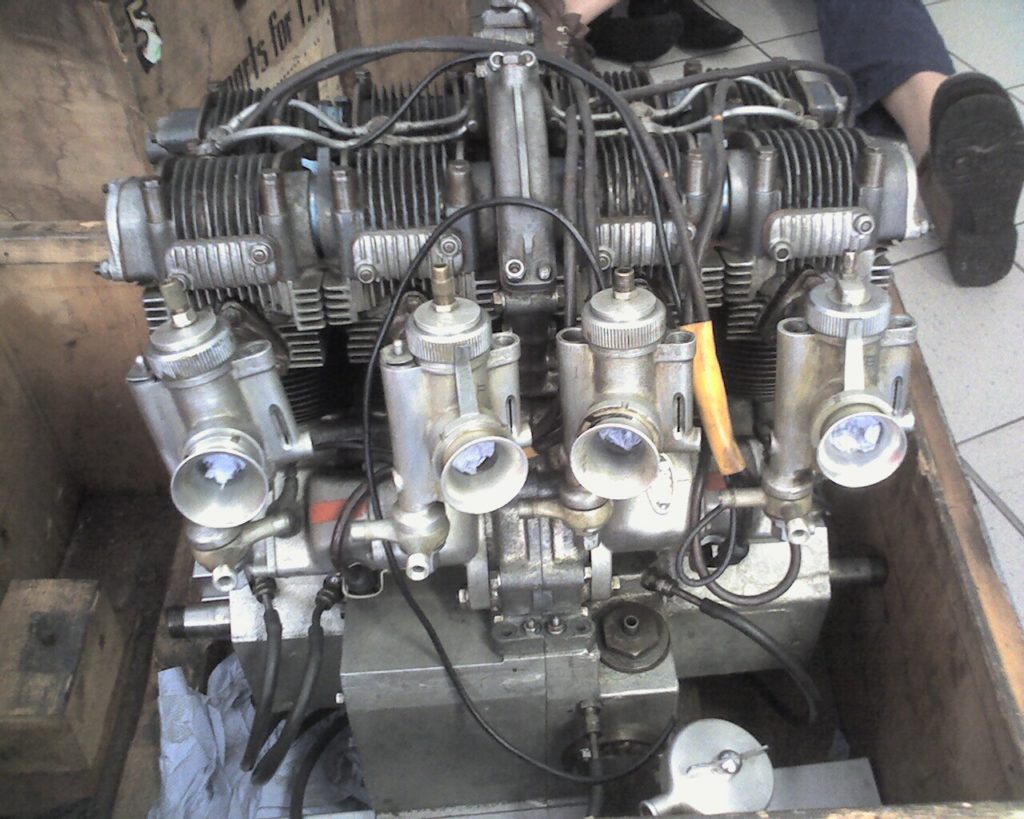
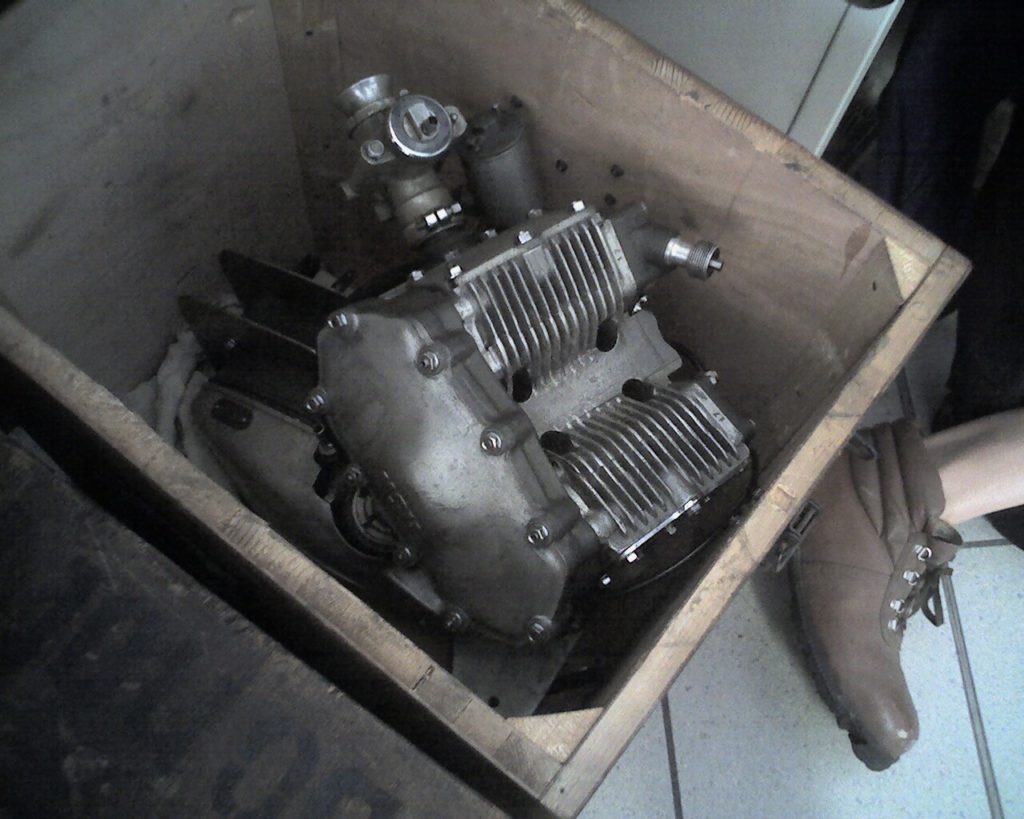

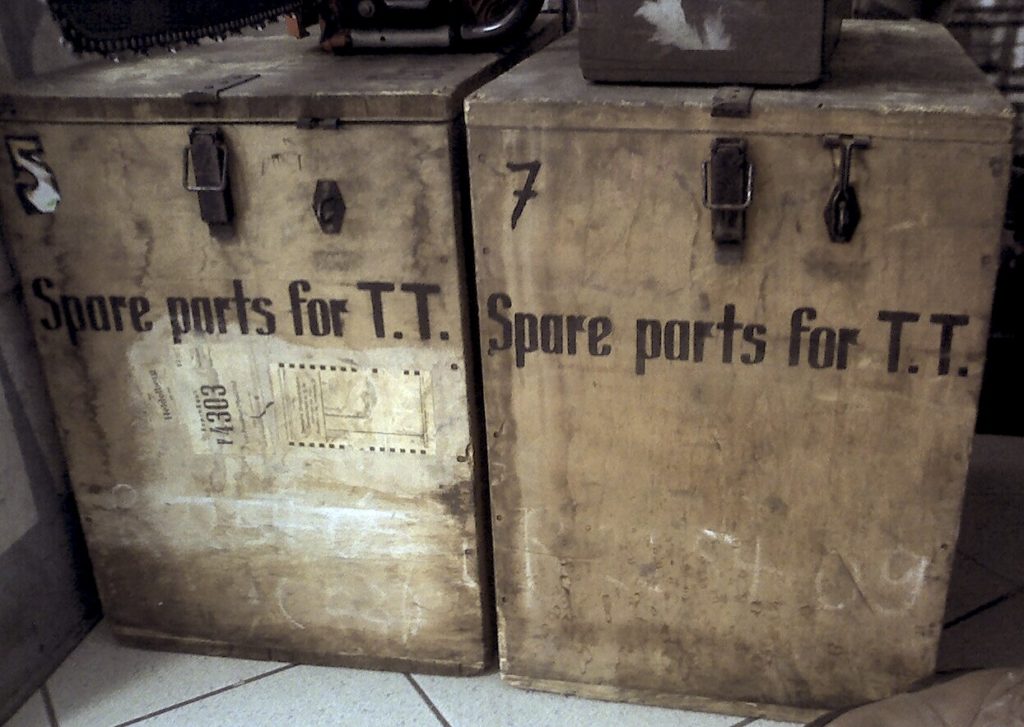

Rocket Cycles! Part 2: Archibald Low
Record-breaking, while a logical use of a rocket-assisted motorcycle, isn't the only possible venue. In 1947 'Professor' Archibald M. Low thought speedway racing in England could use a little boost, and arranged a demonstration at Wembley track, with 90,000 people watching. British motorcycle racer Bill Kitchen was protected by a steel shield over the top of the rocket bodies; the speedway JAP motorcycle used four solid-core rockets, angled downwards (to prevent lift-off, no doubt). Kitchen used switches on the handlebars to ignite the candles, and said 'acceleration was absolutely terrific' when the rockets lit off.
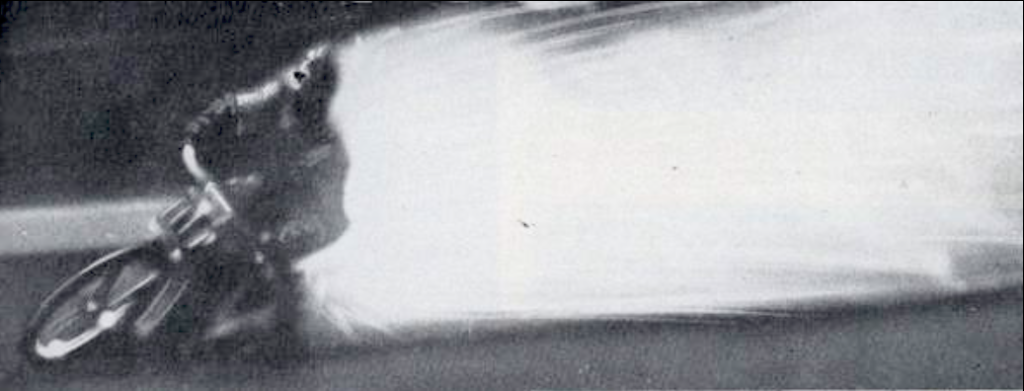
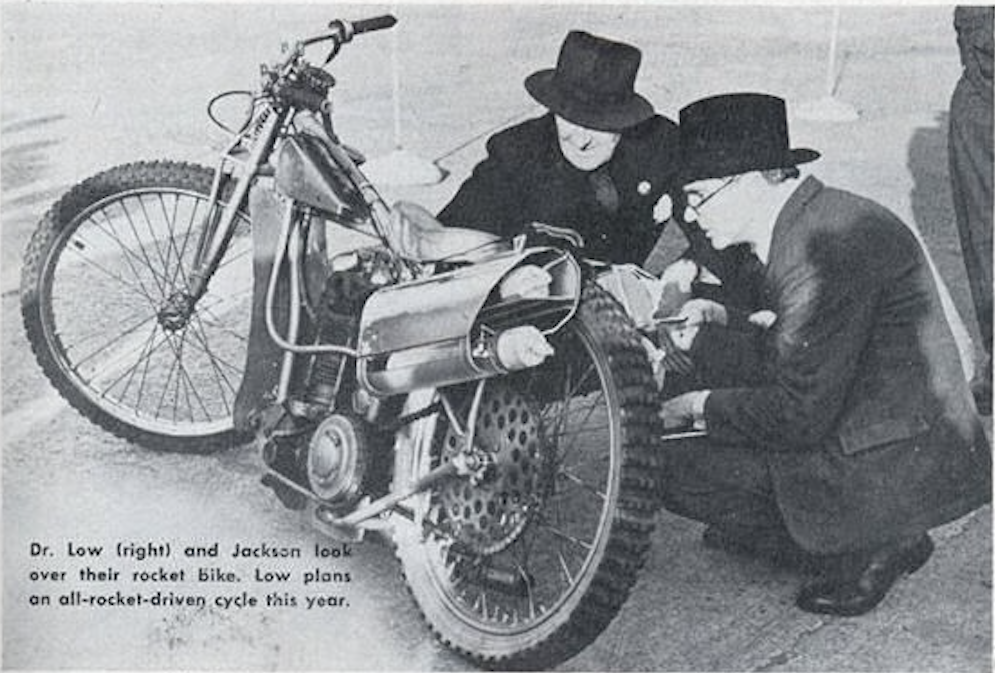
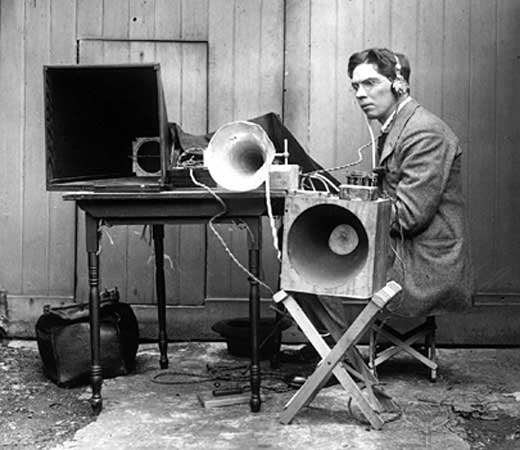
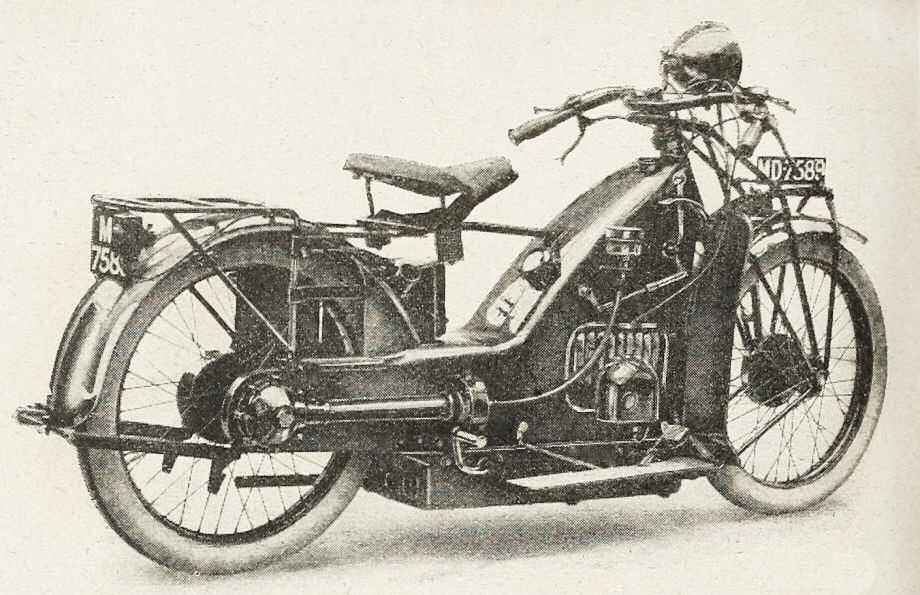
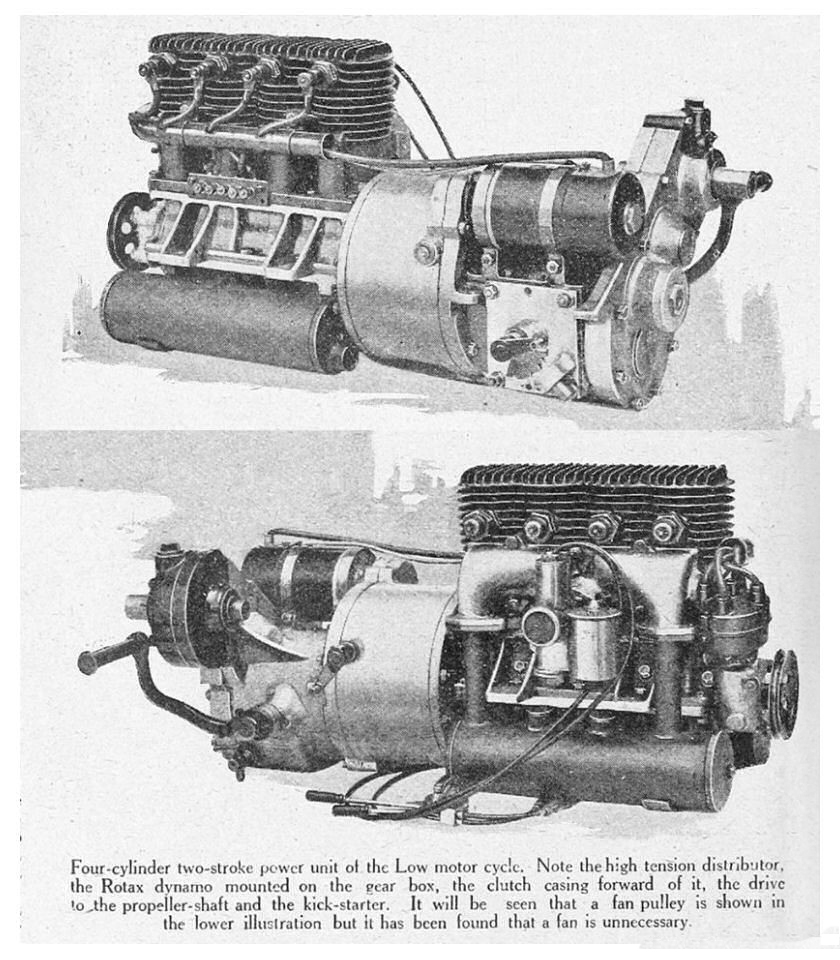

Harry Beanham's Outback ABCs
About 10 years ago, I was offered a collection of photographs, totally out of the blue, by a rare books dealer in Australia. I knew nothing about the photos, or the photographer, other than the set contained shots from the 1920s onwards, of a variety of machines, ranging from ABC and Brough Superior to Velocette, all taken by one Harry Beanham. In later years I came to know a bit about this man who lived in Sydney; his quirky ways, his motorcycles, and his undying love of Velocette LEs.
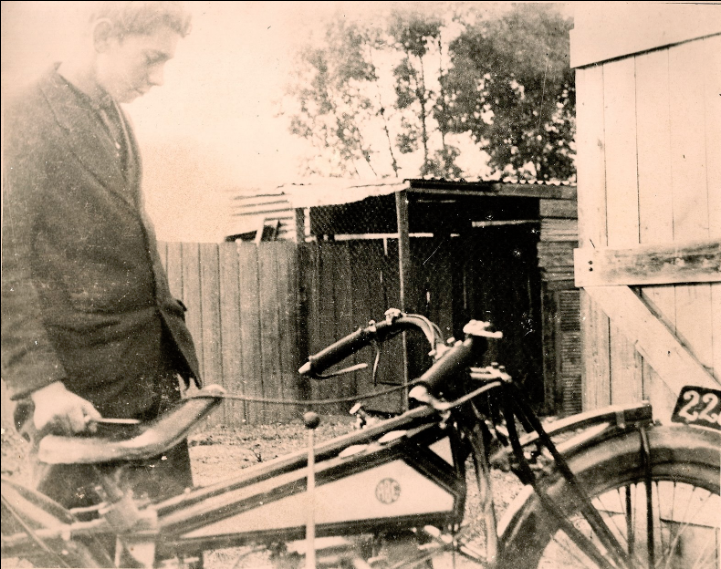
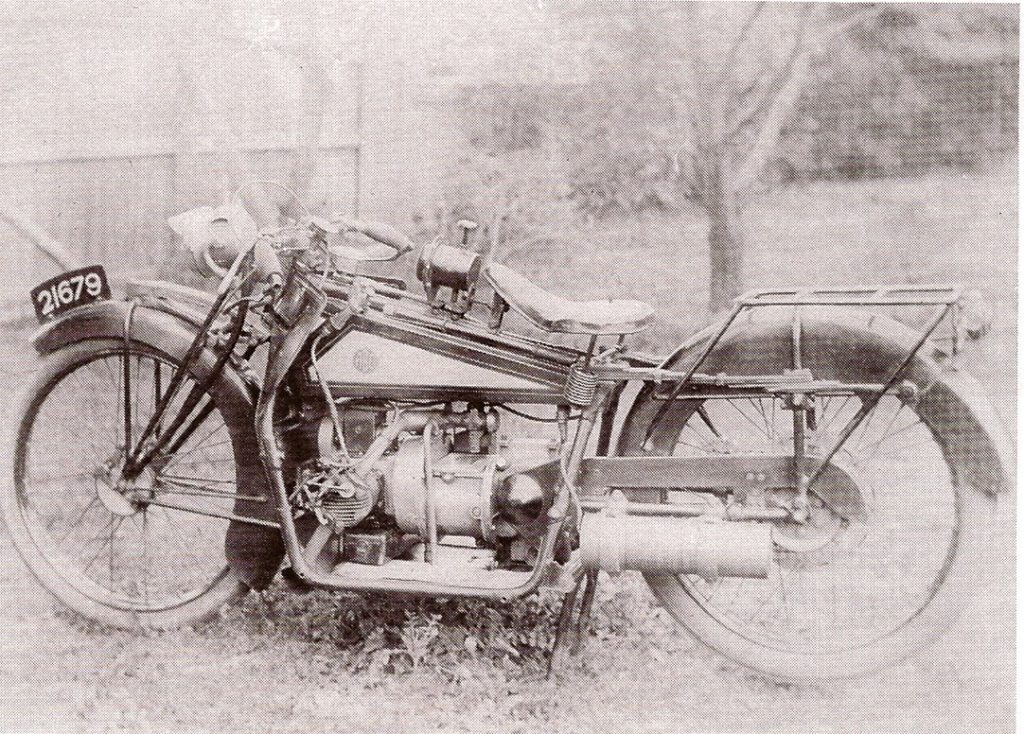
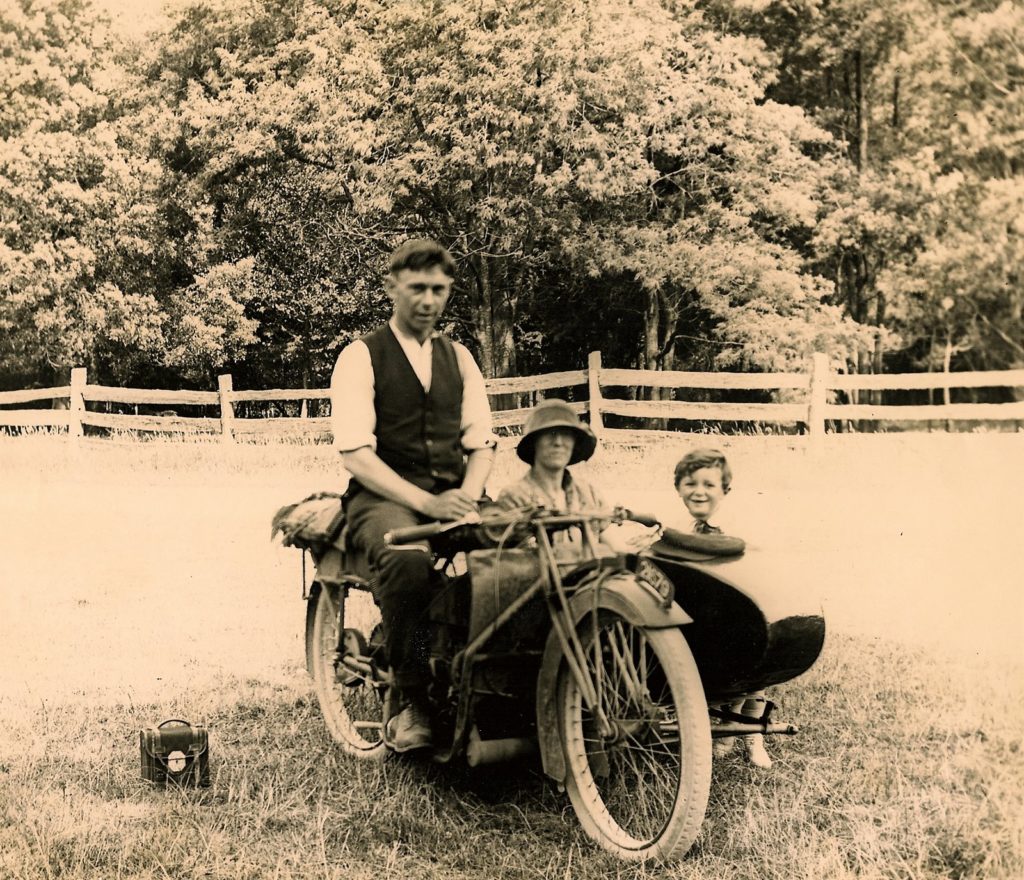
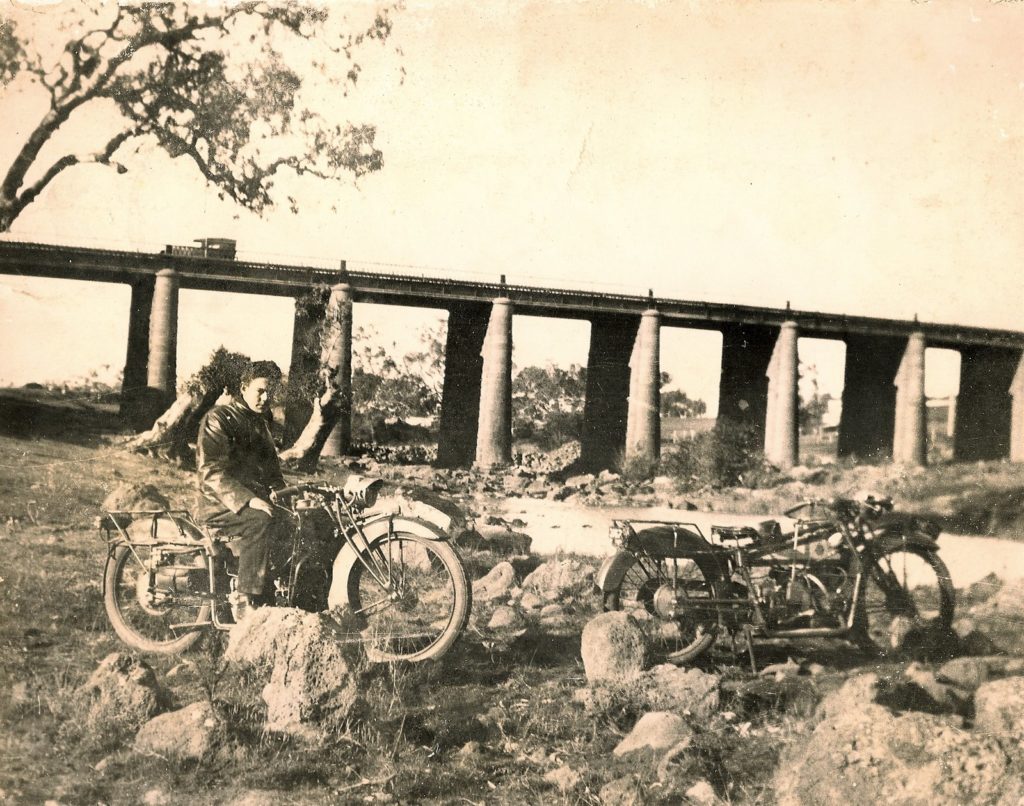
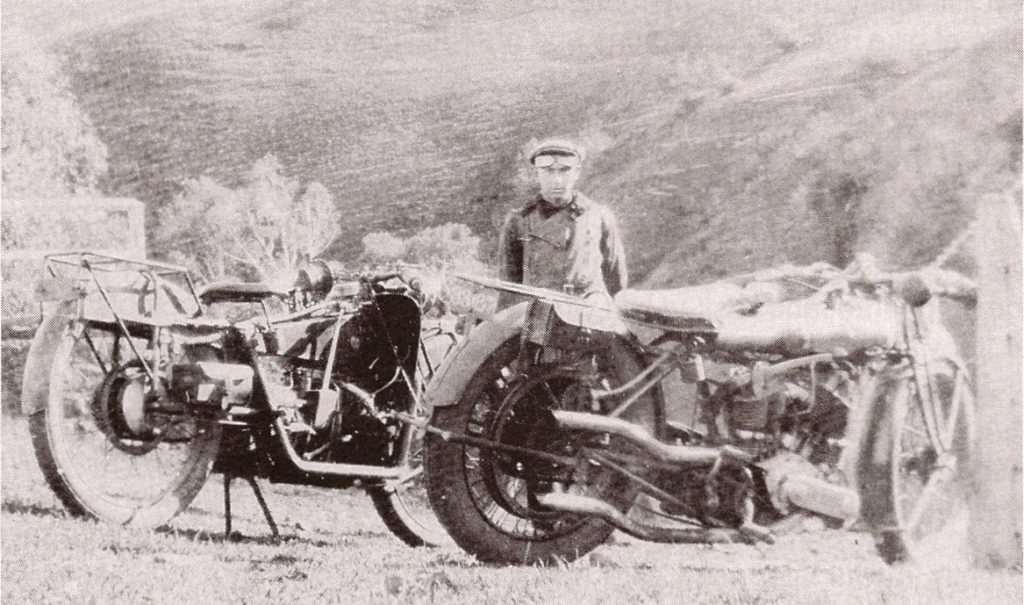
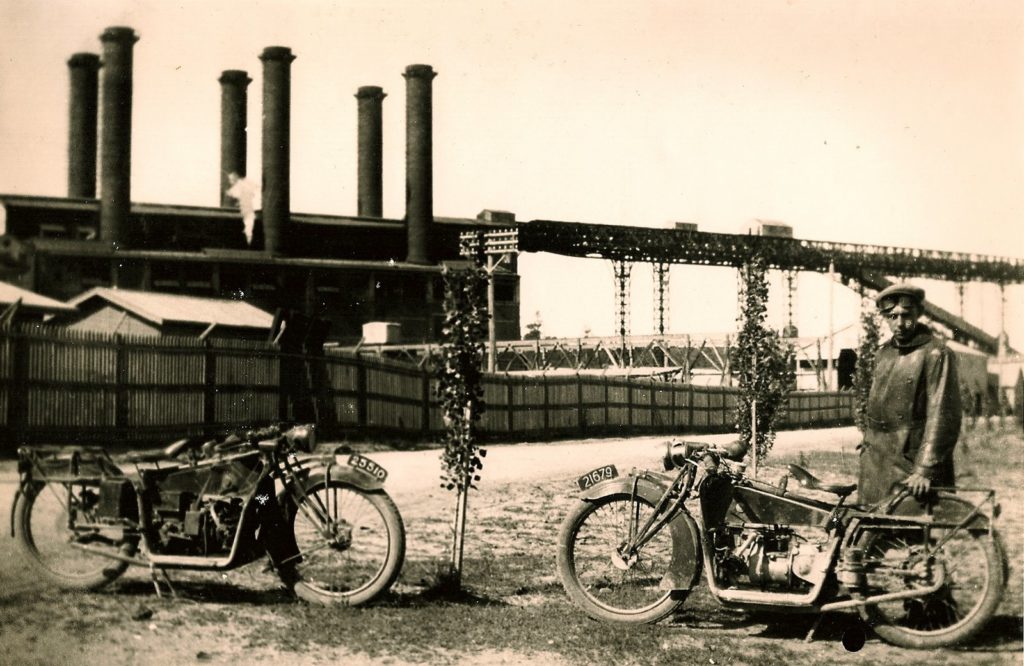
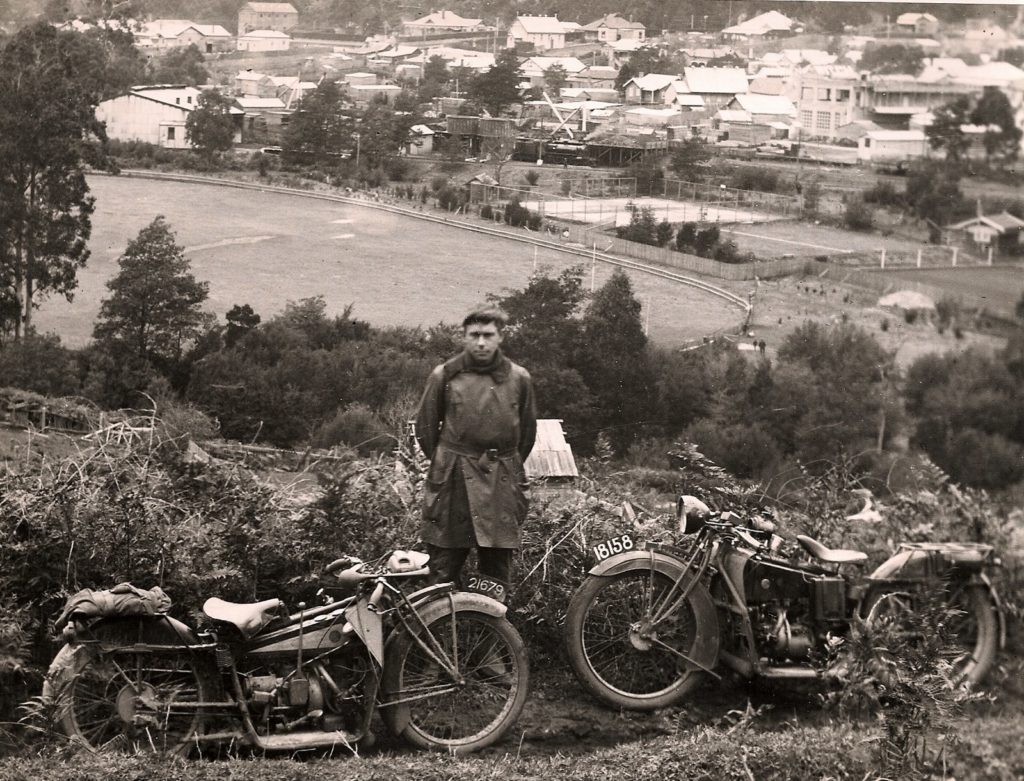
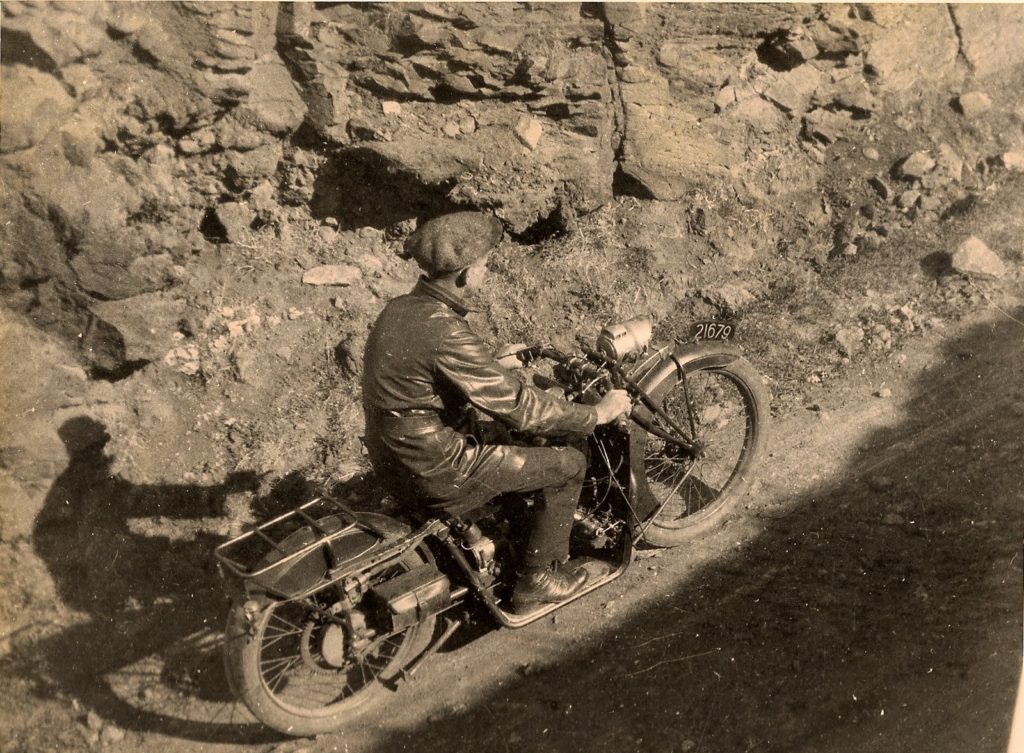
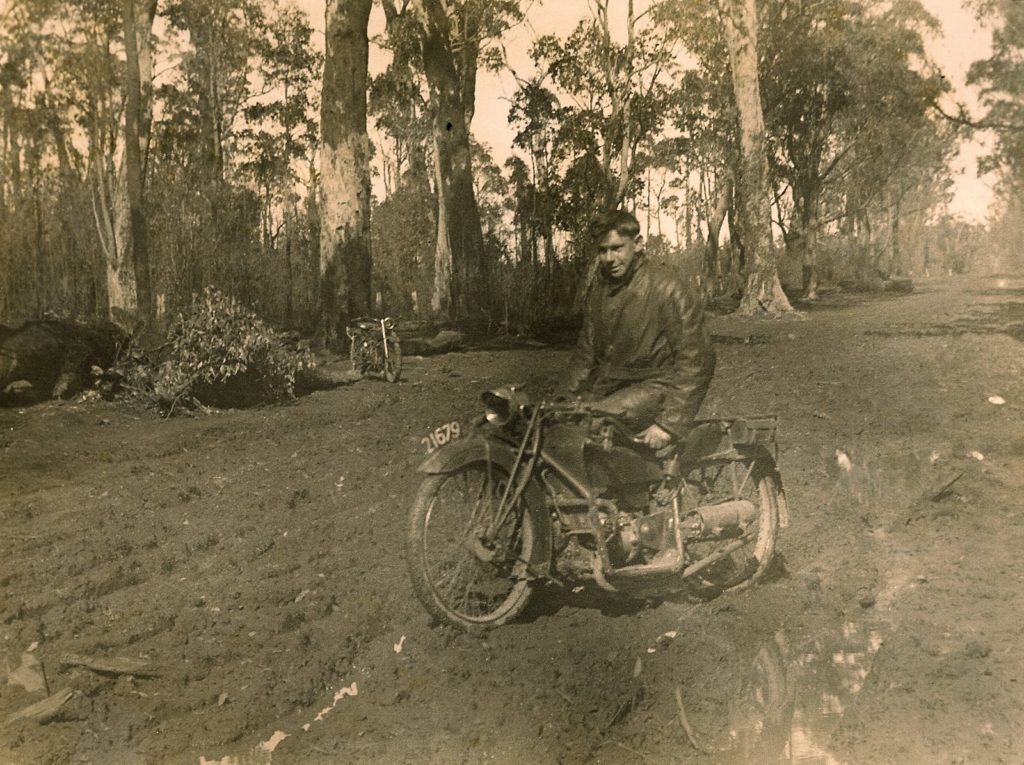
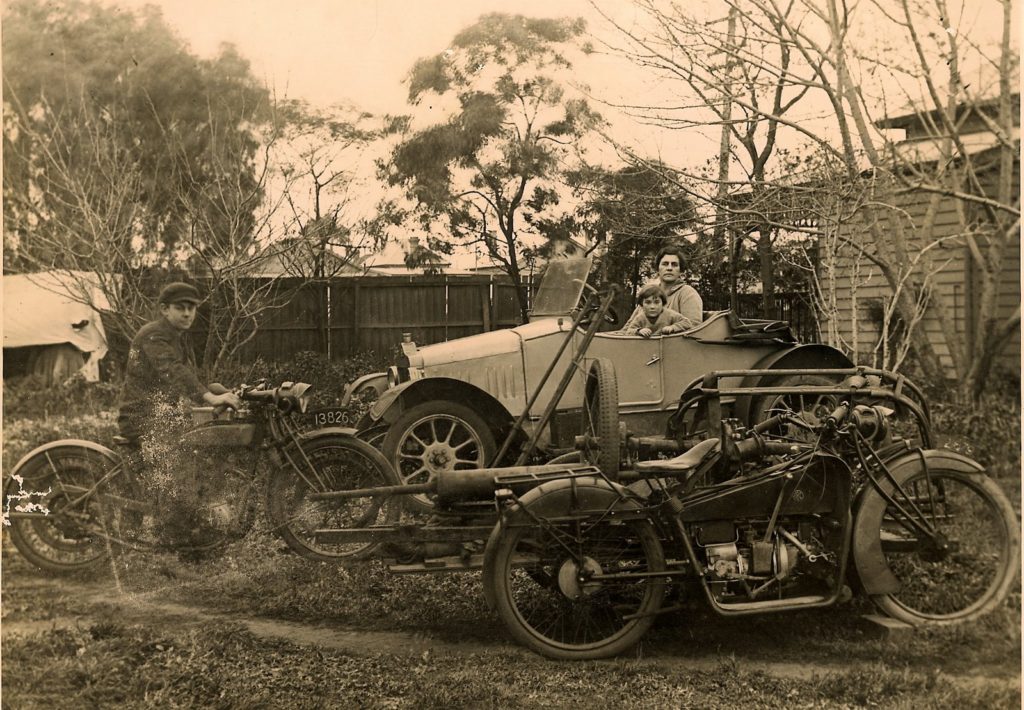
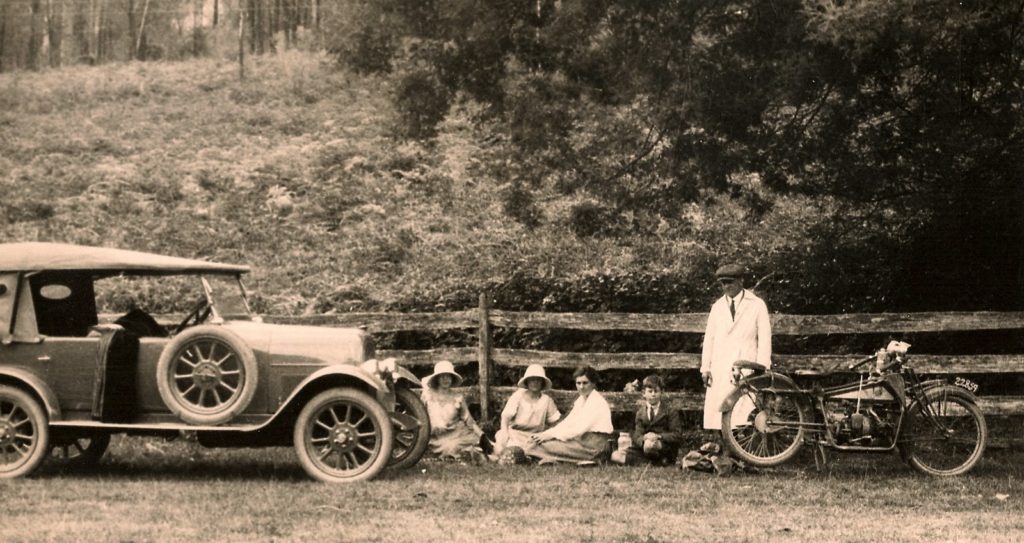

Mod VS Rockers Ride, San Francisco
Mods AND Rockers would be a better description of this event, as the animosity between these groups got left behind somewhere in the 1960's, and an awful lot of classic bike owners have scooters in their garage! I've been guilty as well, with Lambretta, Vespa, and Velocette scooters having sat alongside my motorcycles. The charms of a scooter are undeniable, which is why they endure in popularity nearly 100 years after their invention (the 1920 Unibus nailed the form).
The setup of the Mod VS Rockers Ride is simple; Mods meet at one end of the Embarcadero (Red's Java Hut) in San Francisco, the Rockers congregate at Pier 23. All riders mill around and socialize until the appointed minute, then it's time to GO. We pretty much have traffic our own way for the next couple of hours, blowing off stop signs/lights in a swarm, with our mutual goal a timed meeting in the middle of the Stockton St. Tunnel, where a few minutes of mayhem commences, before the whole troupe dispersed in advance of any police action. Hooligan fun, nobody gets hurt, no fighting no biting!
Here's my video of the Tunnel meetup. Yes illegal and inconveniencing traffic, but only for a few minutes, once a year...
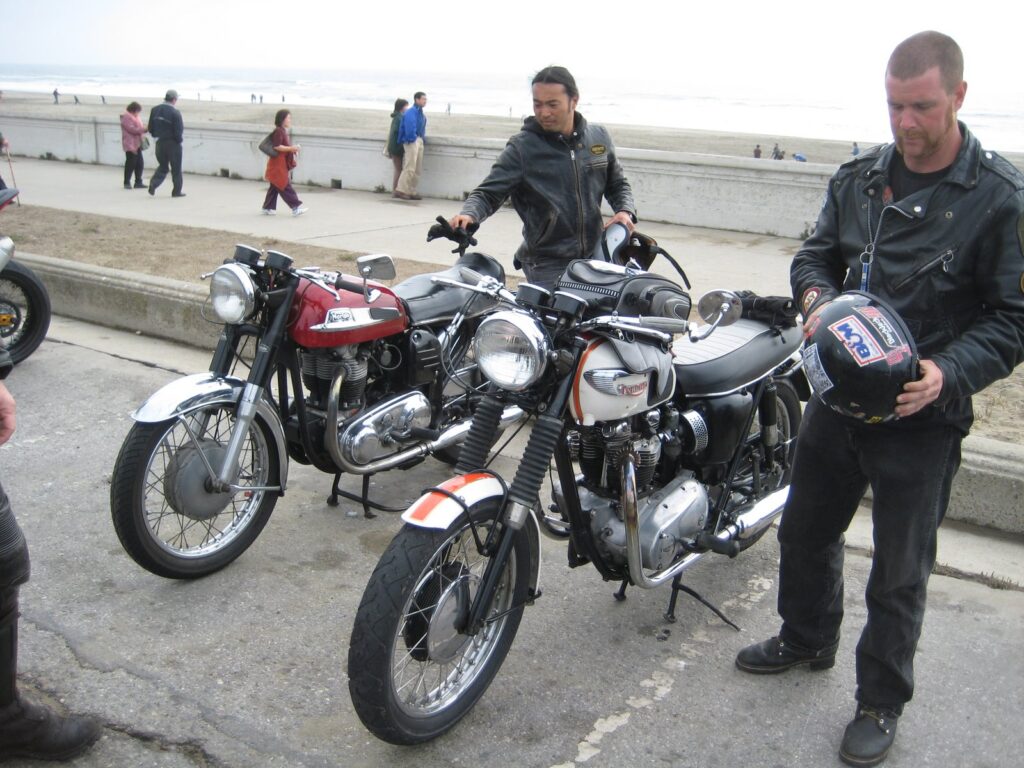
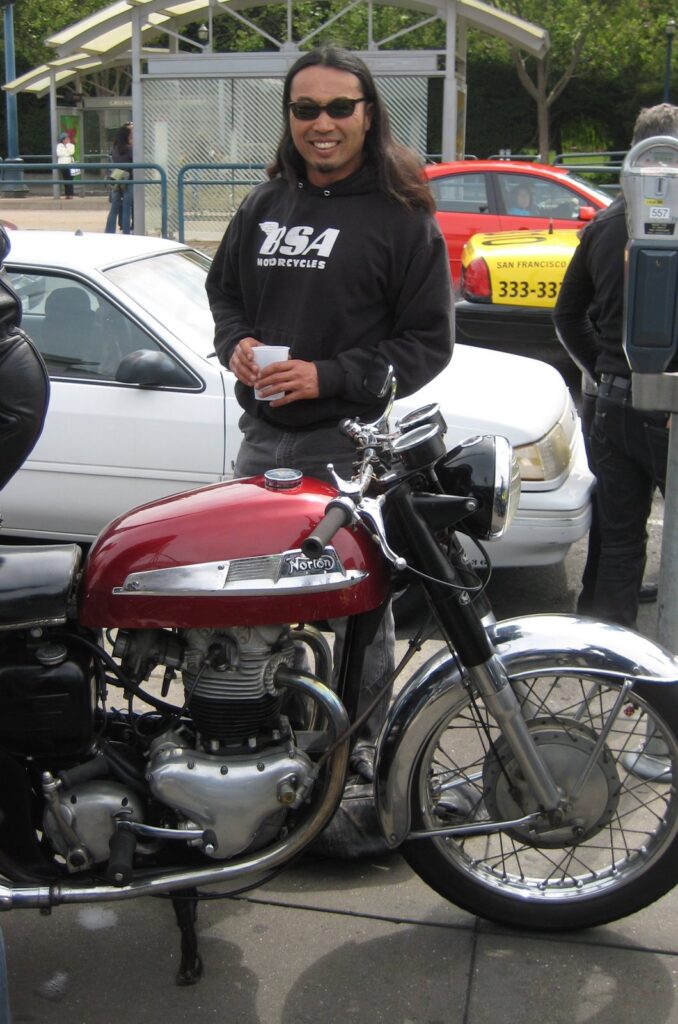
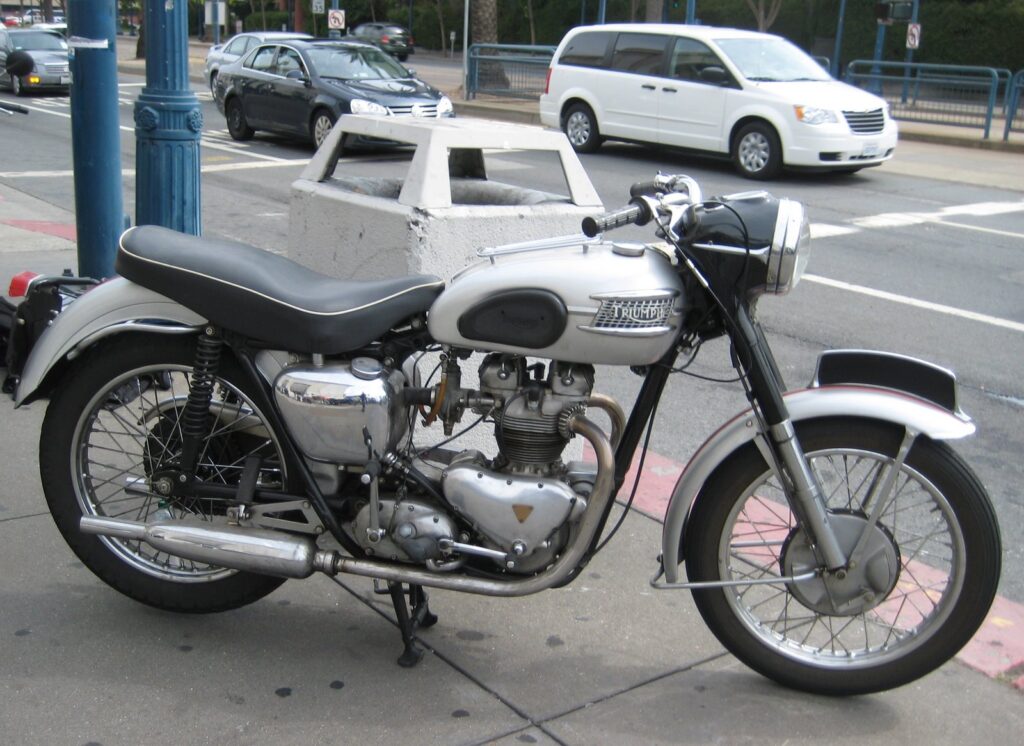
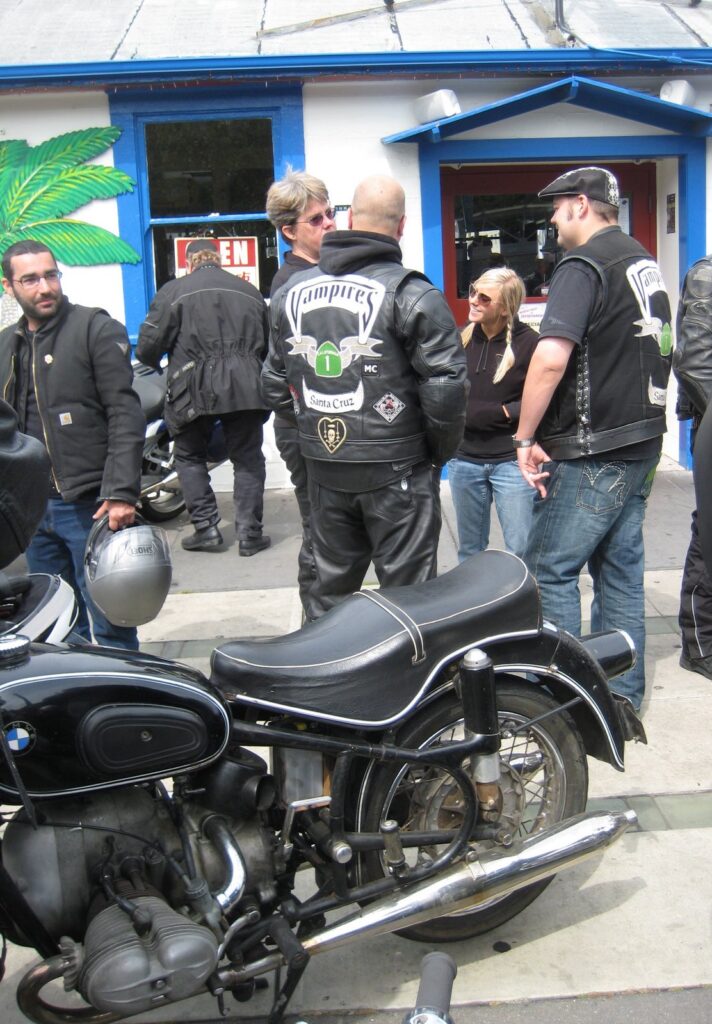
I hadn't seen Danny's Triton before, which is built from a unit Bonneville engine in a Slimline Featherbed frame. Some interesting contemporary features include the plastic rear fender (front from a Ducati?) and Harleyesque headlamp. Sounded great.
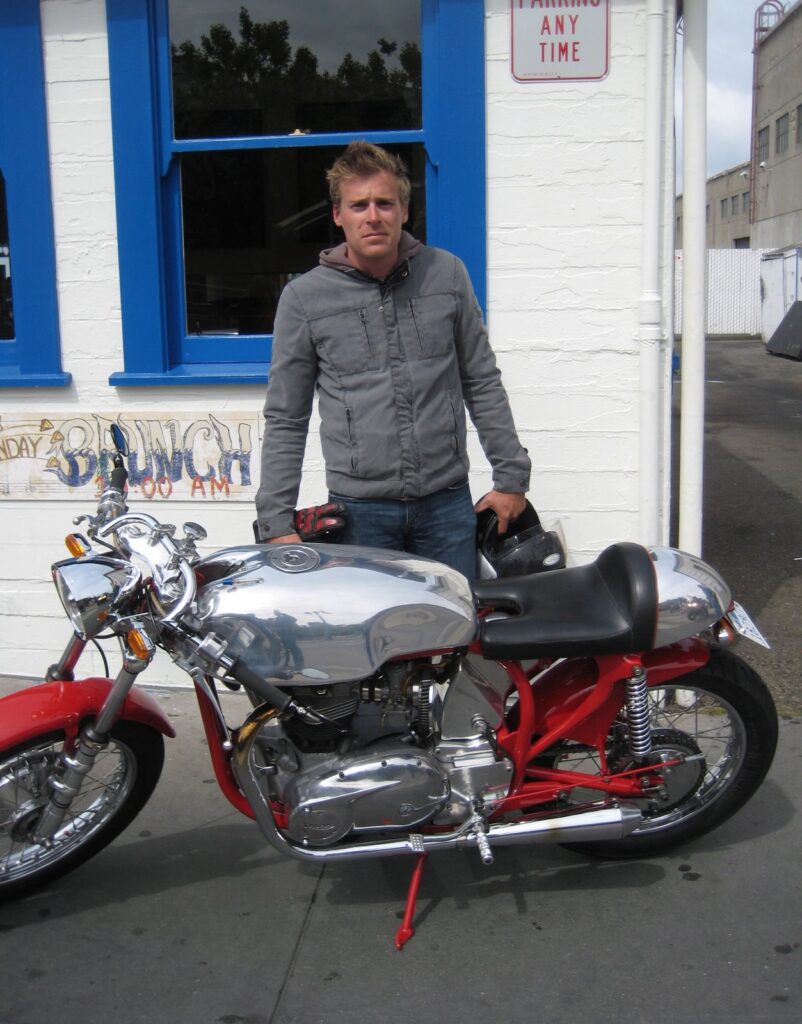
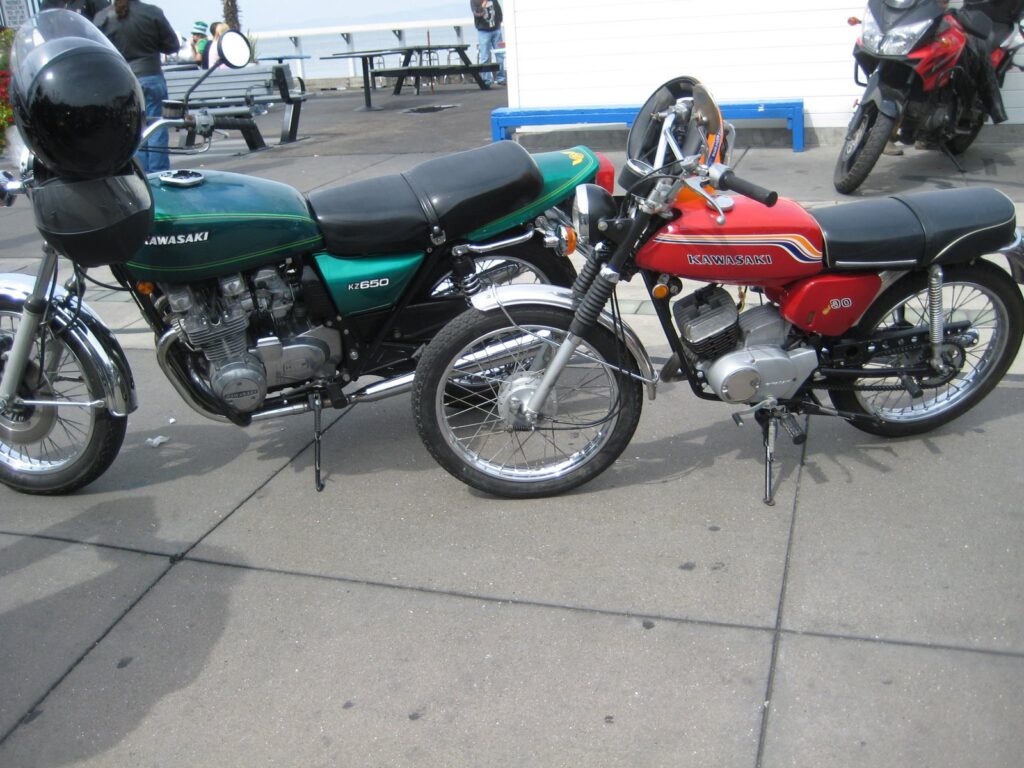
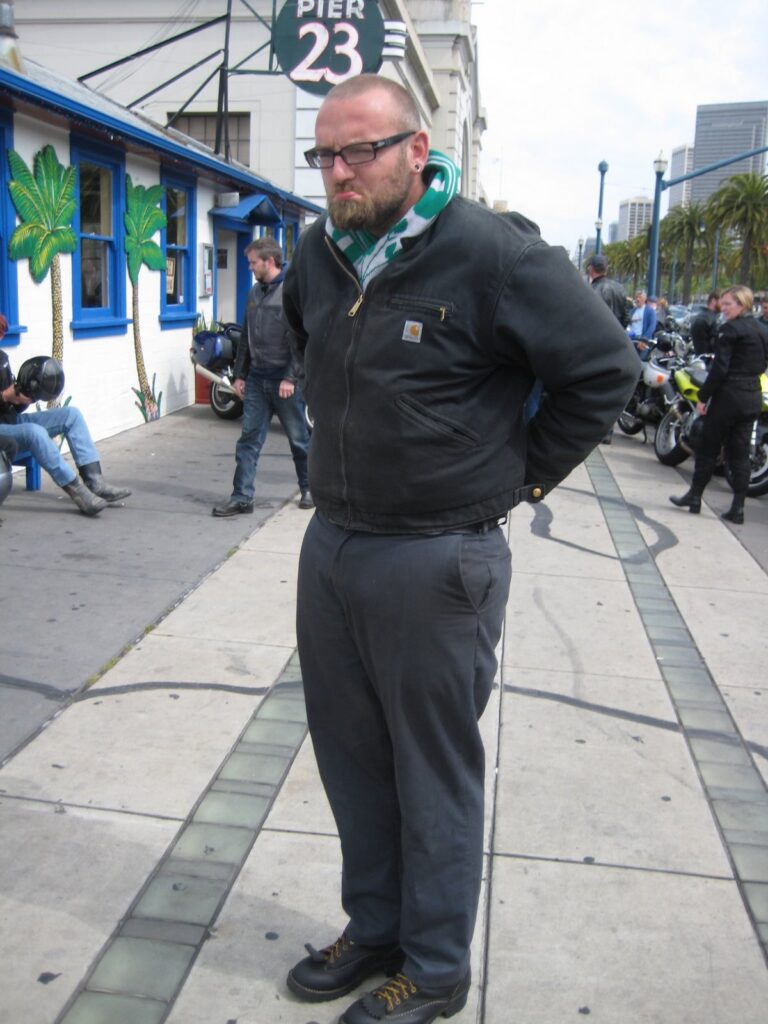
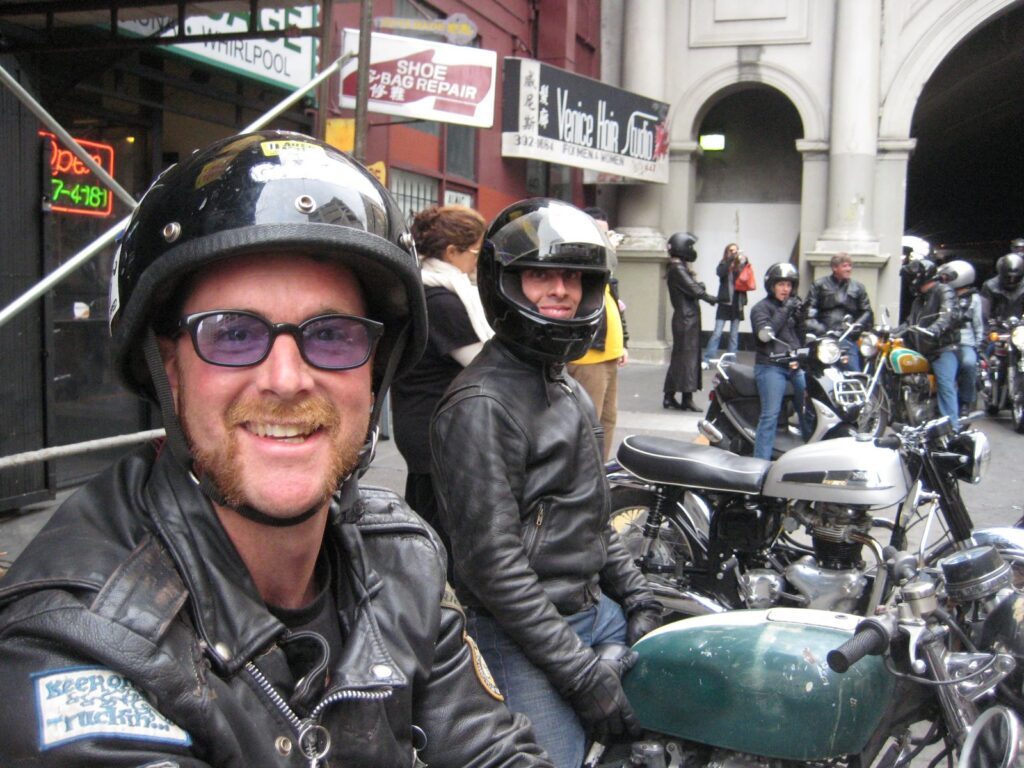
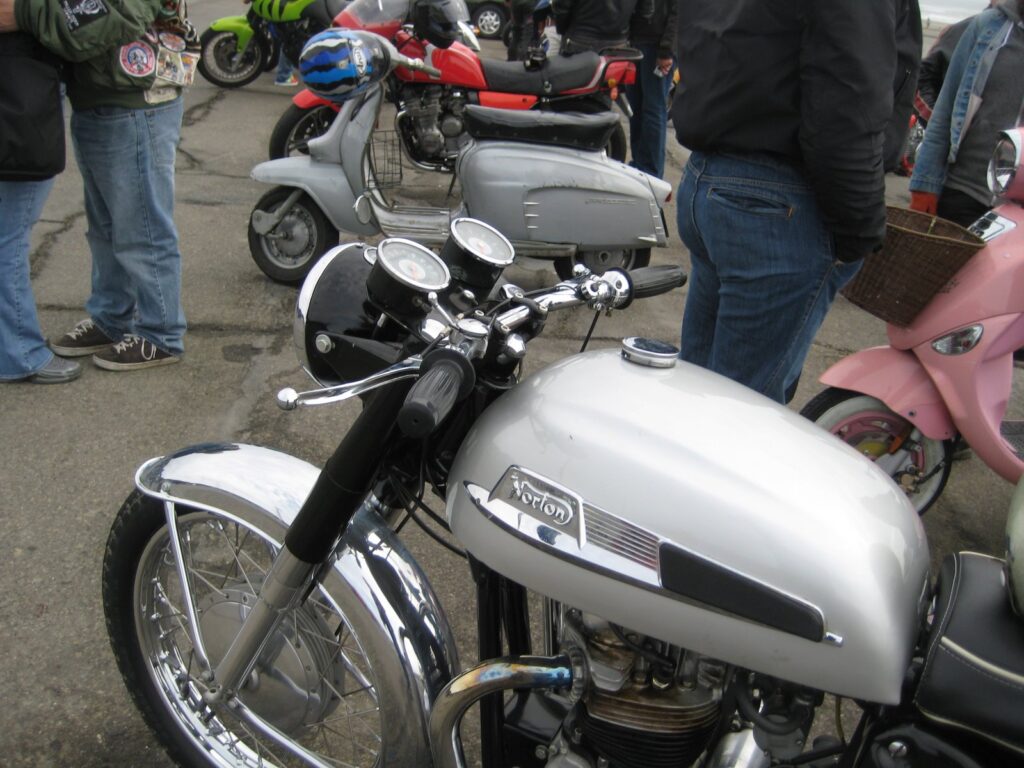
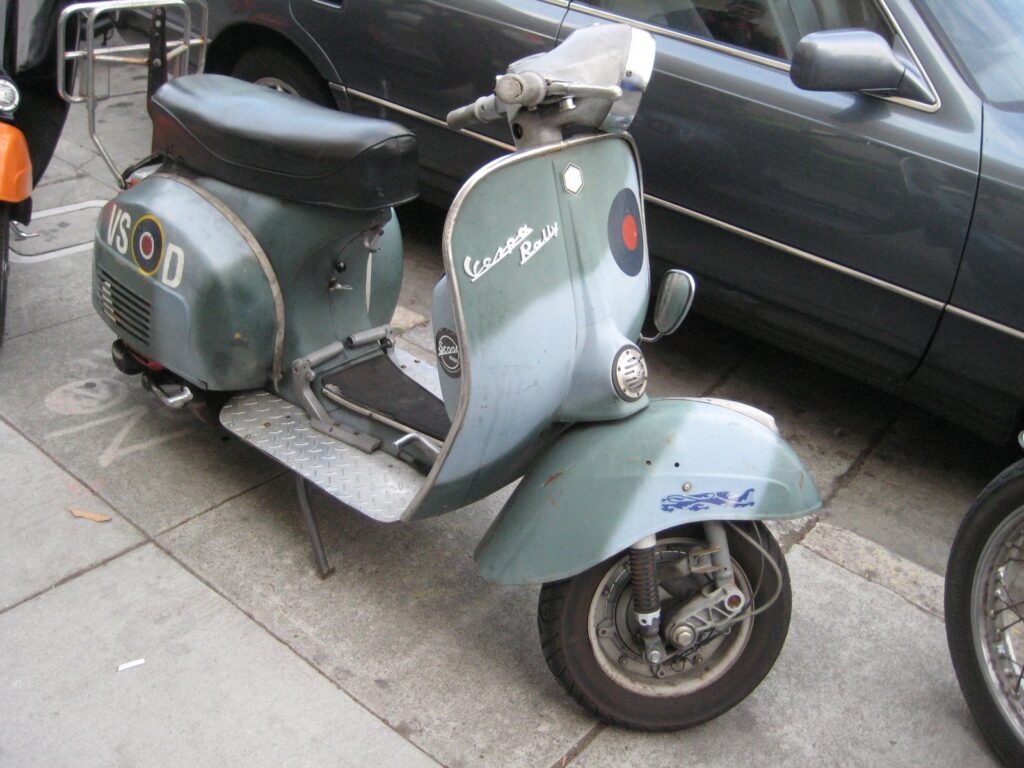
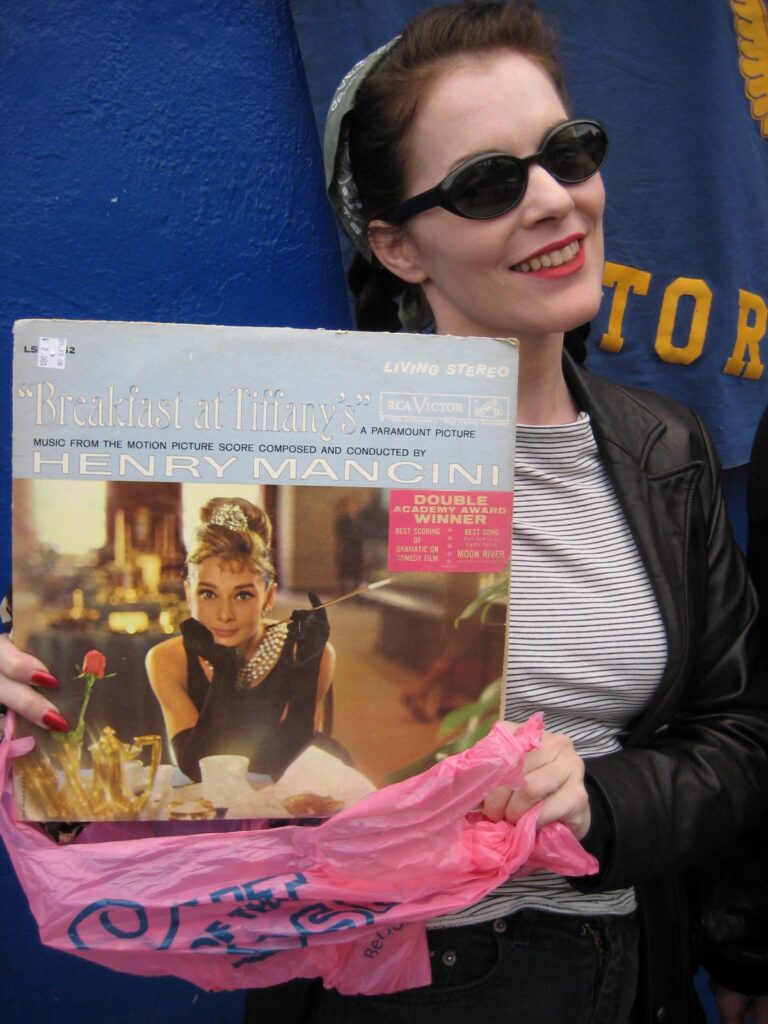
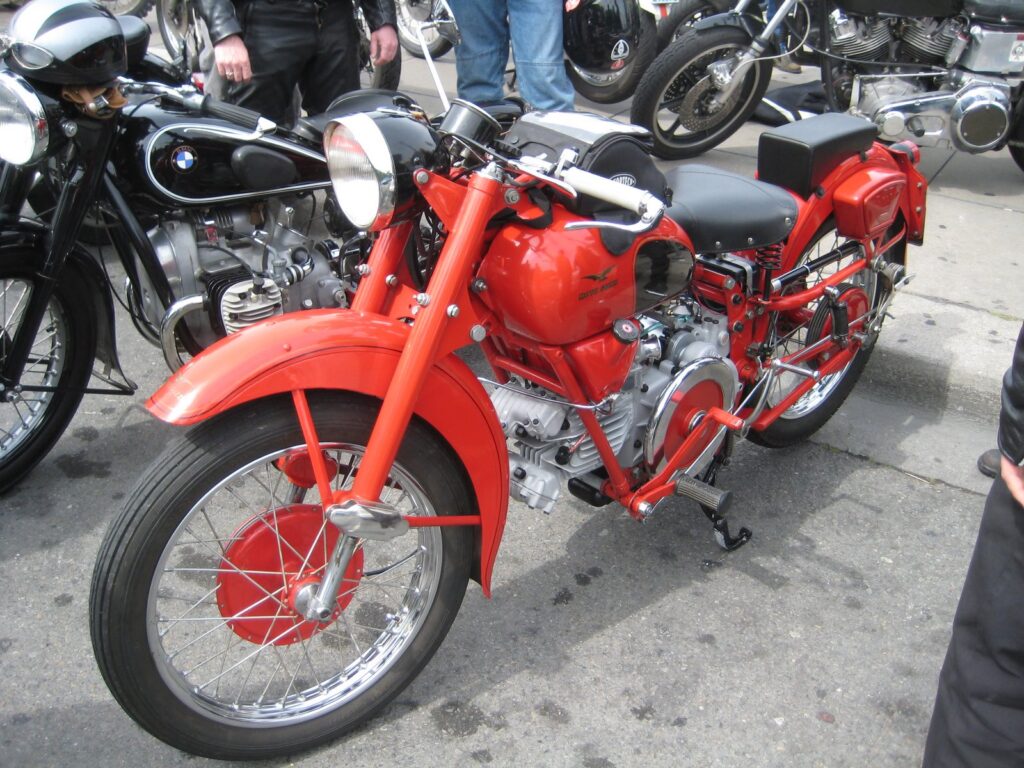
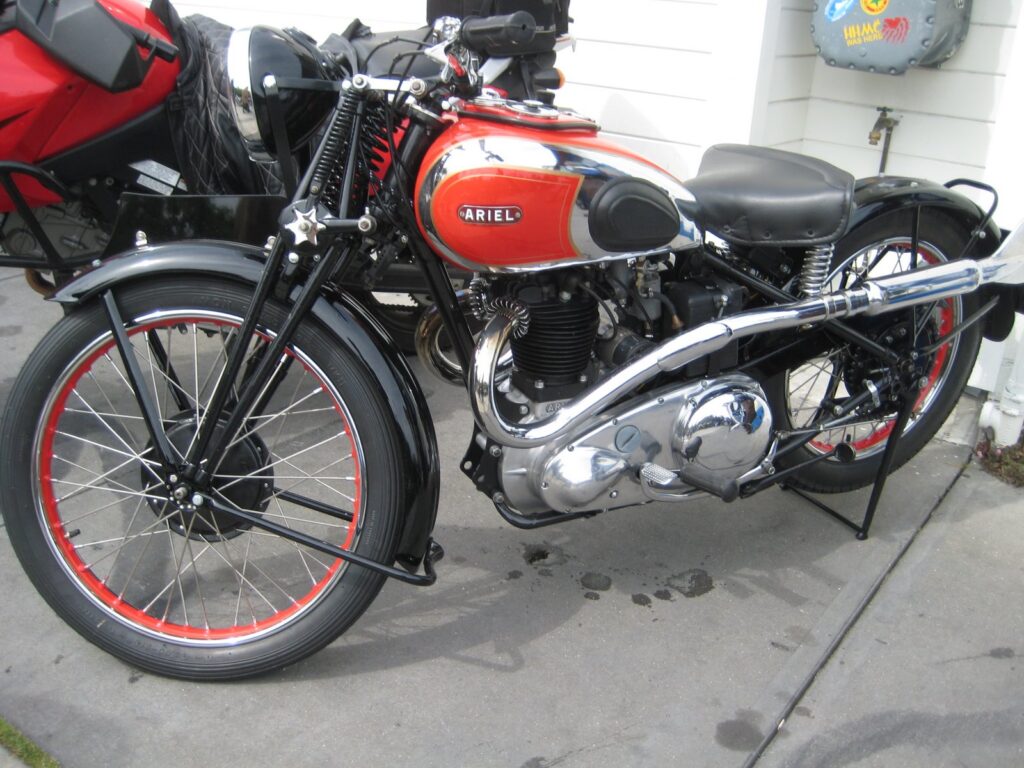
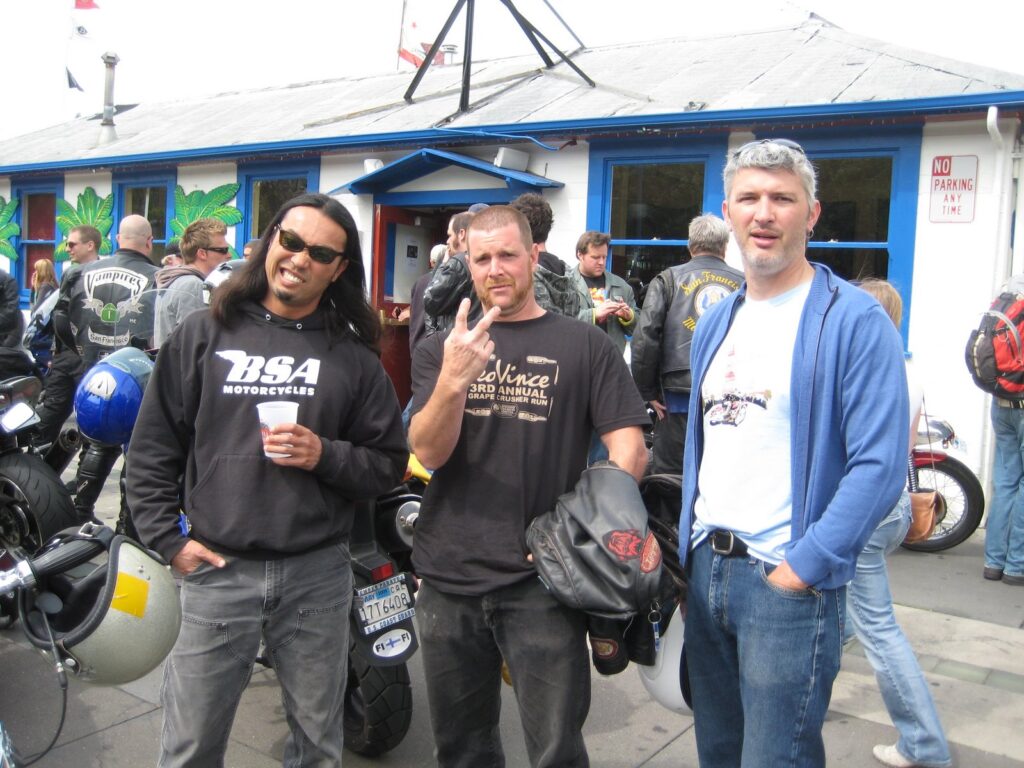
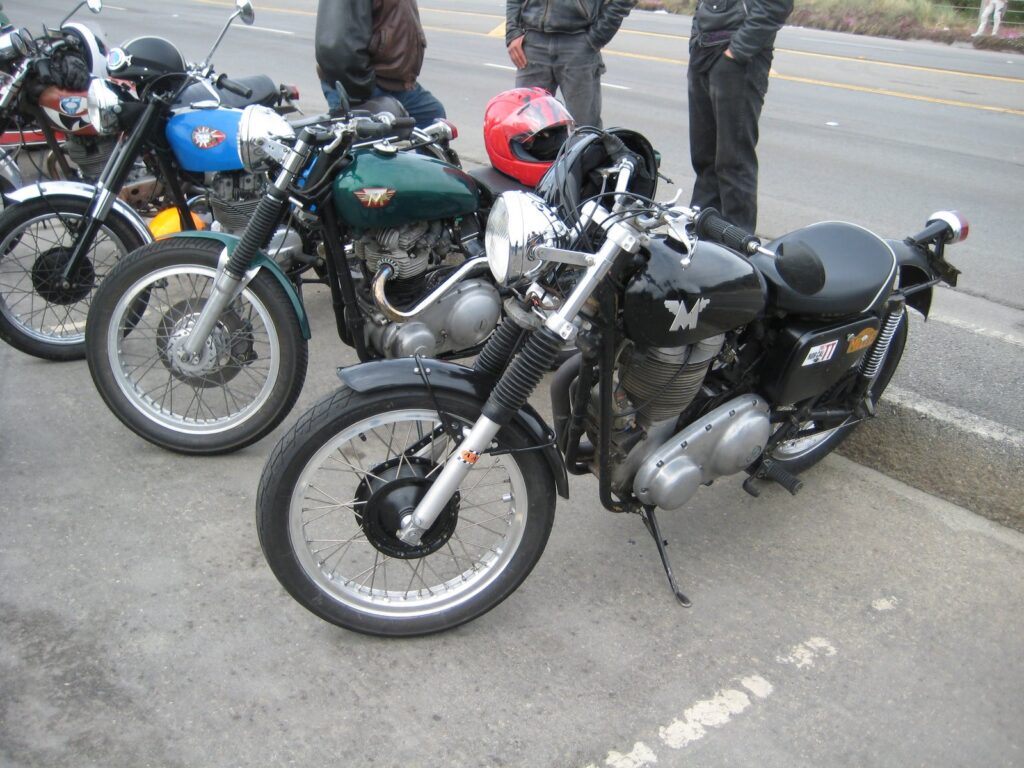
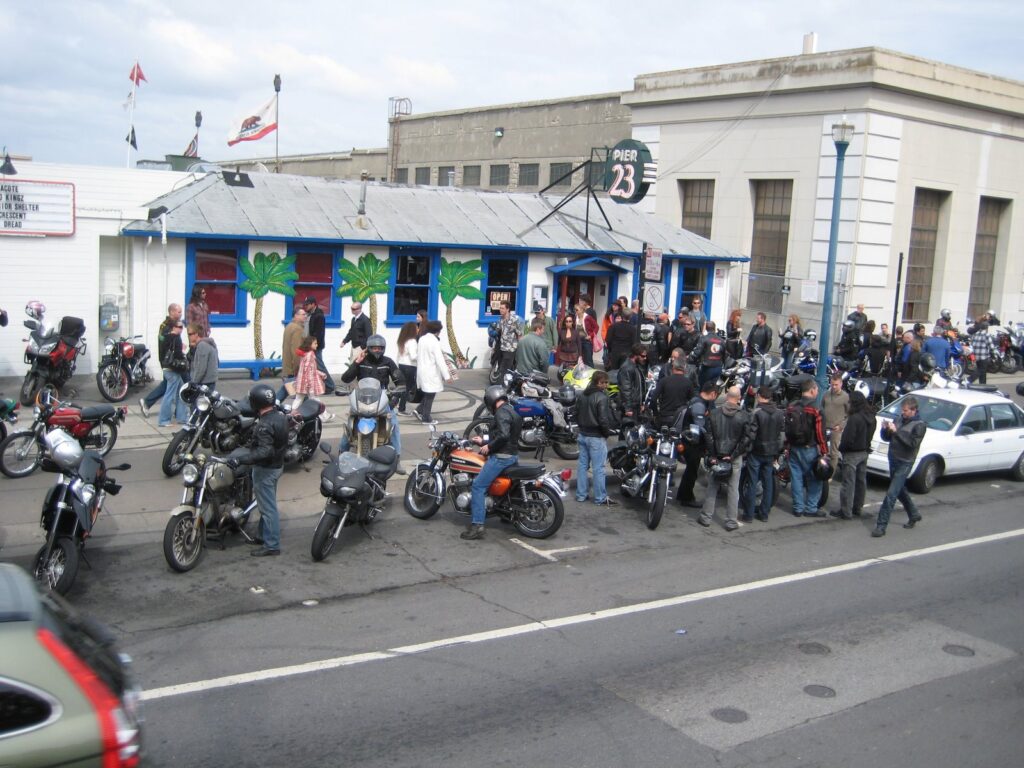
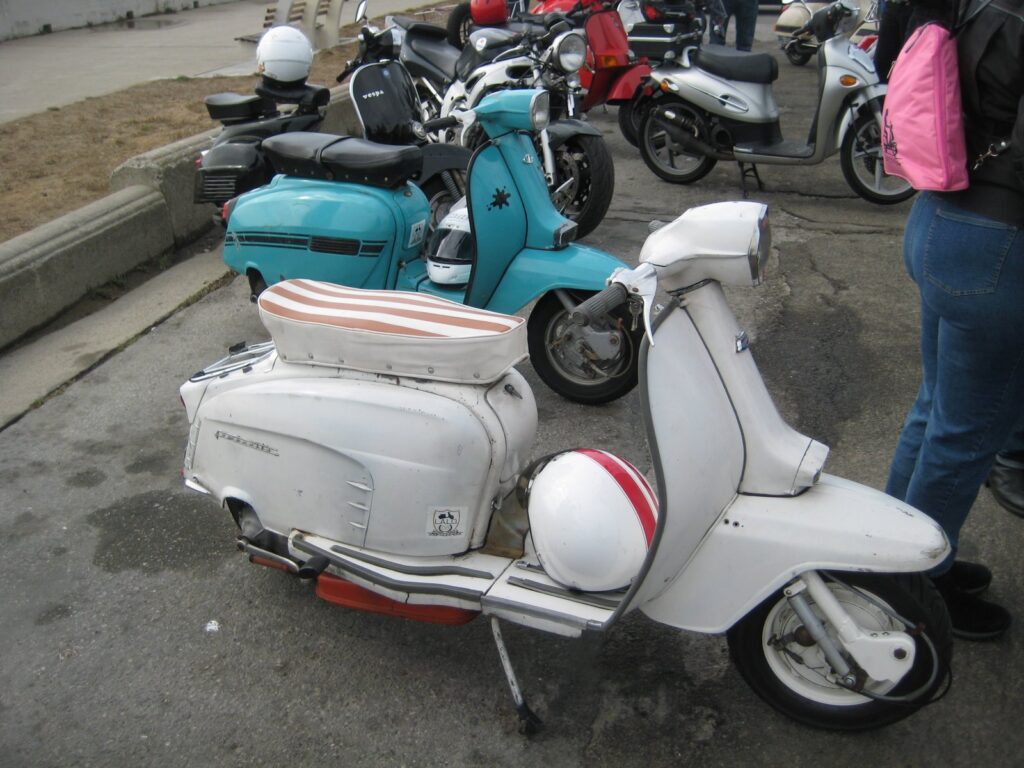
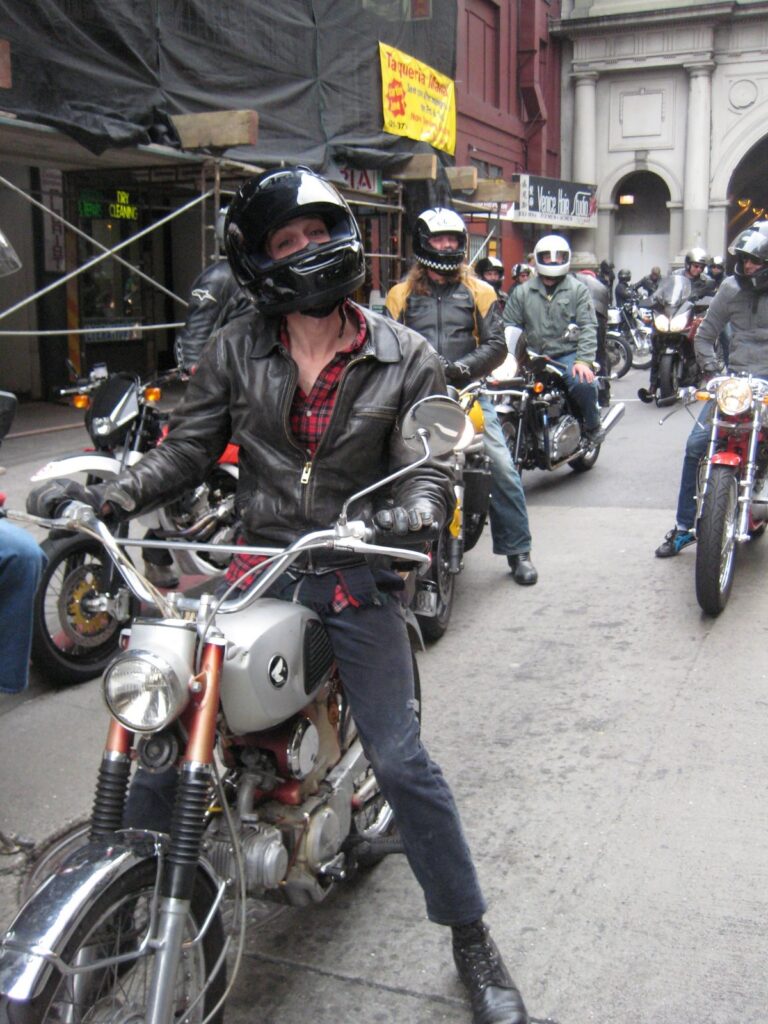
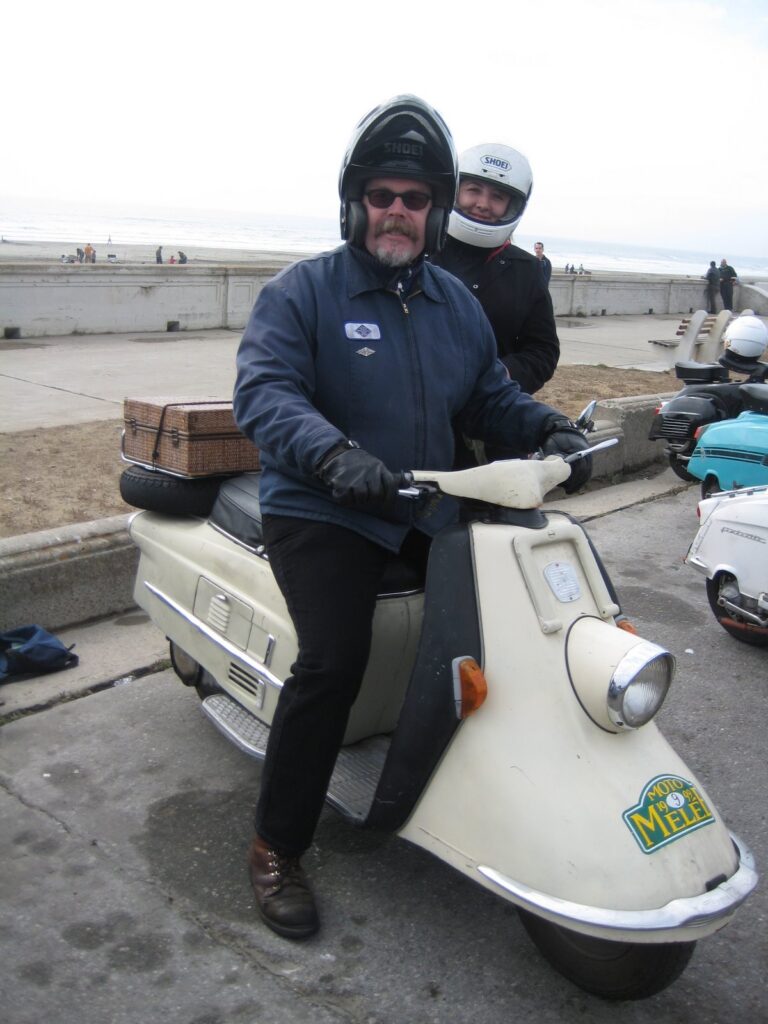

Conrad Leach at the Legends of the Motorcycle
Each year at the Legend of the Motorcycle Concours, an artist is given a conference room at the Ritz to display motorcycle-related paintings or sculpture. Last weekend the room was occupied by the paintings of Conrad Leach, pictured beside his portrait of Peter Fonda (in his Wild Angels role). As you can see, the paintings are large scale (8' - 10' tall), and beautiful; Conrad had a 5-year contract as artist in residence for Louis Vuitton in Tokyo, and is now branching out, and selling his paintings at galleries and at exclusive shows. There is no other artist I know of working today who possesses such a refreshing orientation to motorcycle subject matter. His sensibility is unique, his painting skill exceptional, and his style will undoubtedly impact a generation of young artists tackling the relationship of men to machinery.
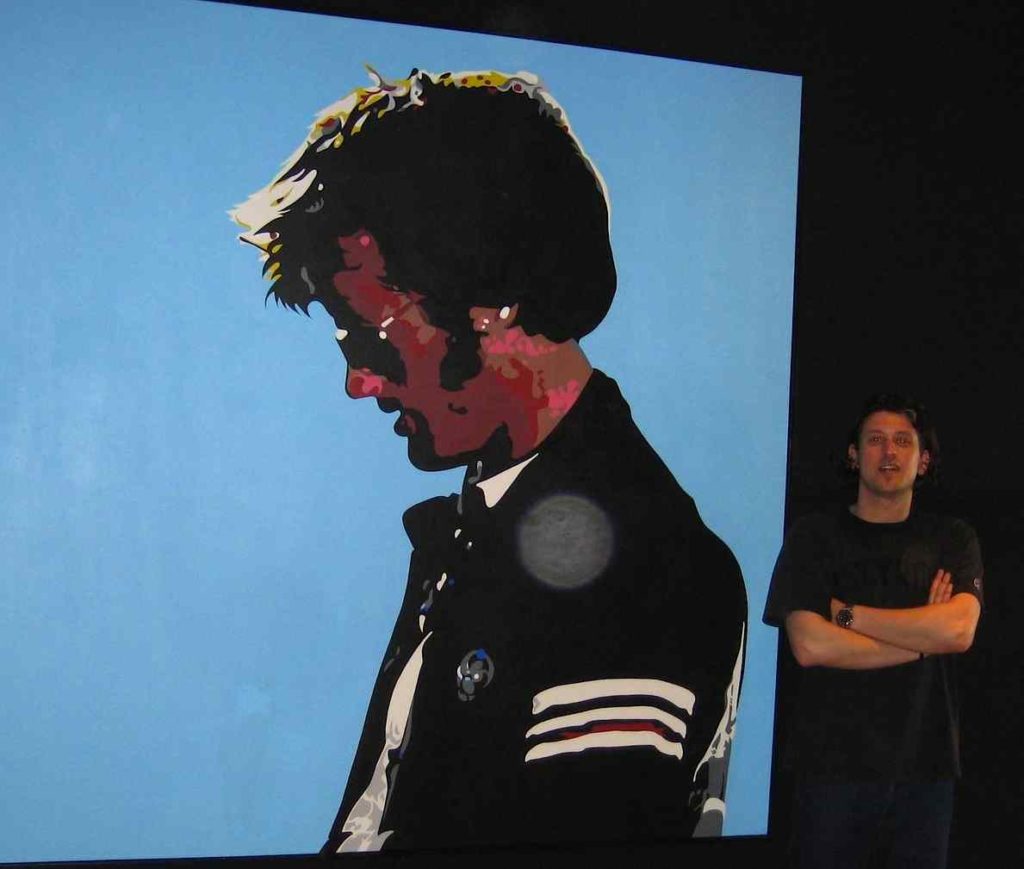
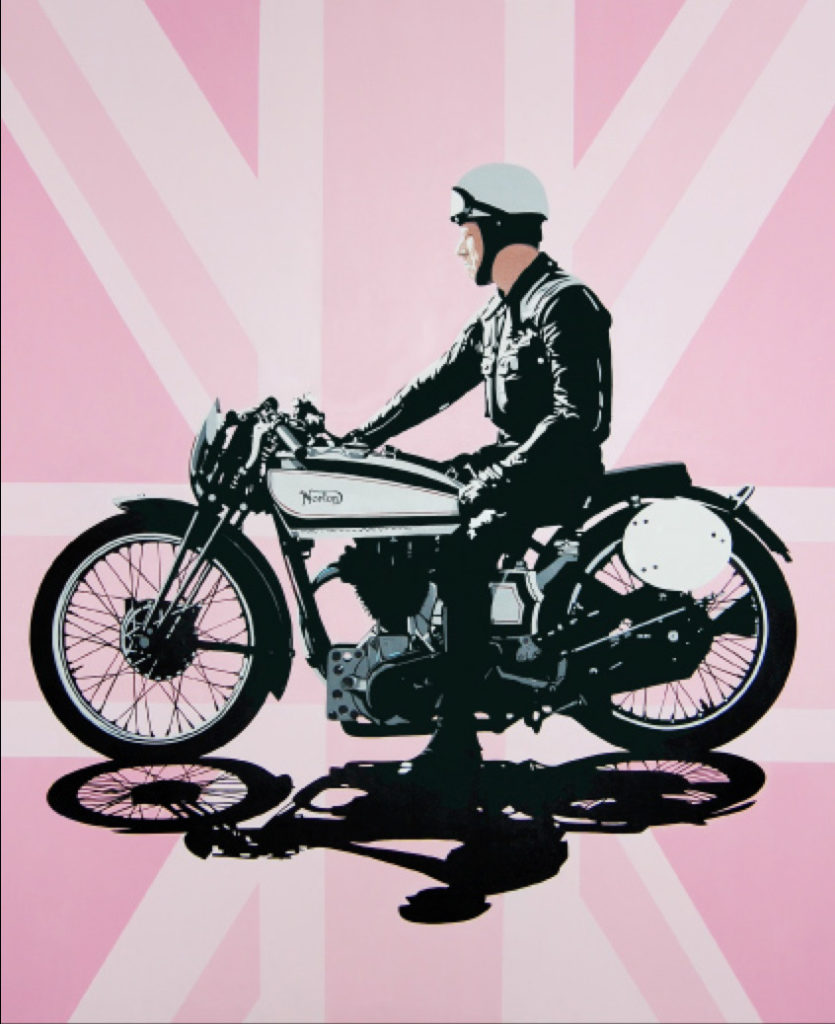
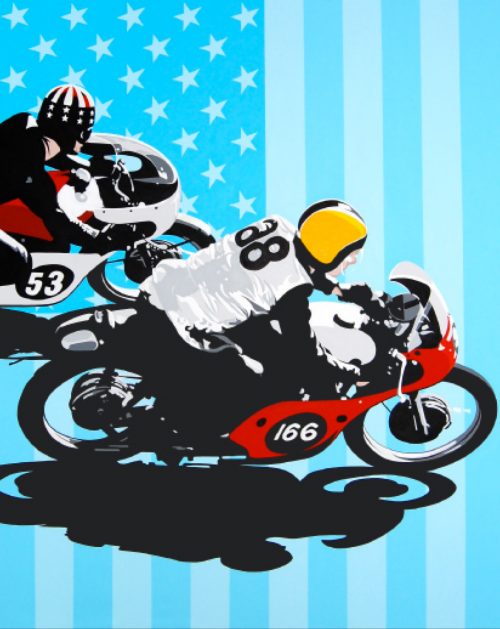
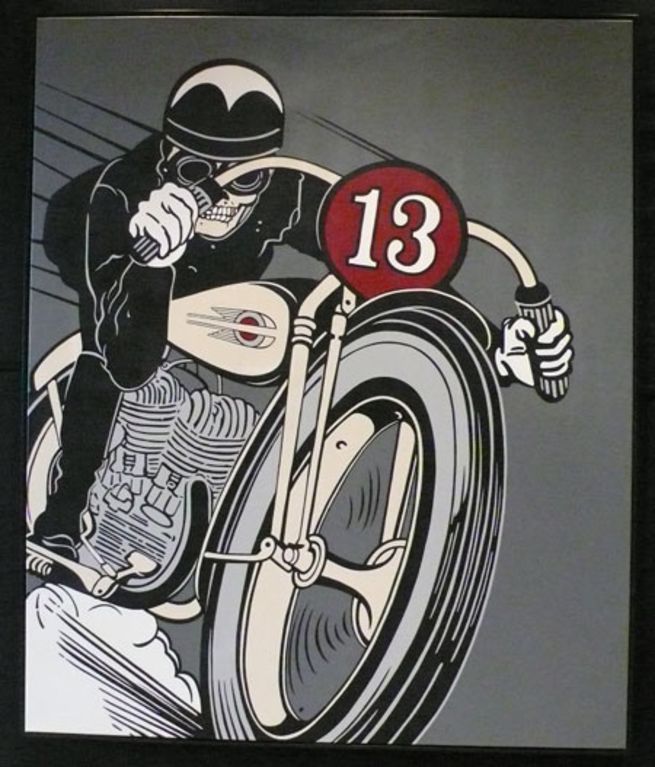

Dennis Loveday: Brooklands Racer
At the Brooklands Velocette Centenary in 2005, I met two surivving Brooklands racers - David Vincent and Dennis Loveday. David Vincent won a Gold Star for recording 100+mph laps at the Brooklands speed bowl during a race, and both men raced 350cc Velocette KTTs. Regardless Dennis Loveday is pictured here on a Velocette, most of his Brooklands racing was on single-cylinder Ariels. Both men were successful riders and race winners in the 1930s, and it was fascinating to hear them talk about the old track.
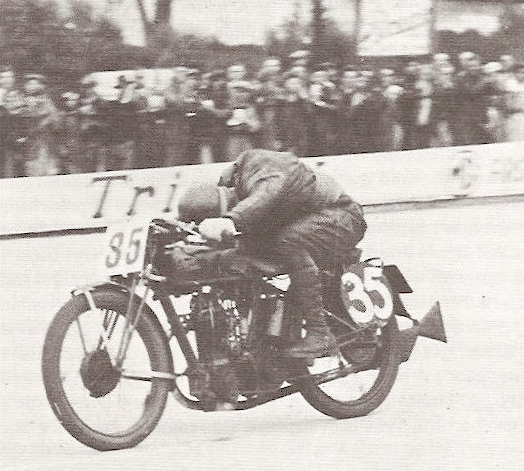
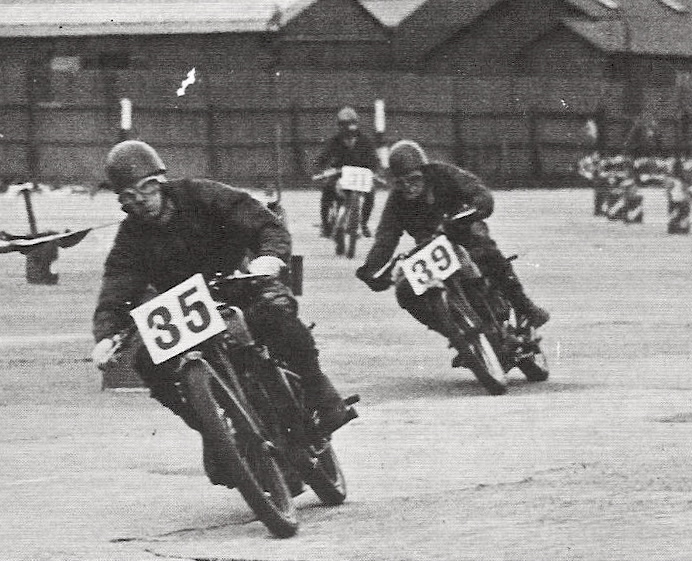
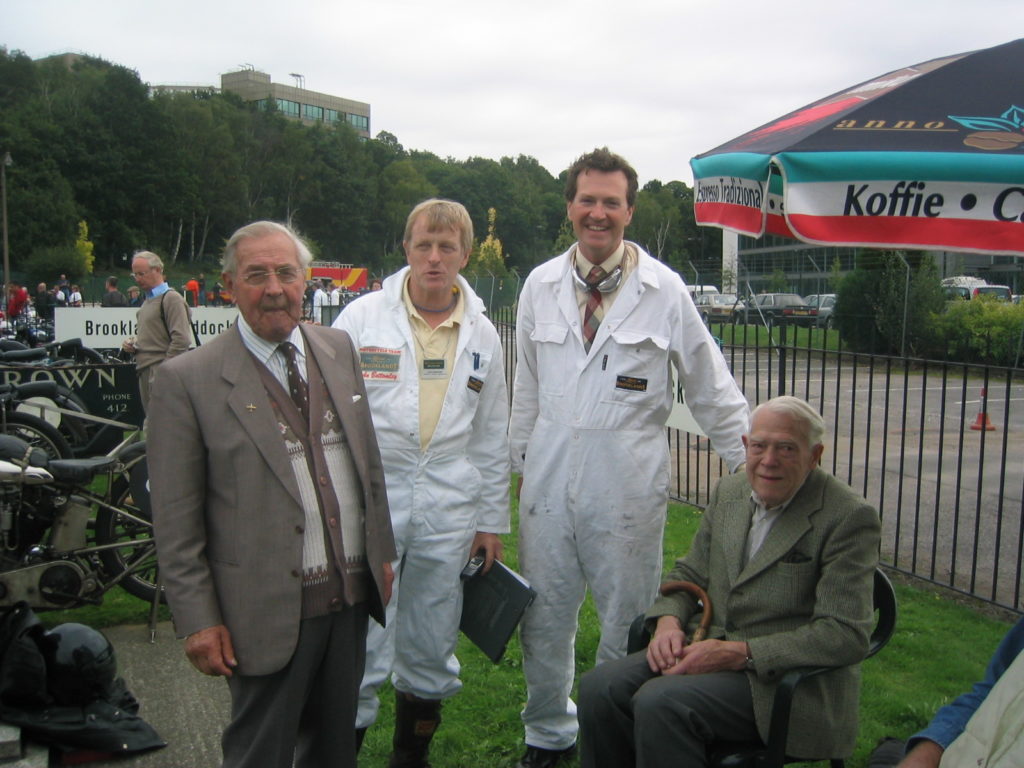

Book Review: 'Private Owner'
While doing some research on the Velocette MkVII KTT production racer, I was reminded of Les Higgins, who rode one in the 1938 Isle of Man TT, and wrote a book about his racing exploits, 'Private Owner' (Foulis, 1948). He was never in the top ranks of riders, but writes about the life of a typical 'clubman', the arch-enthusiast who spent all his money and free weekends racing at Brooklands, the Isle of Man TT, the Ulster Grand Prix, at Donington Park, etc, filling up the ranks of the 'also rans'. Riders such as Les Higgins were the principal customers for over-the-counter racing machinery, such as the Velocette KTT, Norton Model 30 International /Mans, Excelsior Manxman, etc.
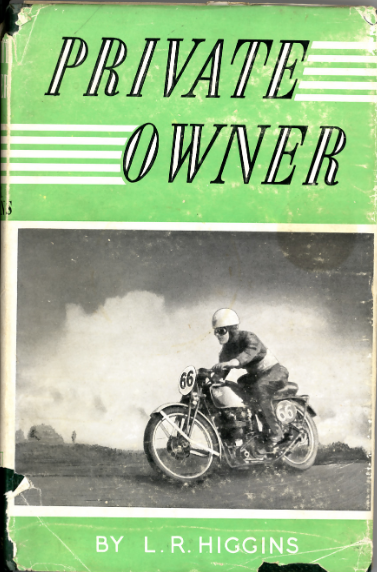
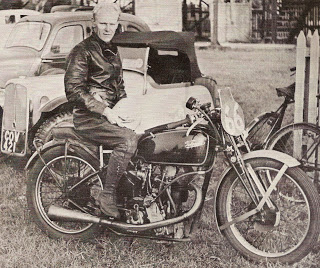
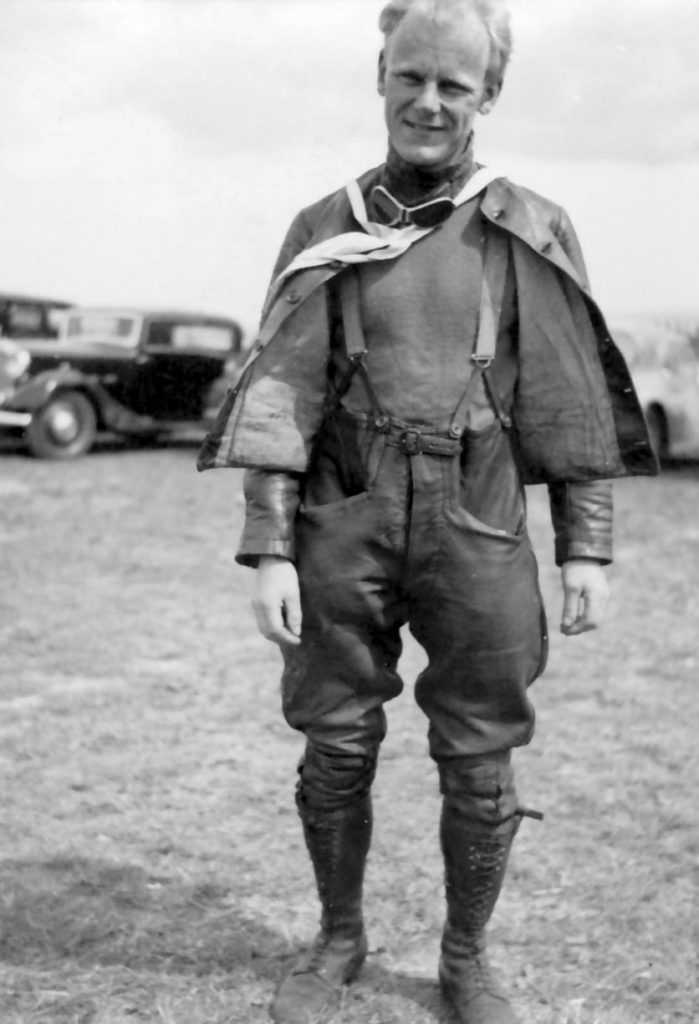
‘Garage Magazine' Photo Shoot
In total contrast to my previous post on a photo shoot, Garage magazine shot a feature spread on 'motorcycling gear through the decades', using the San Francisco Motorcycle Club as their backdrop (the SFMC is the second-oldest m/c in the US, and the oldest continuously operating). This was an expensive studio shoot, with stylists, makeup/hair artists, hired models, a photographer and assistants, lots of lights and camera eqp't, and several vintage bikes as props. It hurt to be relegated to 'prop' status, but I'm always happy to help encourage the old bike scene.
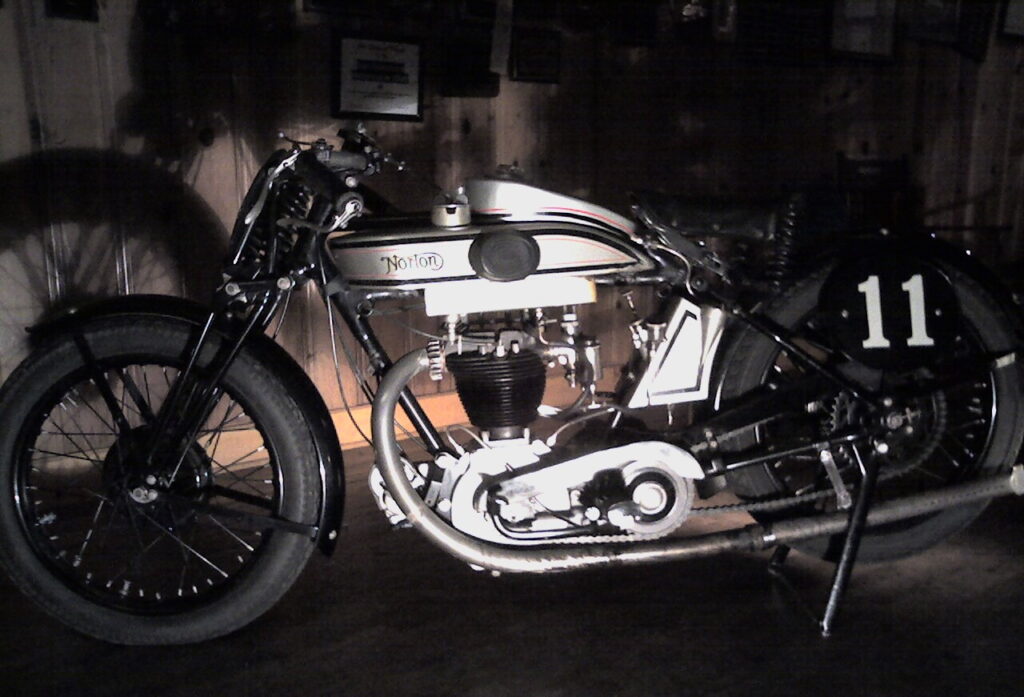
Top pic is my 1926 Norton Model 18 racer, looking spooky in the dark with some up- and back-lighting on wall of the SFMC. This was 'Jimmy's bike' - it has a history going back to Jimmy Shaw (a 'works' rider for Norton in the 'teens thru '30's), and was claimed to be a factory race machine. It was restored about 15 years ago by Ken Blake in England, then my friend Ken Boulter purchased it to settle the unpaid restoration bill(!), and he sold it to me about 8 years ago (after much needling, I assure you). It's a bit of a bear currently, as I need to rebuild the carb and replace the magneto (very hard to start), and the soldered-up gas tank is a little leaky. Still, the bike is fast, having been timed at 94mph, and handles beautifully.
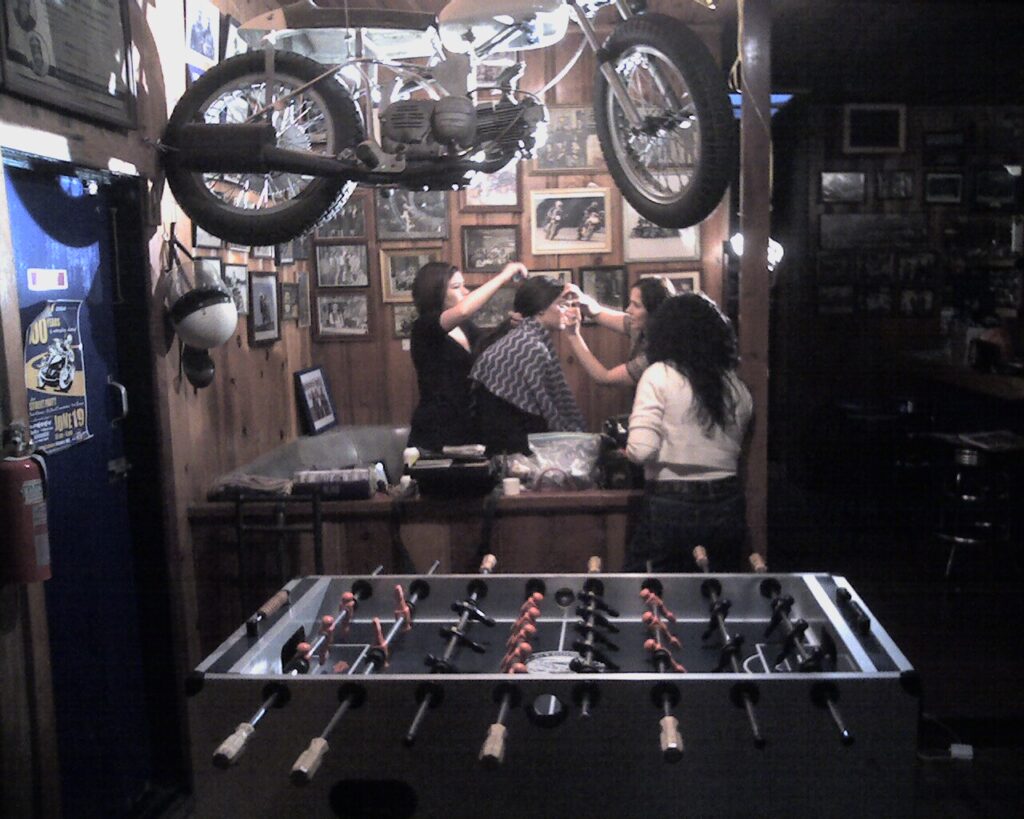
The interior of the SFMC is packed full of photos, memorabilia, and trophies on the walls, with two bikes hanging from the ceiling - an Aermacchi/Harley Davidson CR flat-tracker with a custom chrome-plated frame, and 1904 Curtis v-twin in original condition. Plus, there are pool and foosball tables, and a full bar. Pretty much ideal, really.
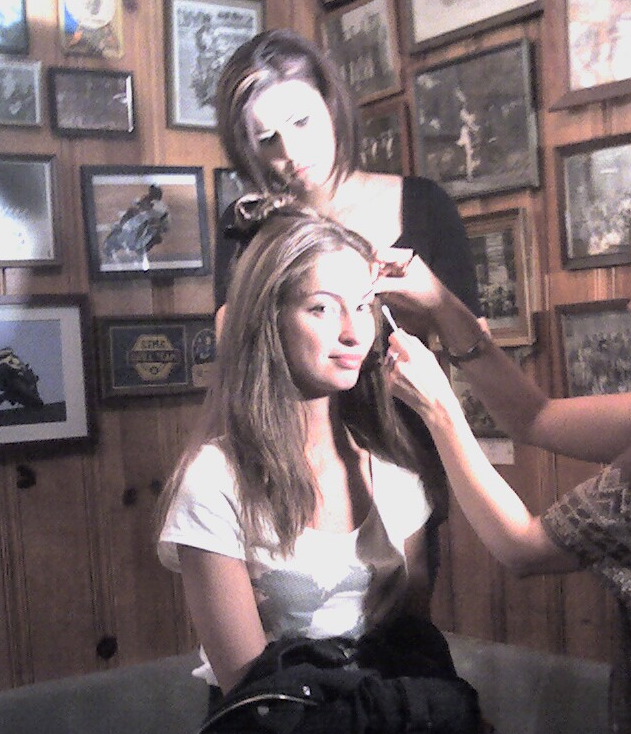
'Slim' Jim Hoogerhyde, SFMC member and vintage racer, who's modeling a pair of odd German goggles I found on ebay. Slim let everyone into the building and hung around all day during the shoot...which might be seen as tough duty, but there were 3 beautiful women changing clothes there all day. He doesn't look bothered at all.
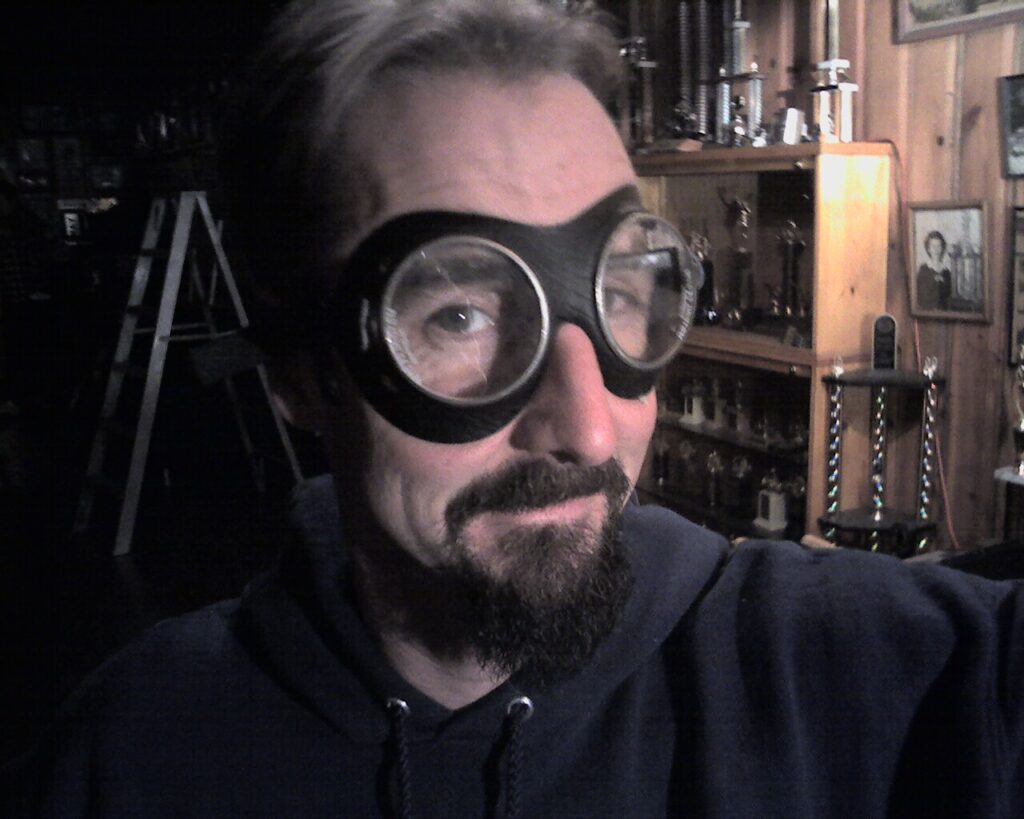
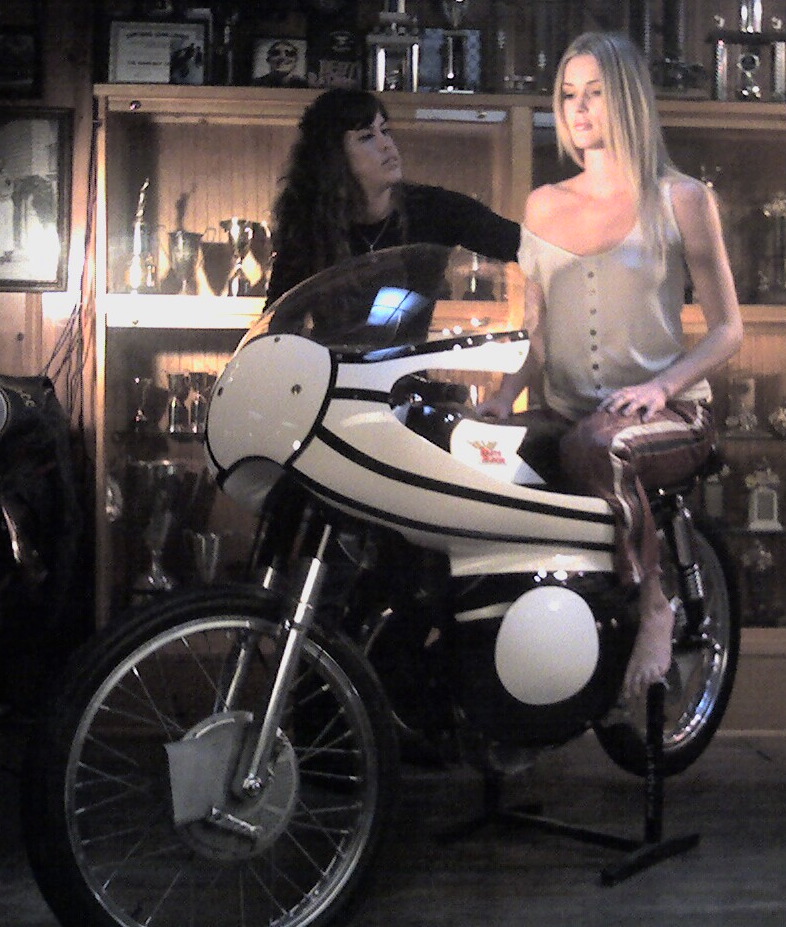
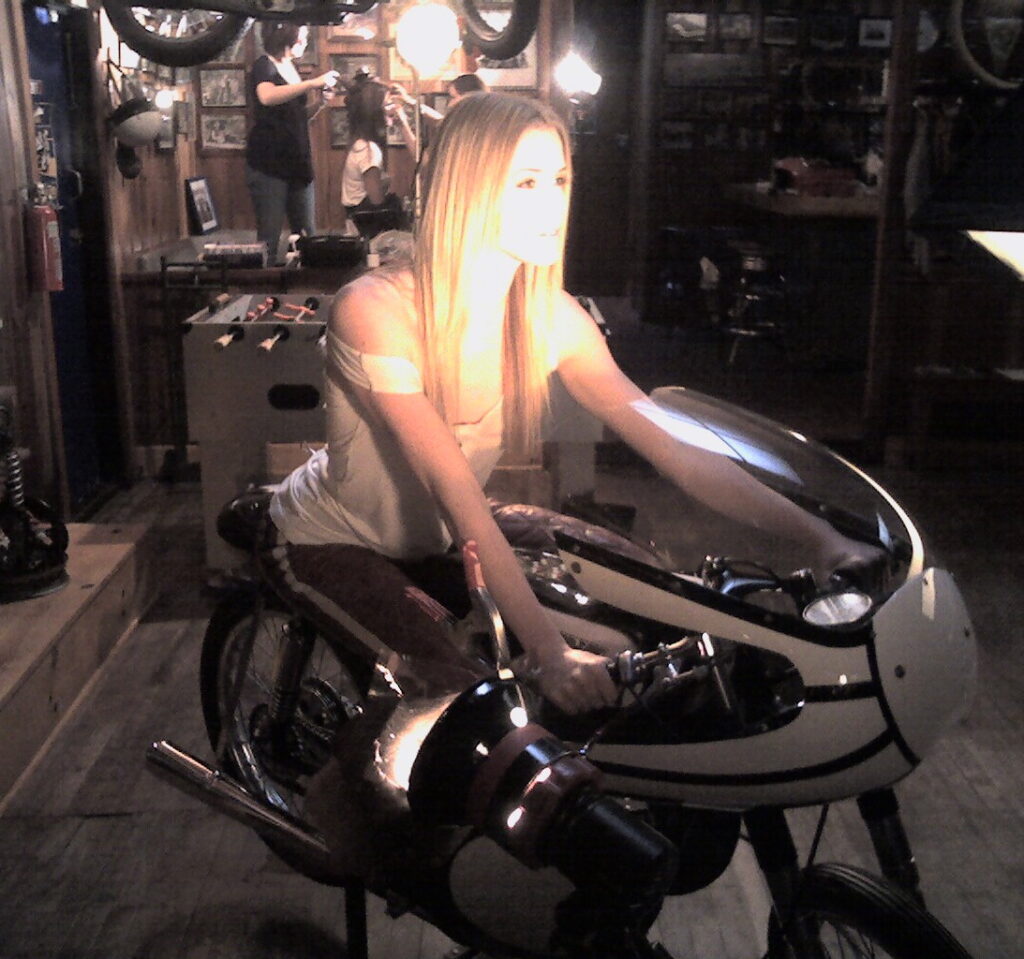
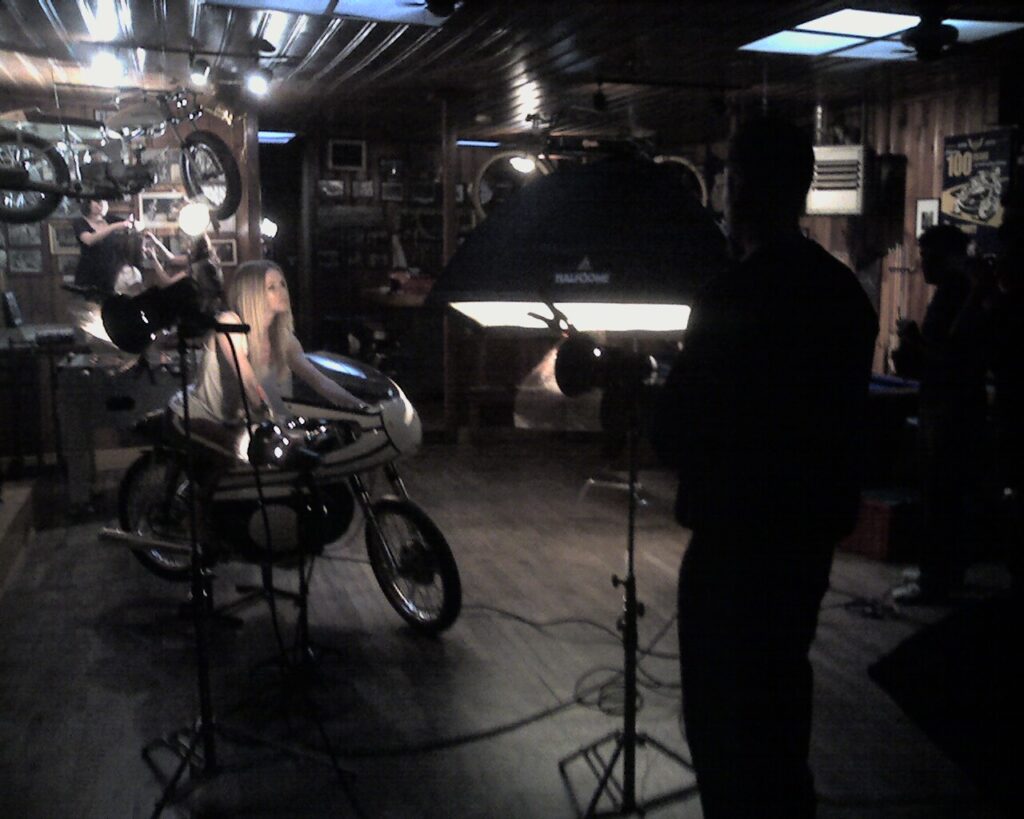
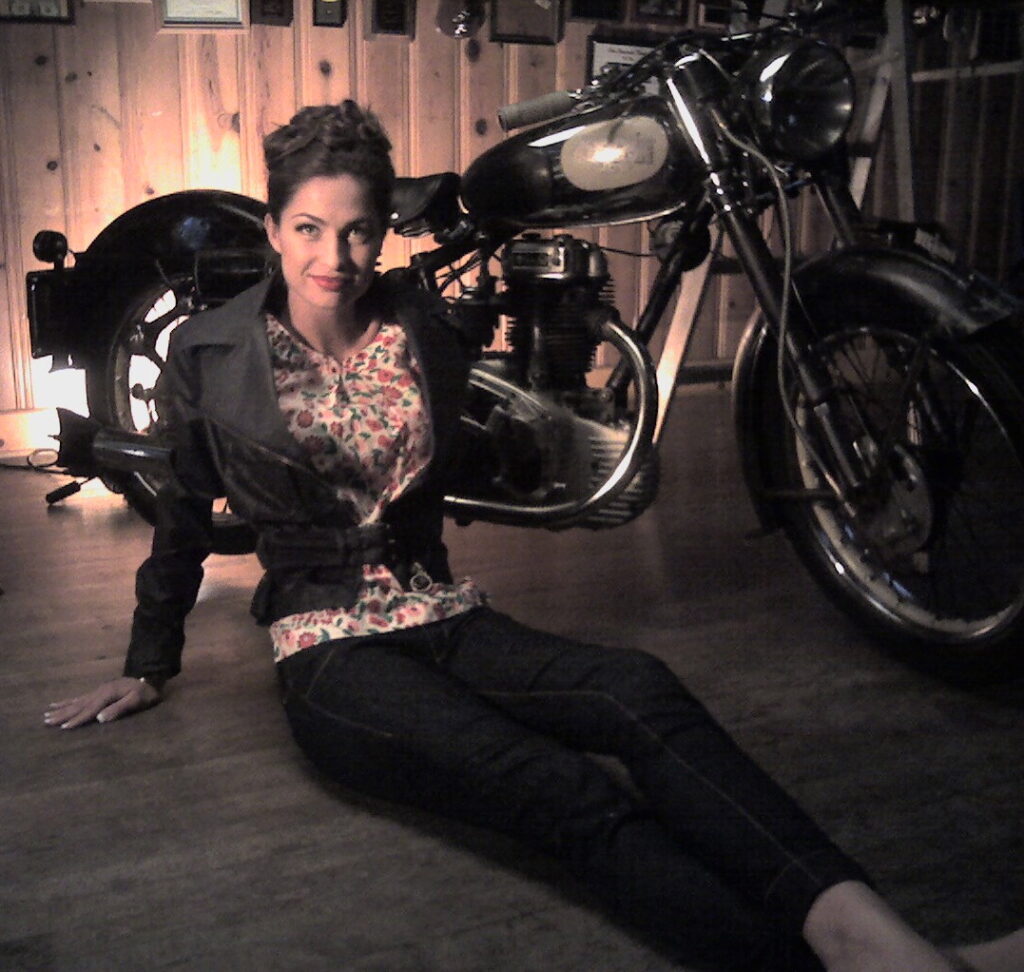
another Belstaff in white cotton, which was very chic but looked pretty useless for a bike, as it wasn't waxed cotton or particularly waterproof. [Paul d'Orléans]
I've owned Belstaff rain gear before - once it's been ridden in the rain for a few weeks, you don't want it anywhere near nice clothing, as it will leave dirty streaks! It also tends to collect cold water in the crotch after about an hour in a steady downpour... I have bitter memories of a ride through the Tatra mountains in Czechoslovakia, after leaving communist Poland (1987), being completely soaked through despite my waxed cotton gear... even the MZ I was riding (which breathed through its frame backbone!) was gasping for air and choking on the waves of muddy water thrown over us by trucks passing the other way. Luckily, I was young, and arrived safely in Vienna after 12 hours, whereupon I KISSED THE GROUND. No kidding. Then I had a beer at a MacDonalds (and I hate Mickey D - that's how bad the food was in the 80's Eastern Bloc). Sorry for the digression!
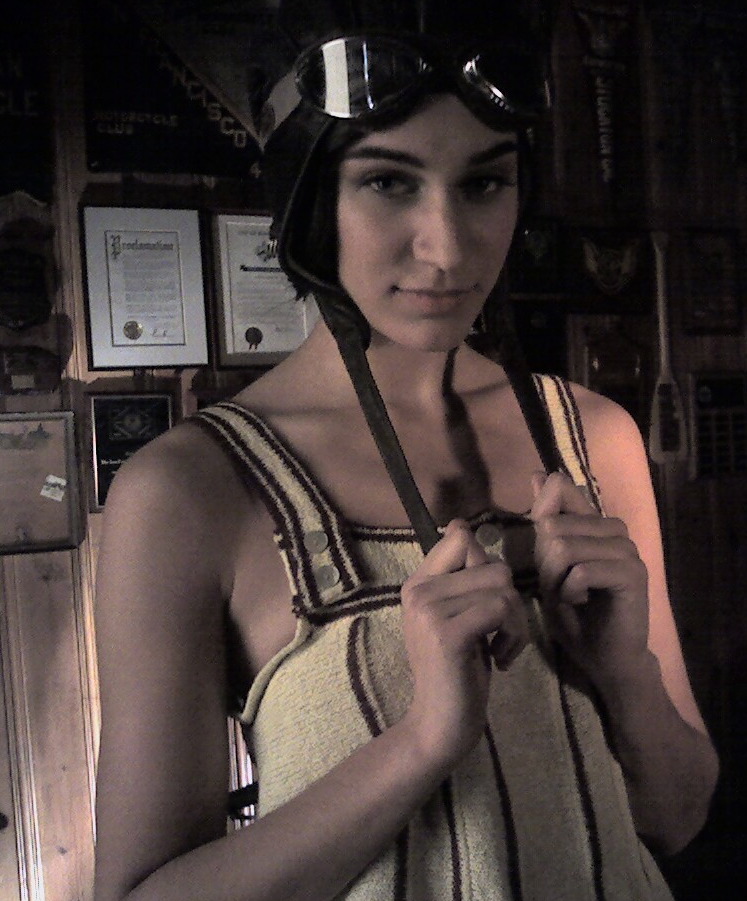
The last set of photos involves Nicole (don't ask for her phone number, as I don't have it!) with my Norton. Top photo shows the setup with Nicole silhoutted against the dome light. Dan Stoner, editor of Garage, stands to the left. Second pic shows Nicole wearing a leather helmet and my Avionix goggles (contemporary, from France), and a sort of Art Deco blouse. The bottom pic shows her outfit better; jodhpurs, Deco blouse, leather helmet, tall boots - a nice look... motorcycles do look better with a beautiful woman next to them!
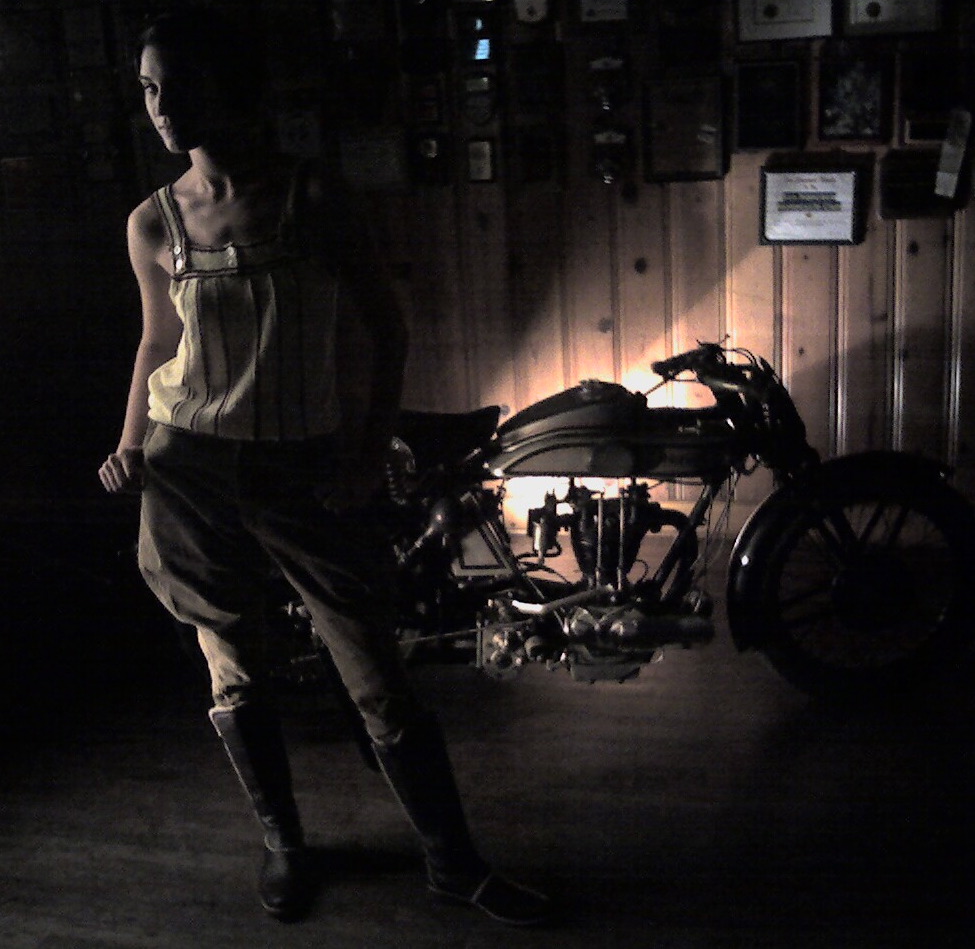

Shooting 'The Mule'
Nick Cedar, a photographer with many books, magazine articles, and calendars to his credit, arranged a photo shoot of my Velocette MkIV KTT (better known as 'The Mule') this weekend, for an upcoming article in 'Motorcycle Classics' magazine (Margie Segal will be writing the text).
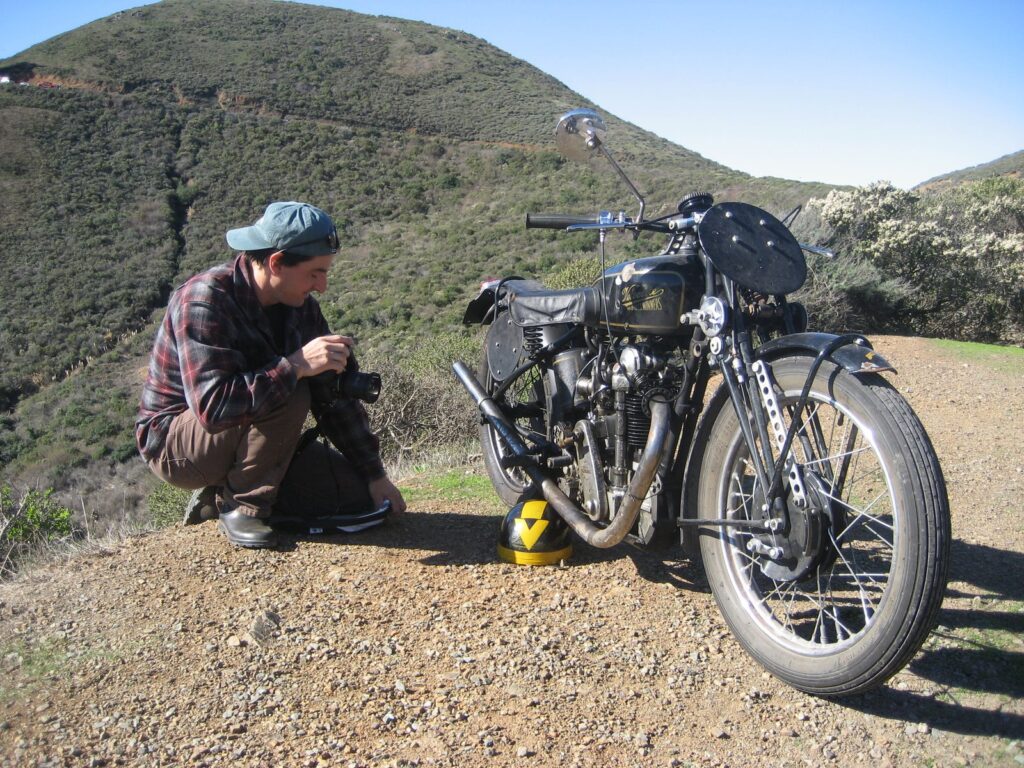
He chose the Marin Headlands as the backdrop; the day was crystal clear and warm, almost too warm for the vintage outfit they requested from the rider! The view from the headlands is directly over the Golden Gate Bridge, back towards San Francisco, as can be seen over my handlebars in the second photo. The Headlands is a State Park, and used to be part of the greater military defenses of SF bay, which have all been decommissioned since the 1970's. Thus, there are many gun emplacements and concrete batteries along the cliffs, making for dramatic backdrops, with stunning overlooks.
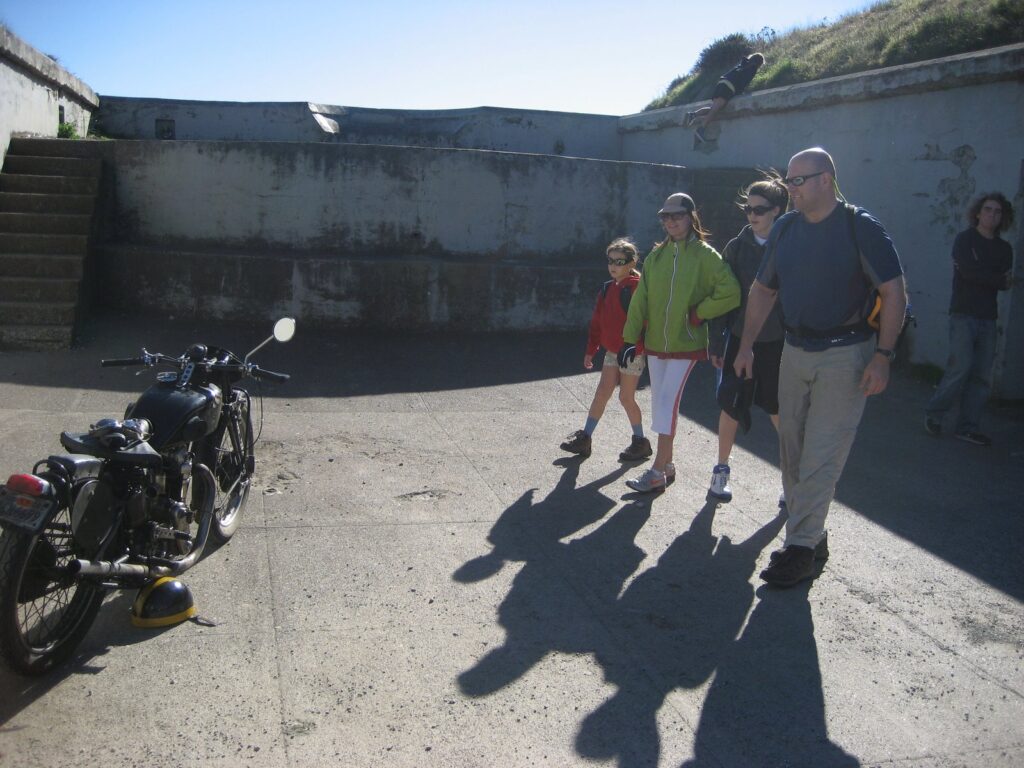
Apparently a $200 fee is required to take commercial photographs in the Golden Gate National Recreation Area, to help deal with the congestion caused by a photo shoot (there are always a zillion tourists clogging the first 1/4 mile of the road into the park, who all take three photos of the GG Bridge, but very few venture further into the hills). A park ranger stopped and quizzed us about the photo setup, but I told the truth and said I would be posting them on my blog (Nick kept mum).
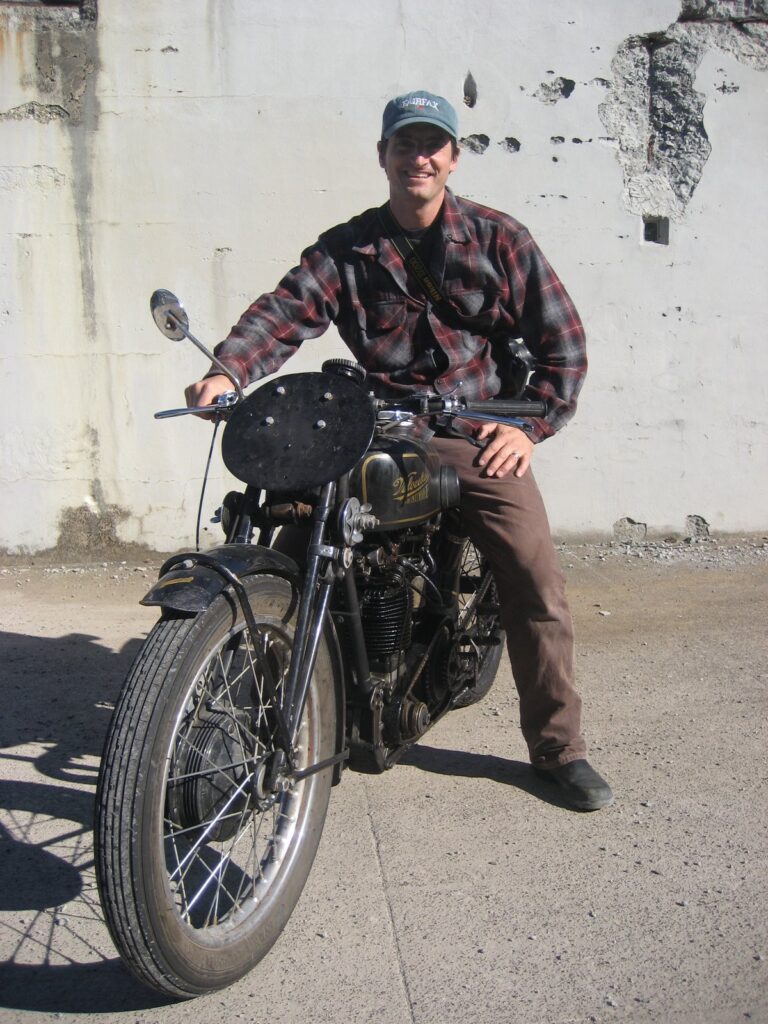
Nick's getup was completely minimal - not tripods or lighting rigs, just a camera and the occasional fold-out reflector, to cut through the oily gloom around my engine! And, as you can see in the pix, I haven't washed the Mule in 18 mo's (I do wipe it down to check for loose bolts), which is how they wanted it for the article.
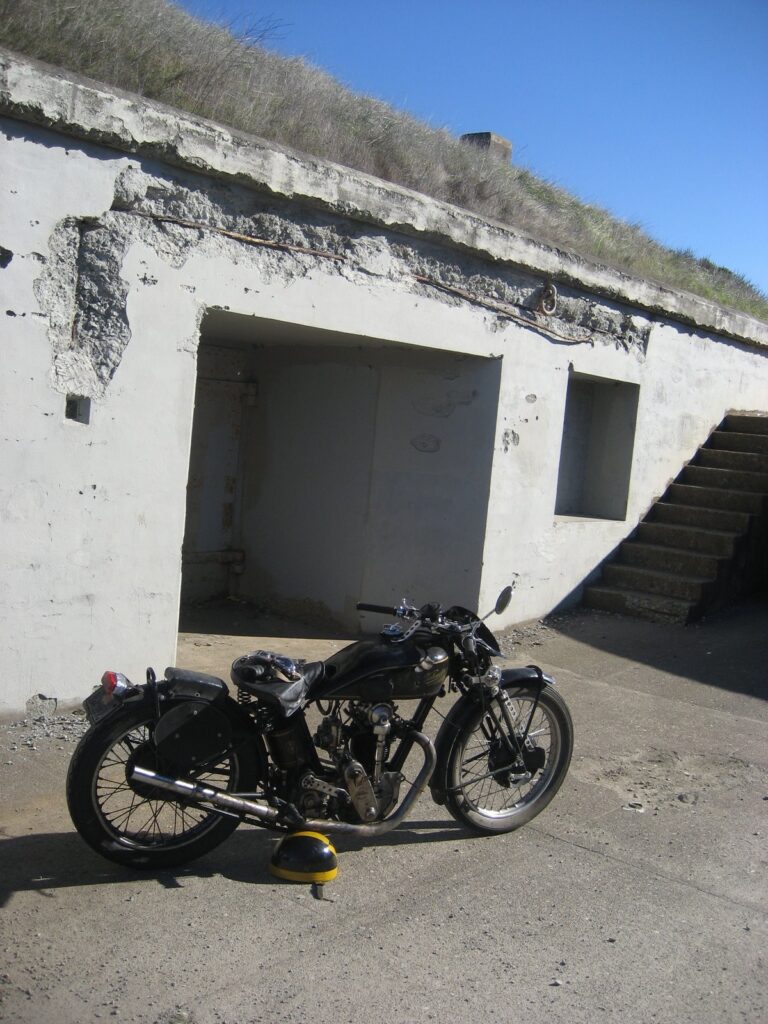
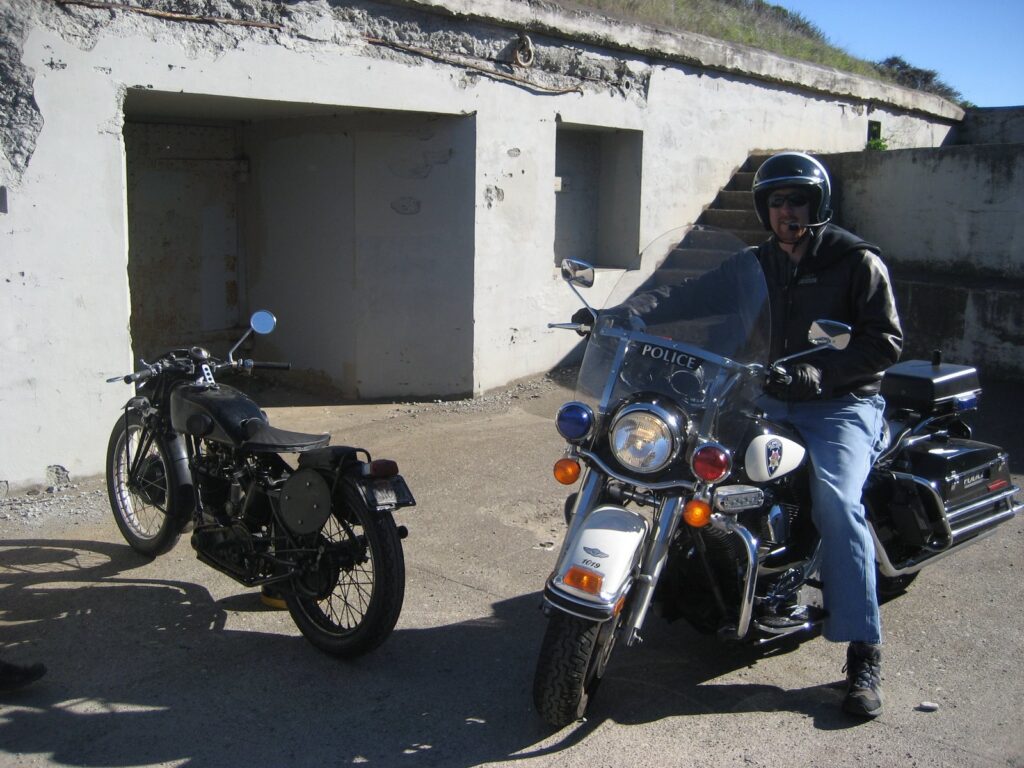

2007 Banbury Run
The Banbury run is the biggest VMCC-sponsored event in the calendar, and is generally limited to 500 machines, ranging from 1897 to 1930, and they turned away hundreds more. The event is held on the grounds of a school in the eponymous town, which clearly has the capacity to park 500 motorcycles, plus a hundred or so post-vintage machines in the adjacent fields, and a large autojumble to boot. Top two pics show how crowded the grounds became as the day began, especially when the motorcycles were flagged off individually on a 40-mile regularity run in the surrounding countryside.
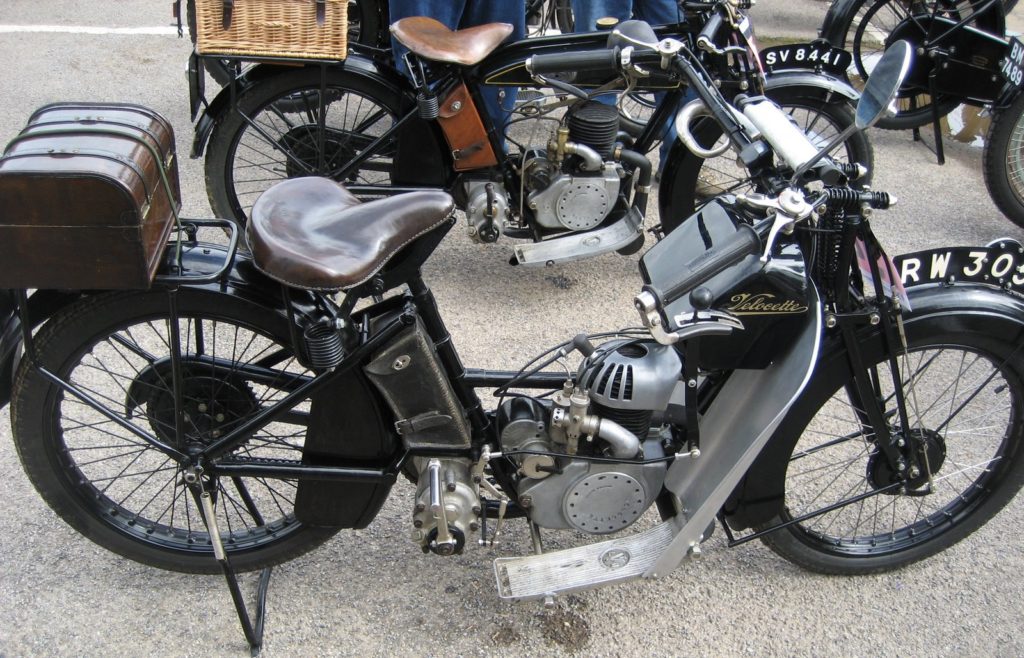
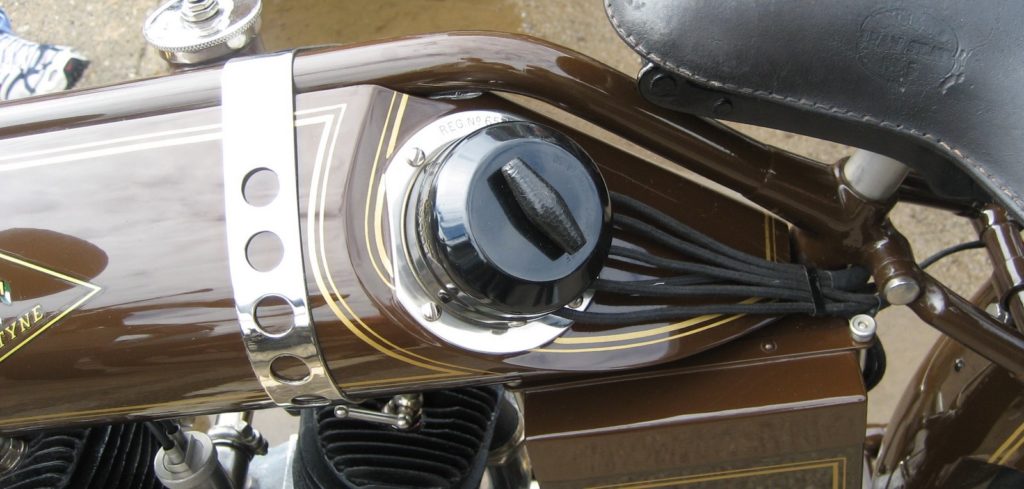
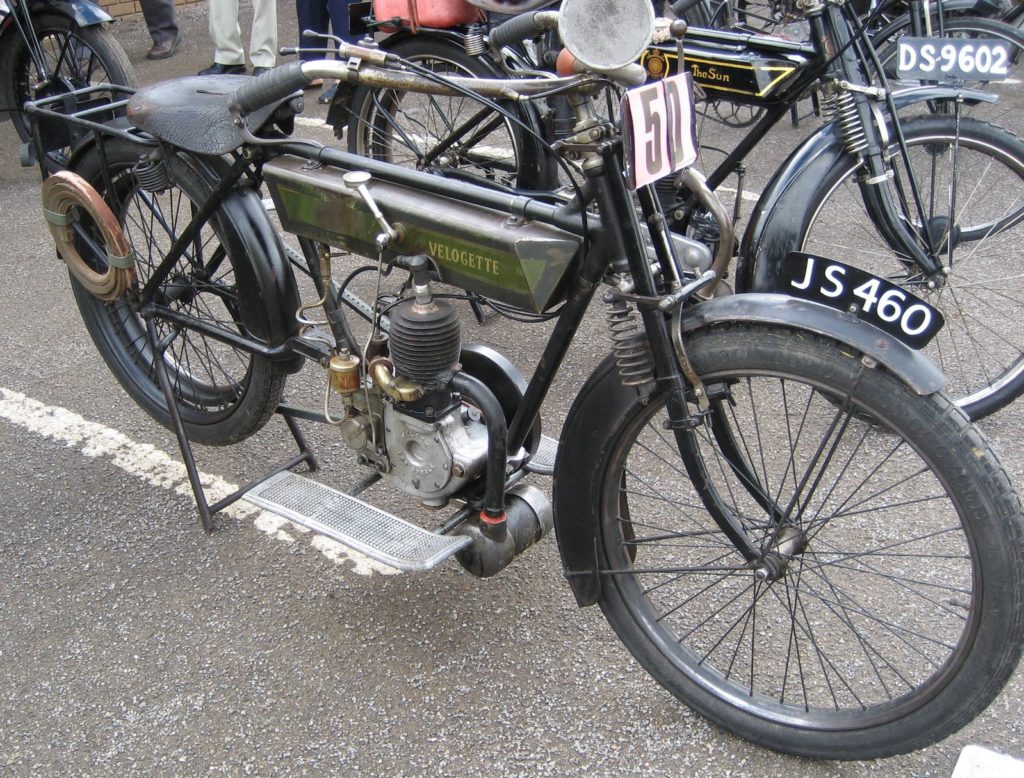
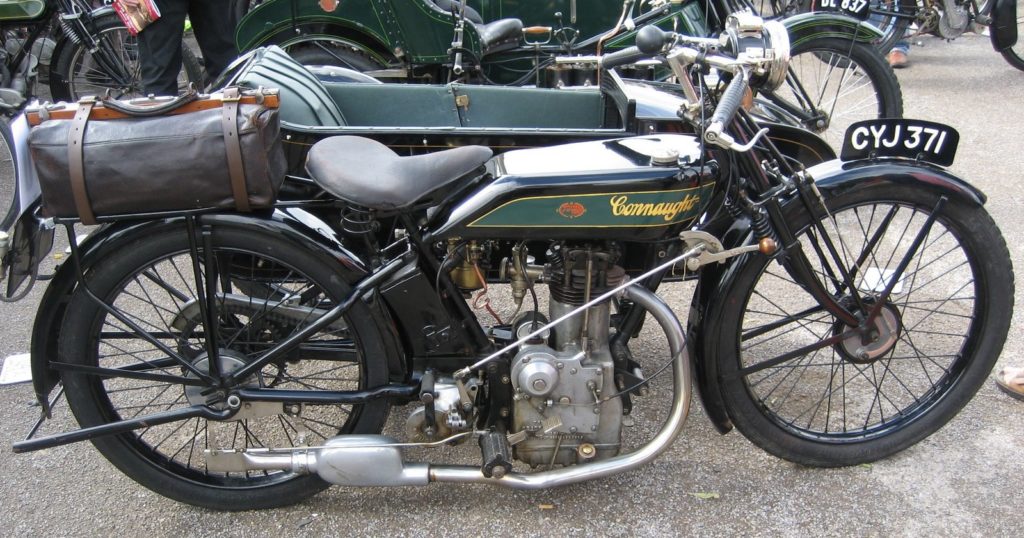
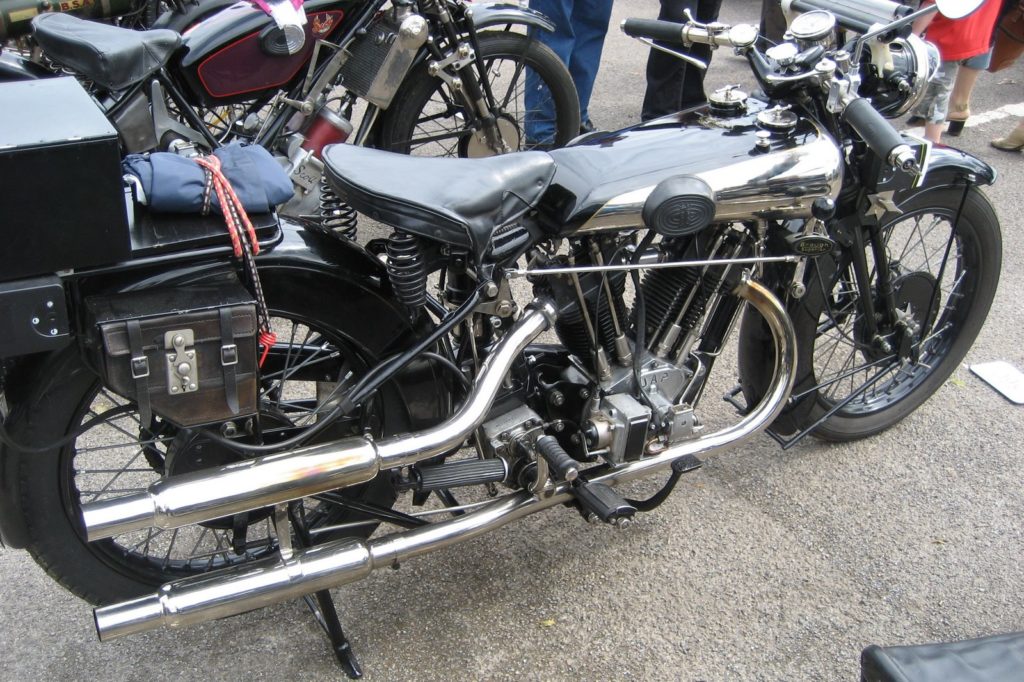
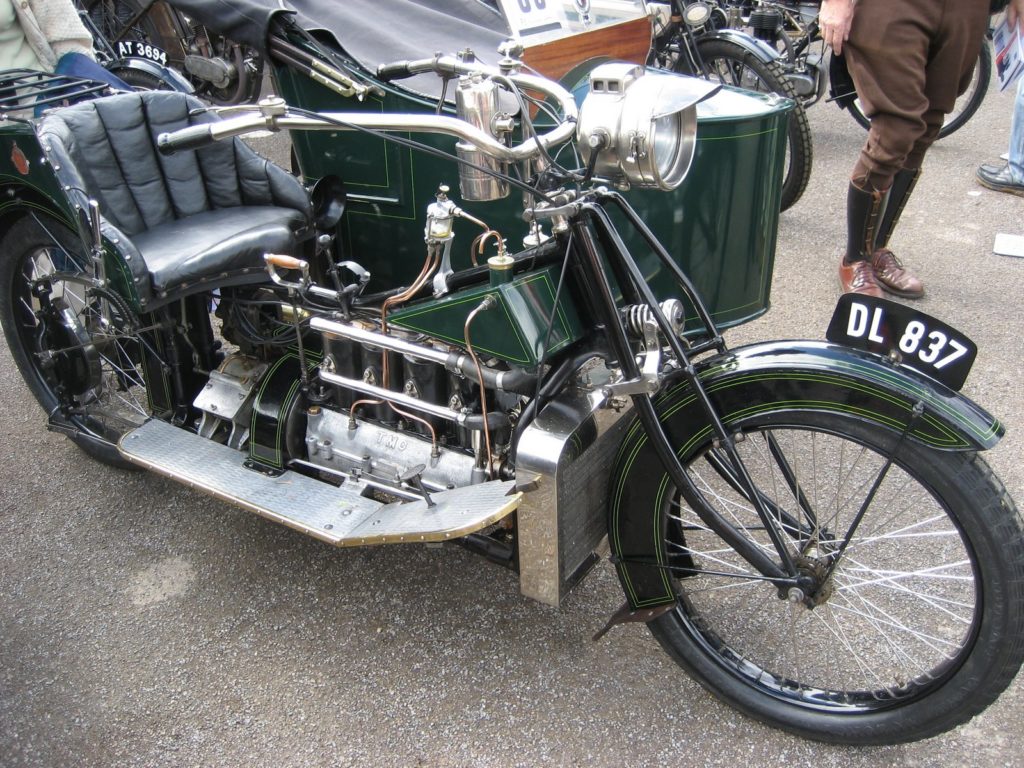
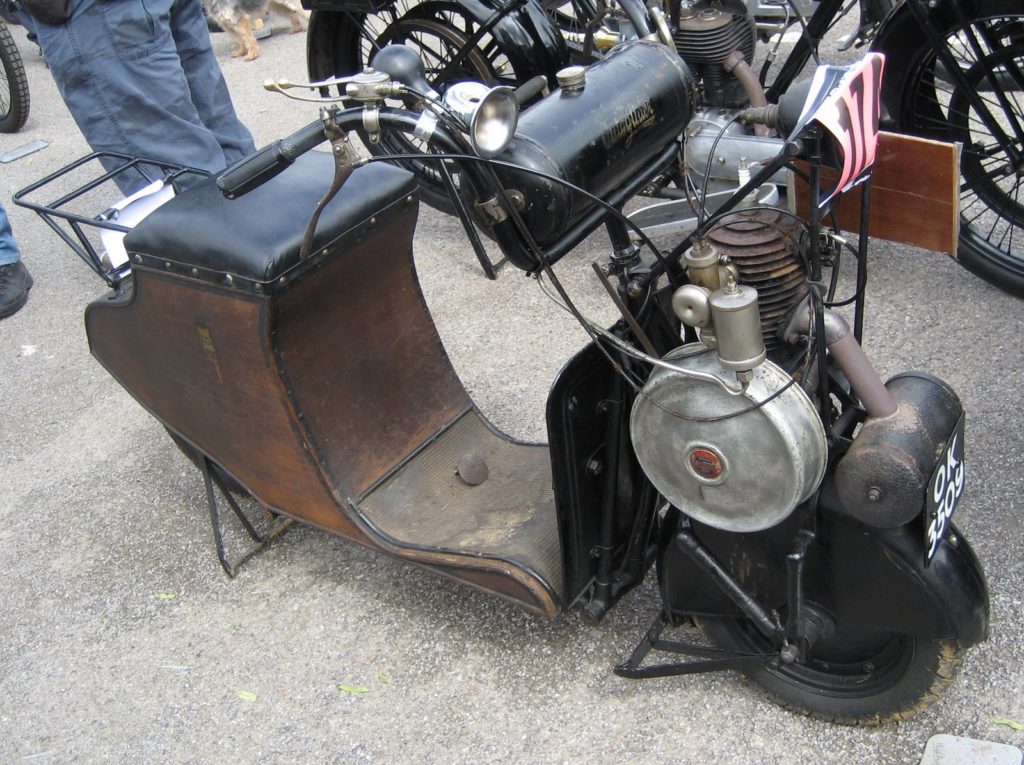
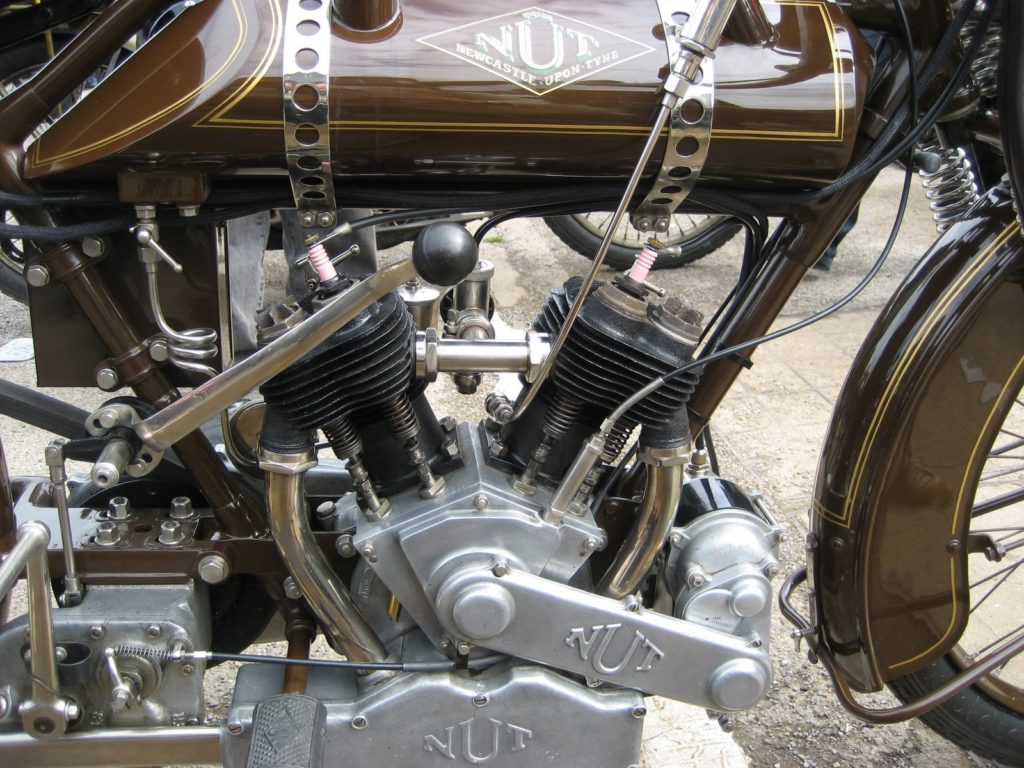
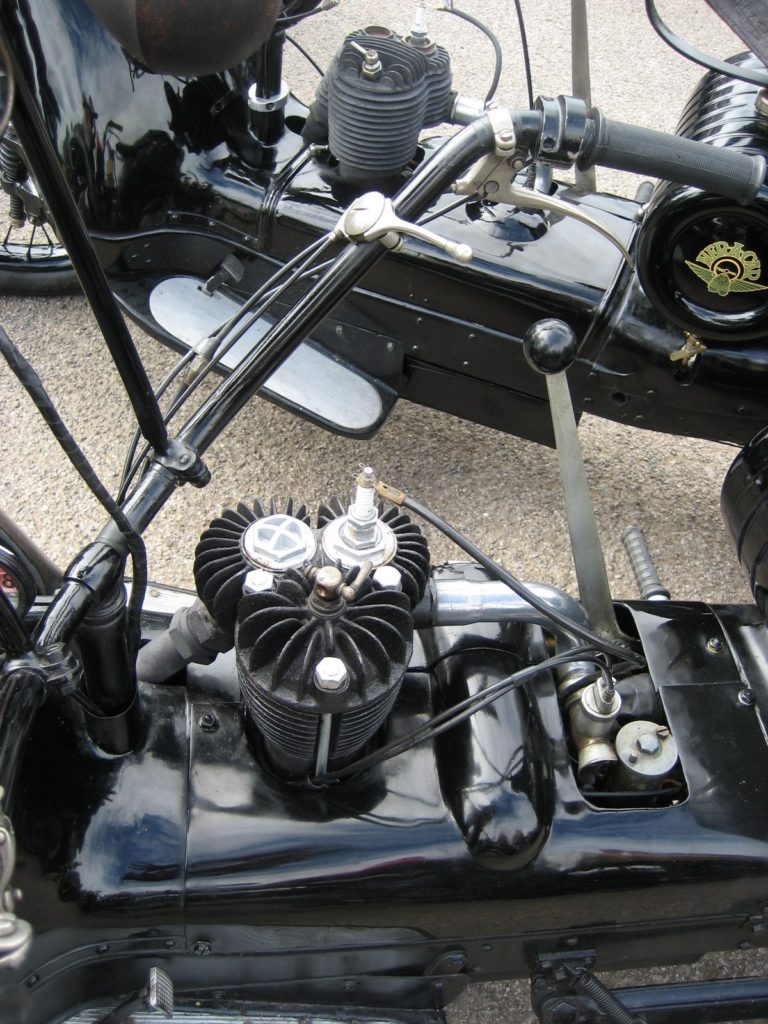
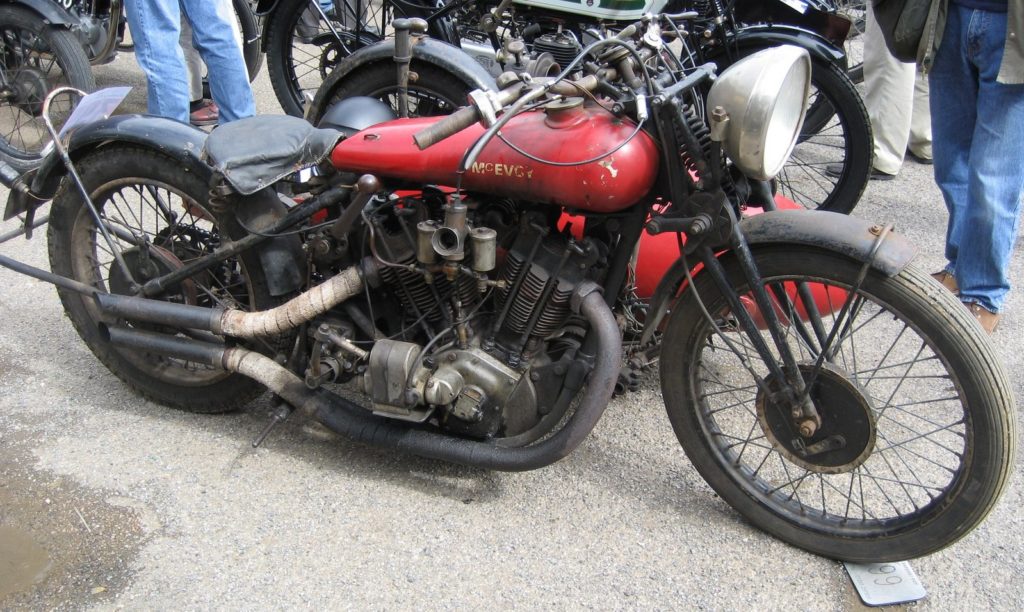
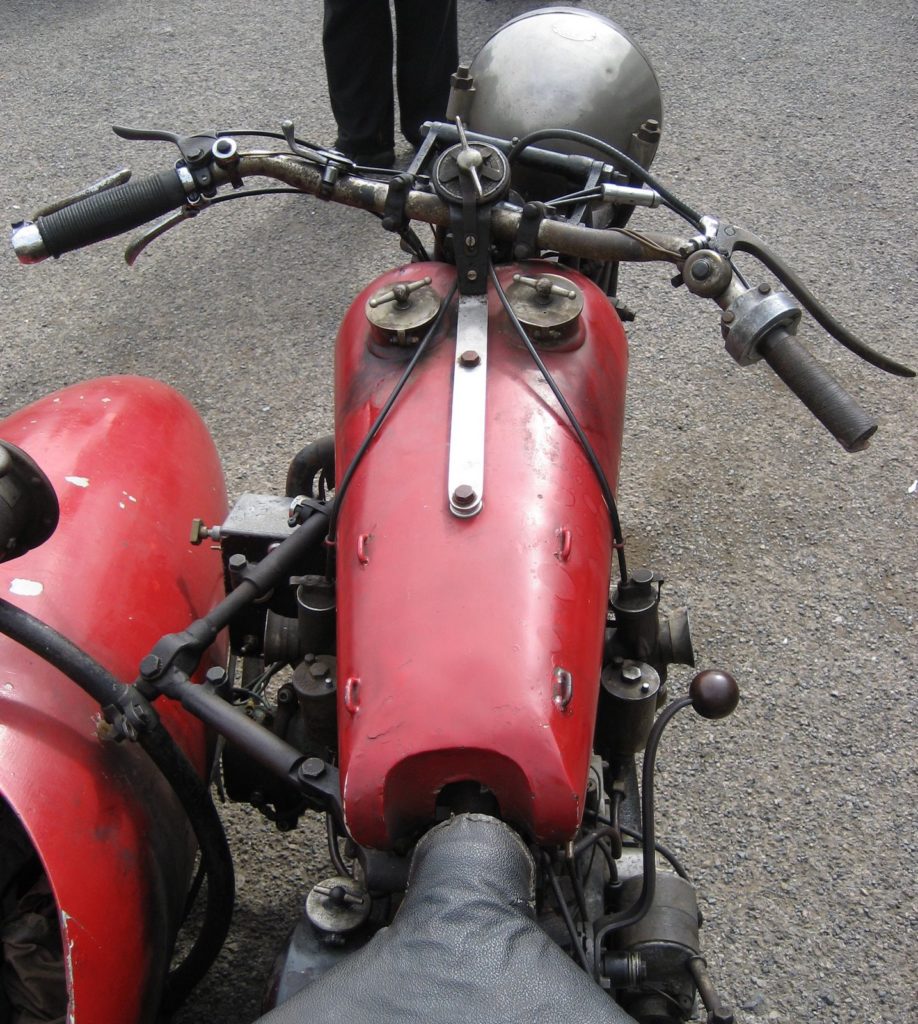
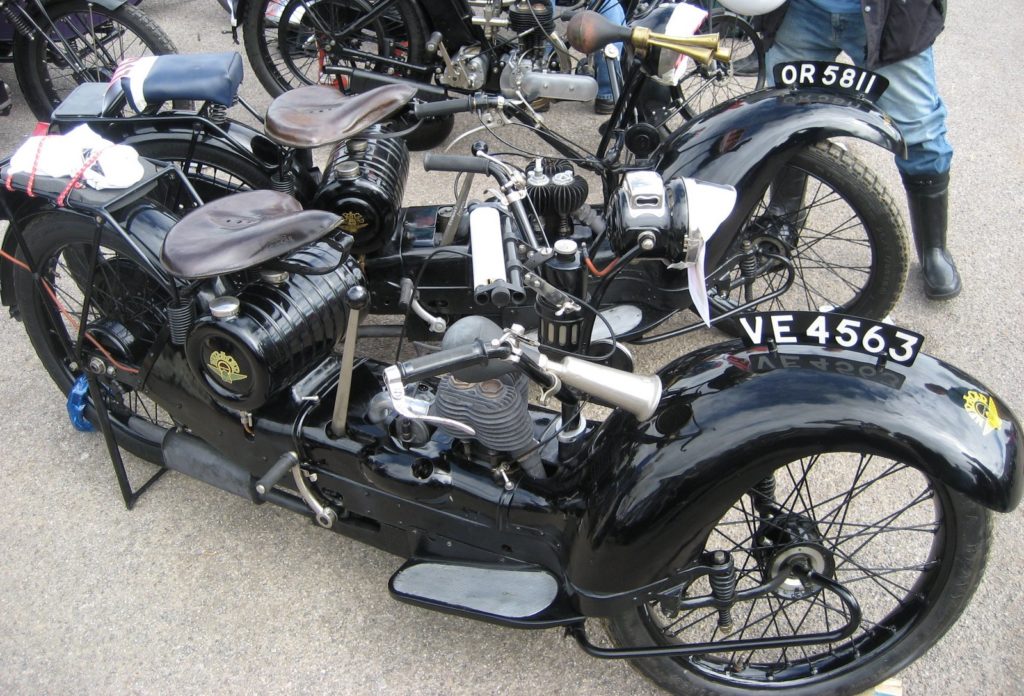
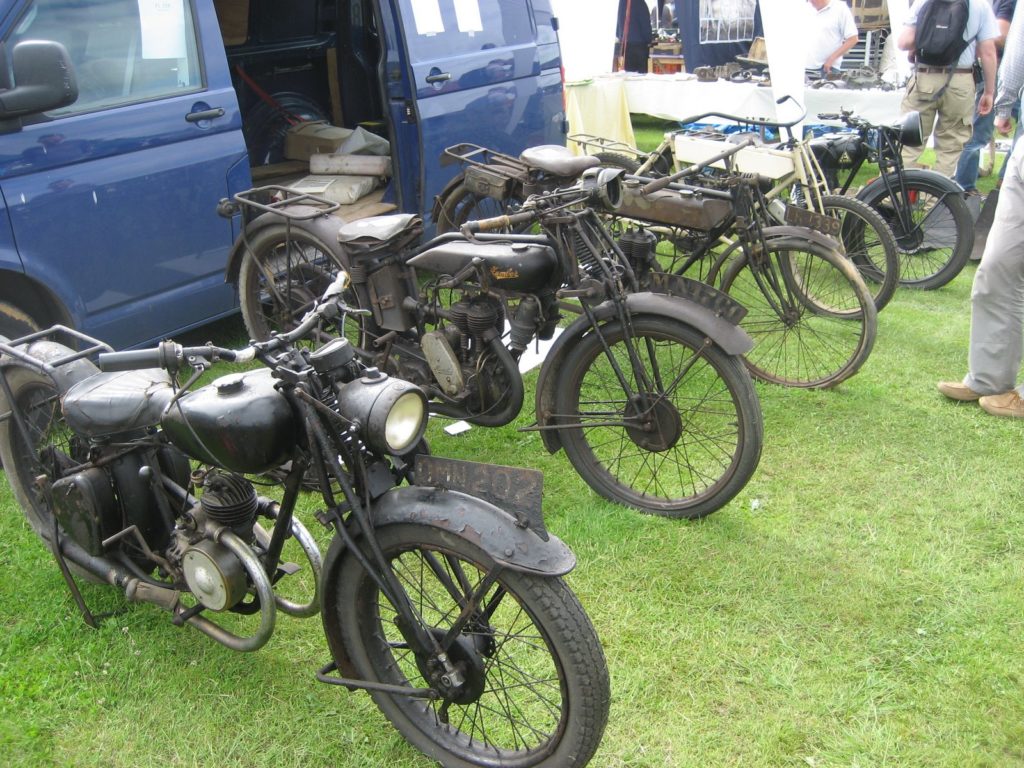

Rem Fowler's 1907 TT Norton
At the Brooklands Centenary meeting three weeks ago, I ran across George Cohen, he of the single-minded pursuit of all things Norton flat-tank. George is a great character, being formerly a psychiatric doctor in Somerset, England, and working on vintage Nortons in his spare time (his website is 'Norton Singles'). Well, apparently spare time got the better of him, and I believe he's given up his medical practice to pursue restoration of his beloved Nortons full-time; a move reinforce by by a commission from the National Motorcycle Museum to restore a replica of one of the most famous motorcycles extant, the winner of the first Isle of Man TT race in 1907 (multi-cylinder division - the single cylinder class was won by Charlie Collier on his Matchless), ridden by Rem Fowler.
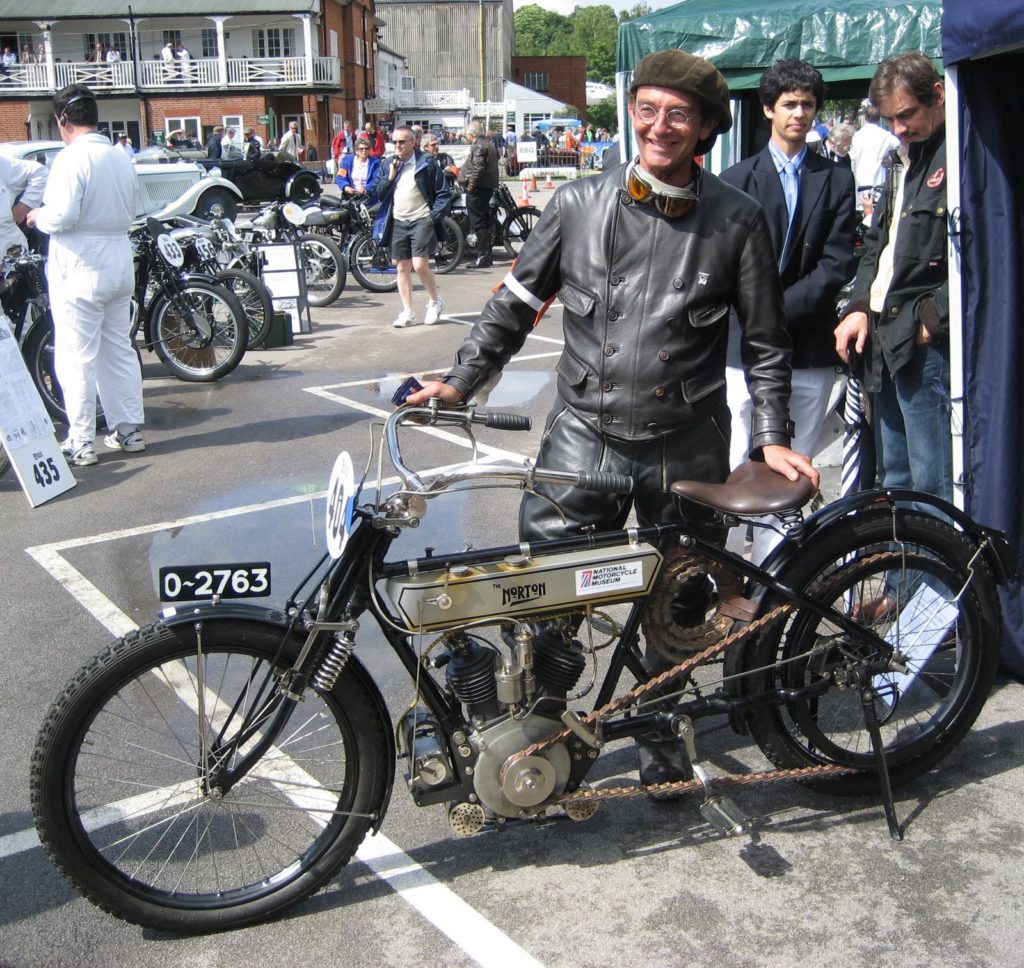
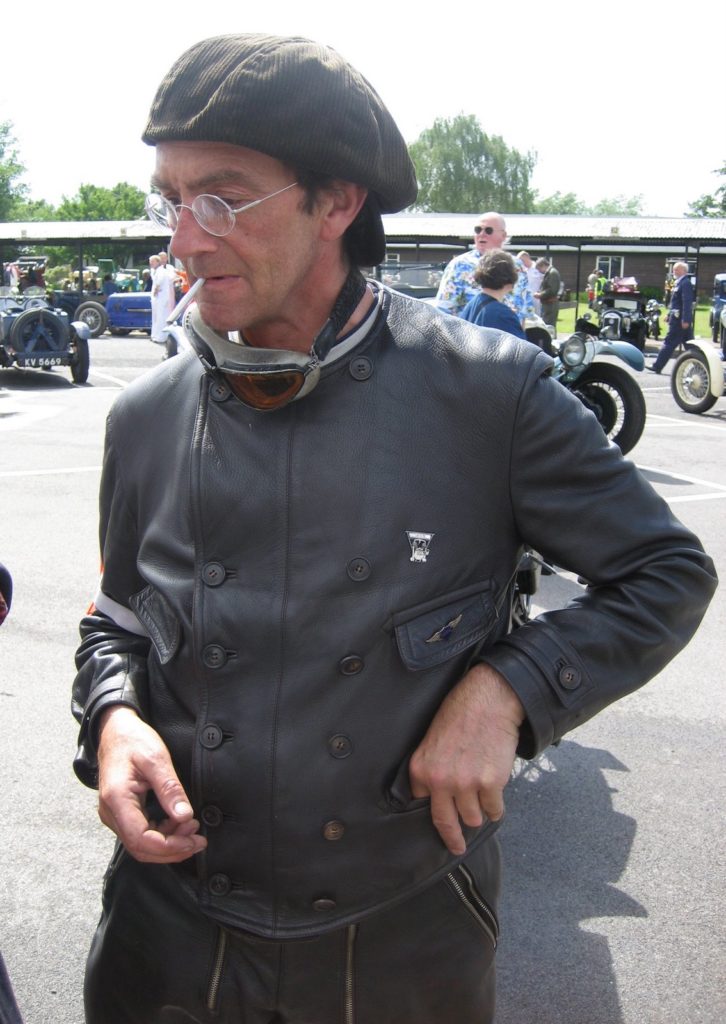
He had just returned in fact from the Isle of Man, where he rode this bike around the TT course for the Centenary celebrations there, and had a trouble-free run, no doubt thrashing this ancient racing moped around the course, as is his wont - George believes in using old Nortons as the maker intended. Having ridden with him on the track at Montlhéry [see our film on Montlhéry here] and in his sidecar near his home, I can confirm that he likes to push his machines to their limit. The third pic is an evocative portrait of the man in question, no doubt reaching for matches in the pocket of his Brooklands-style double-button racing jacket over leather jodhpurs, and obligatory reversed flat cap and goggles. He looked the part!
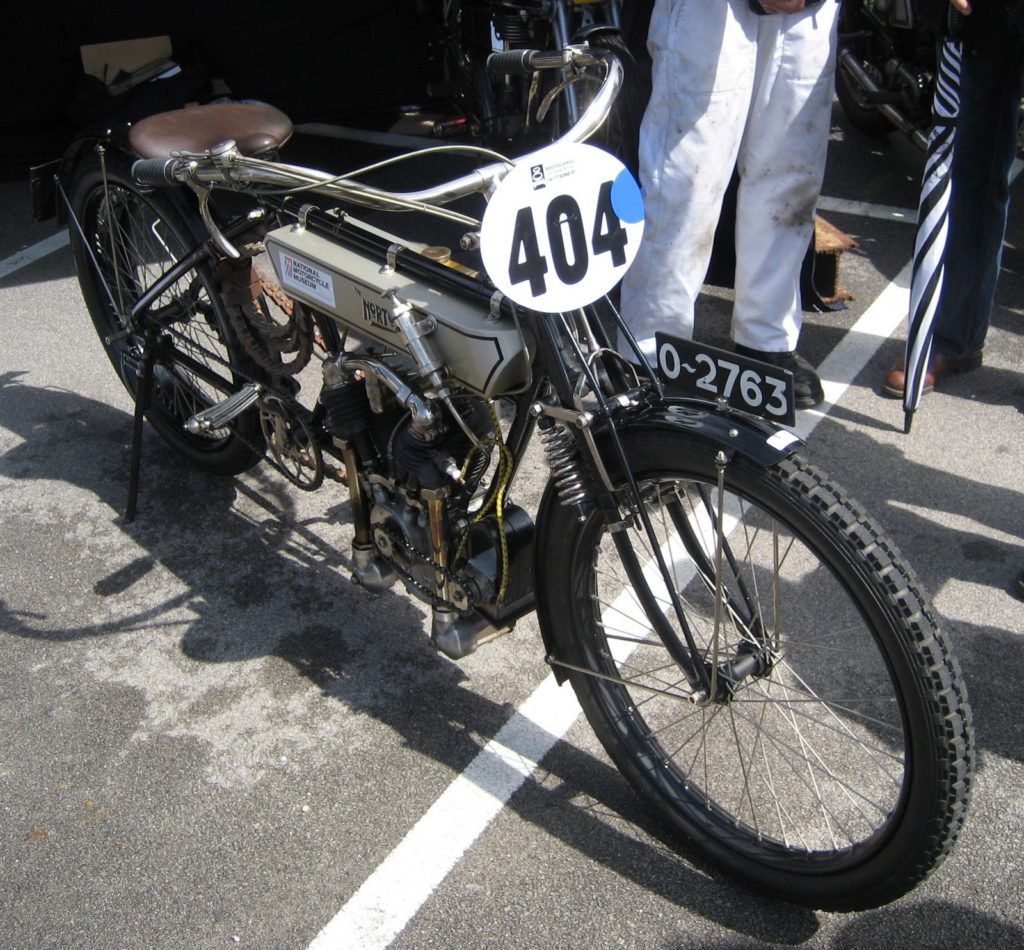
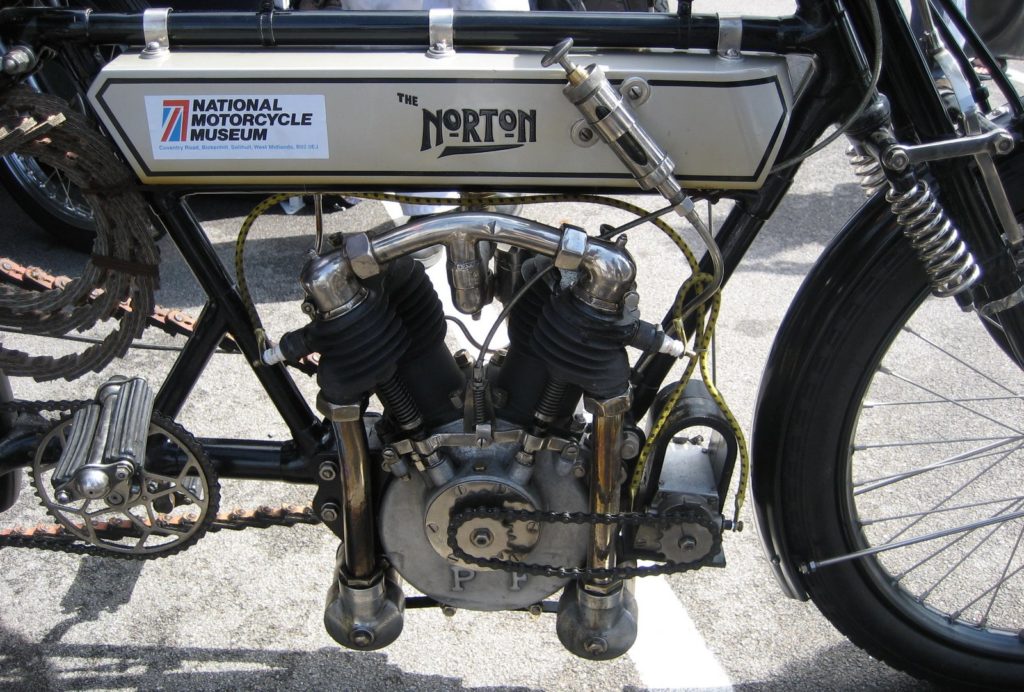
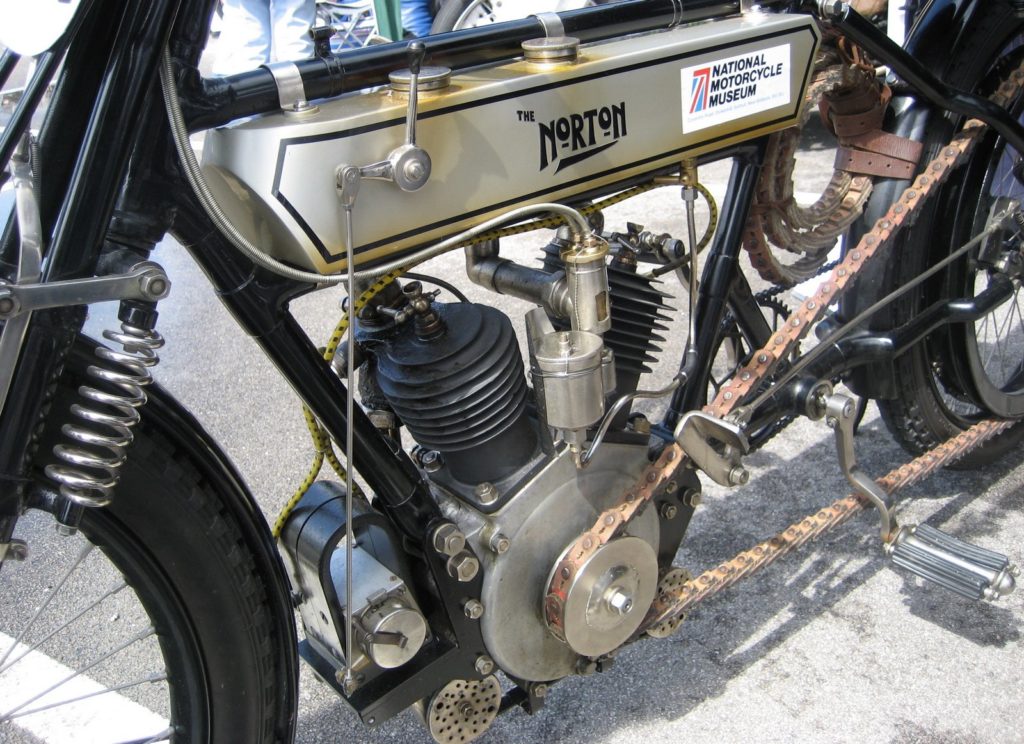
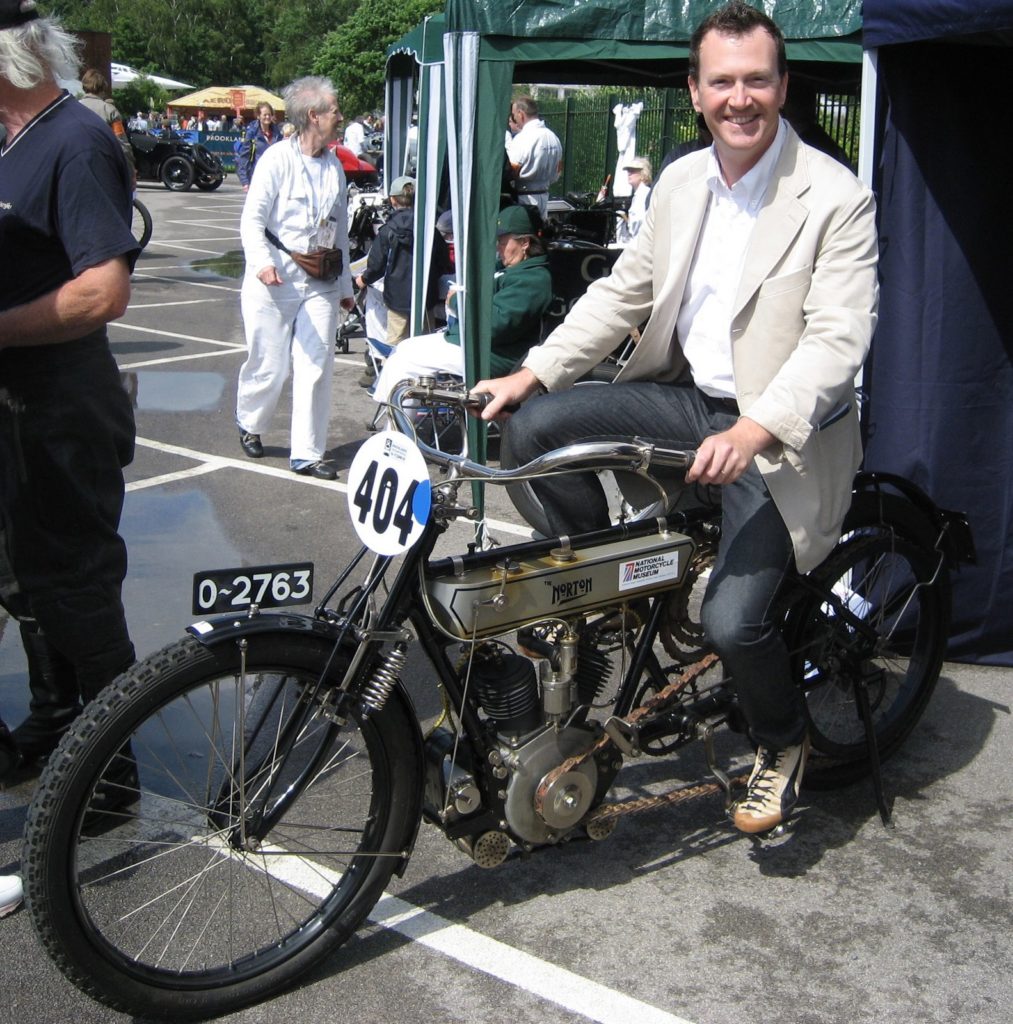
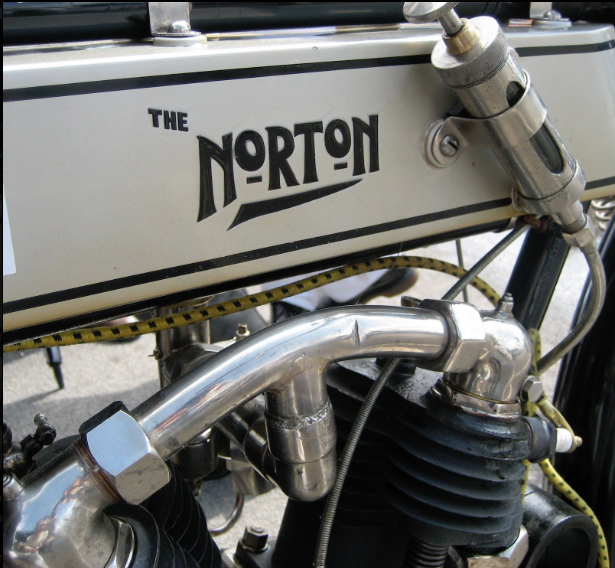

Velocette Spring Opener
The Velocette Owners Club sponsors an annual Spring Opener ride, hosted by John and Sue Ray at their 40-acre spread in the hills above Napa. Beautiful location, and the Rays are generous hosts, plus there's a lot of room to spread out the motorcycles, no matter how many show up. We met Saturday morning the 19th of May for a ride of about 70 miles through the amazing countryside around Napa and Lake Berryessa - perfect motorcycle roads, especially if your motorcycle has rear suspension, as some of the roads are badly paved and bumpy in the areas where you'd like to be cranked over.
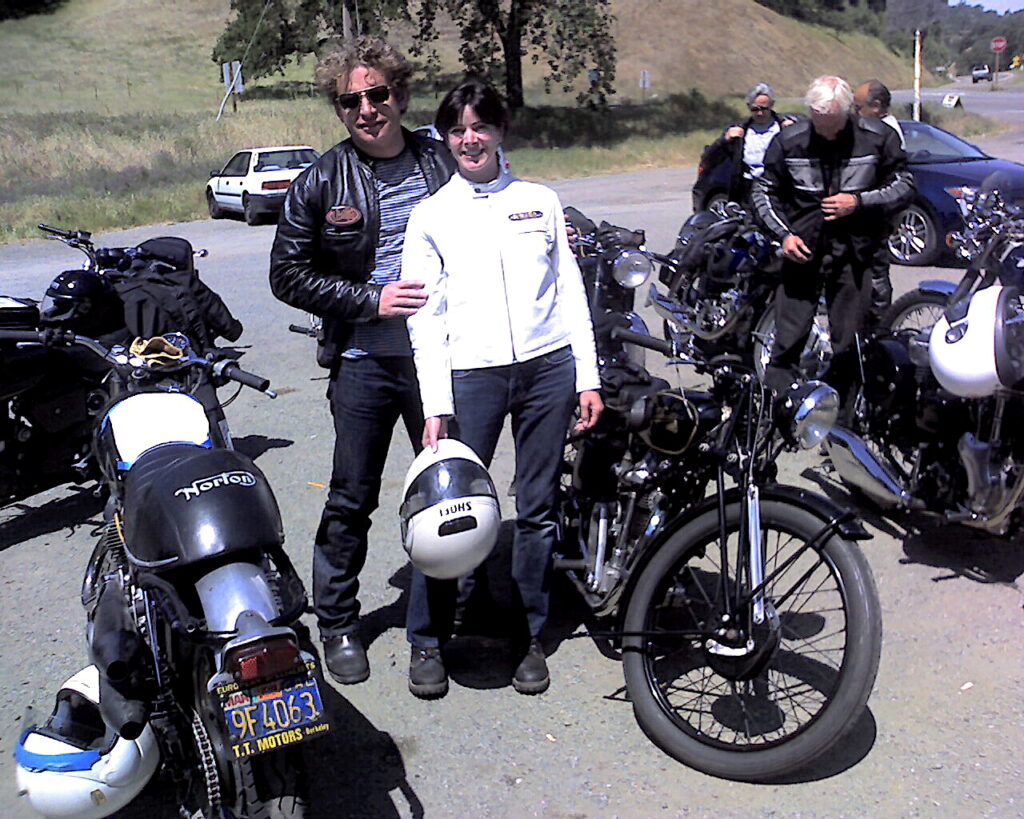
This year, as all my Velos were on the bench, I borrowed John's 1967 Velocette Thruxton [read our story on the Thruxton here], which is a fast and well-sorted machine. I think I kept my promise to only ride it to 80%, and I only opened the throttle WFO to pass a couple of cars along the way. Still, the bike is very fast through the twisty bits, and as that's all there is in the hills, away we went. Thanks John! There was only one mechanical mishap, when Kim Young's 1930 KSS had primary chain/clutch problems, which she's been trying to sort for a while. The bike has had a bit of teething trouble, and her husband Pete puts a lot of time and effort to ensure Kim has it available for rides.
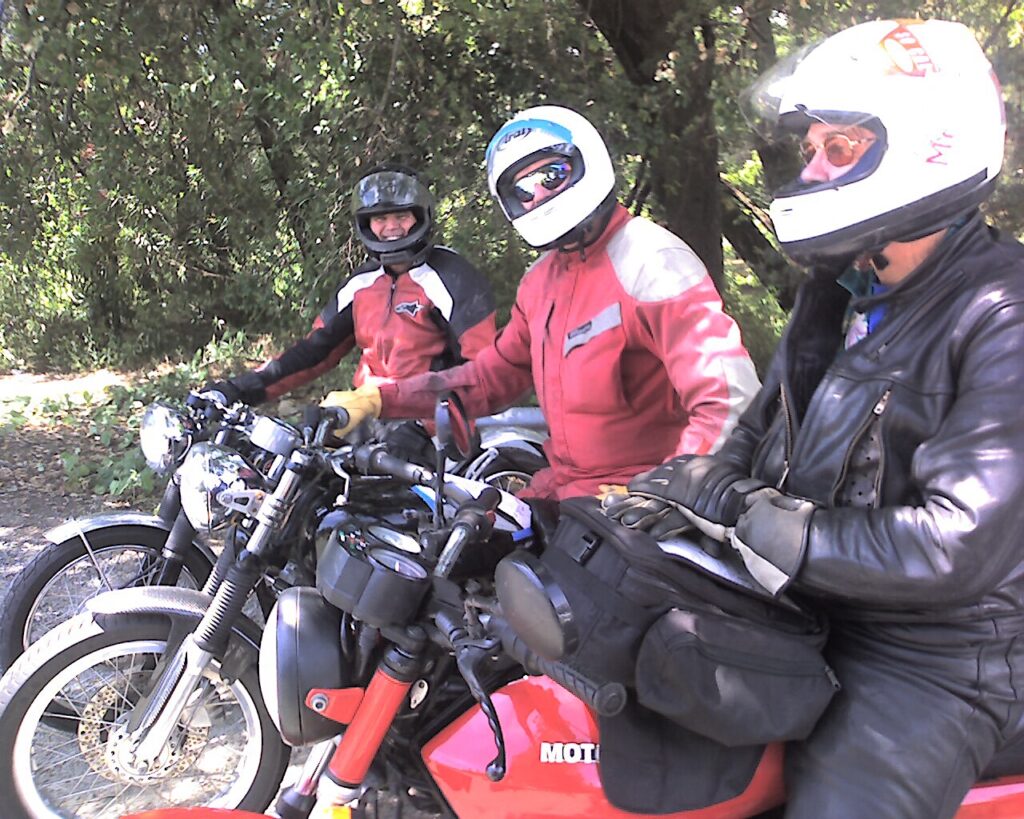
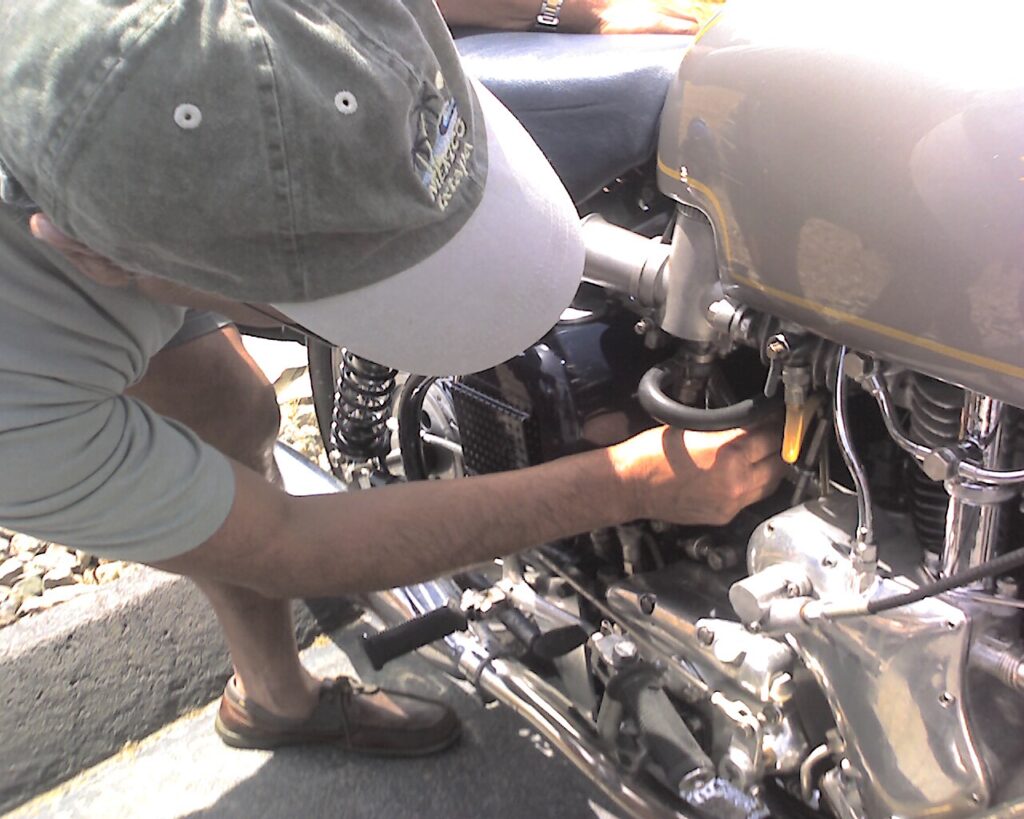
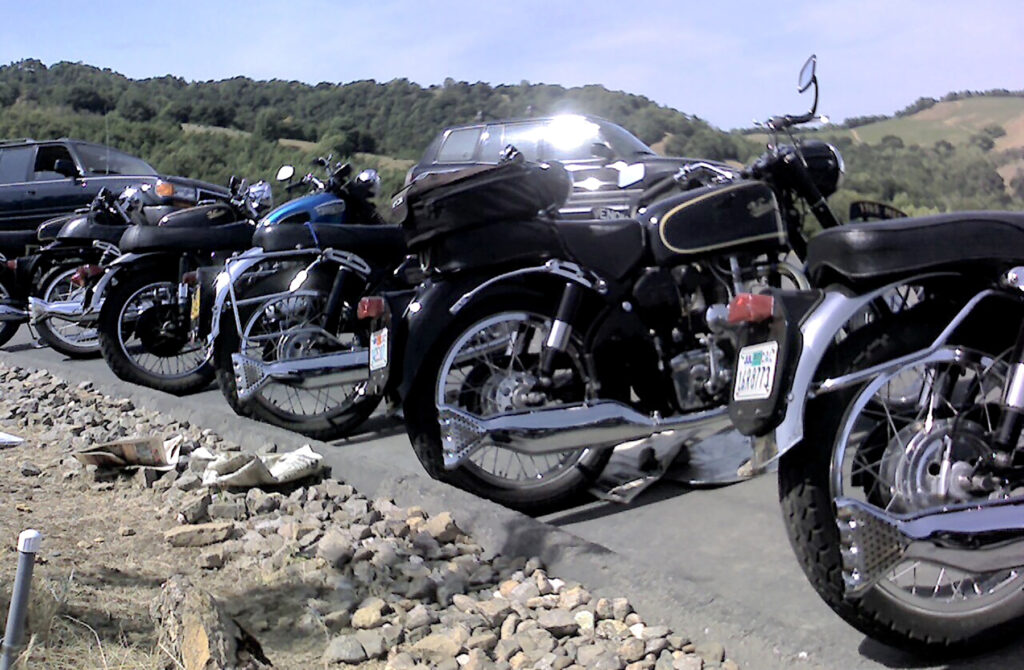
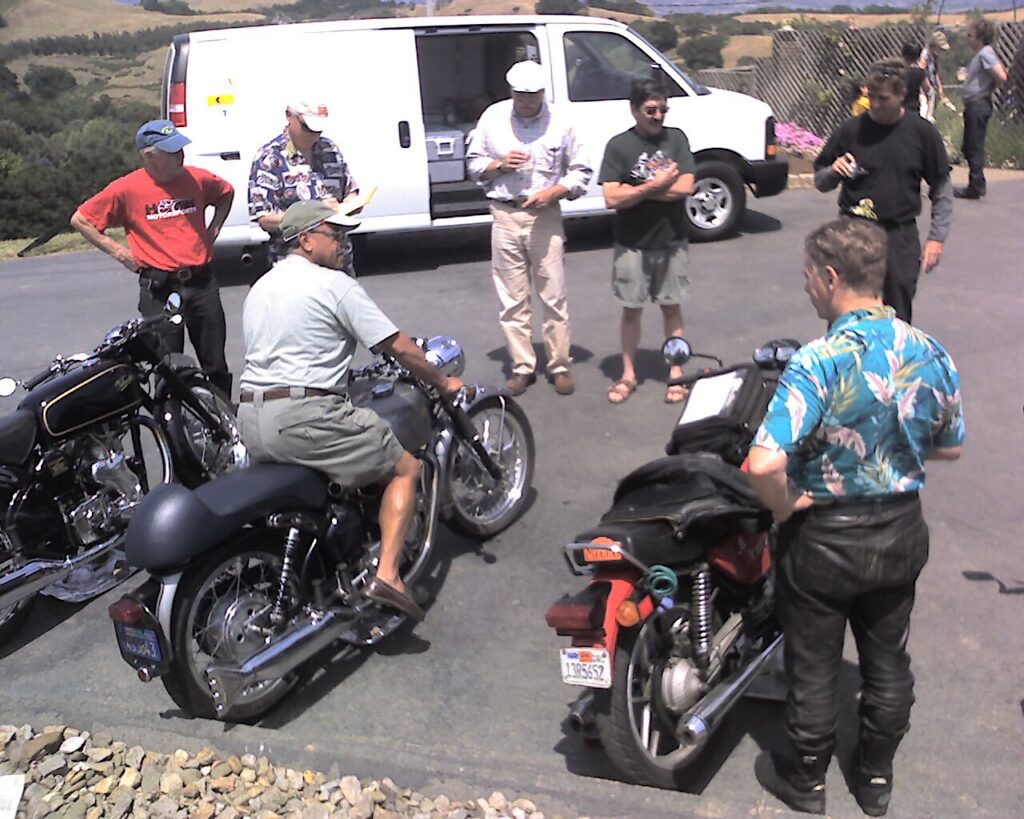
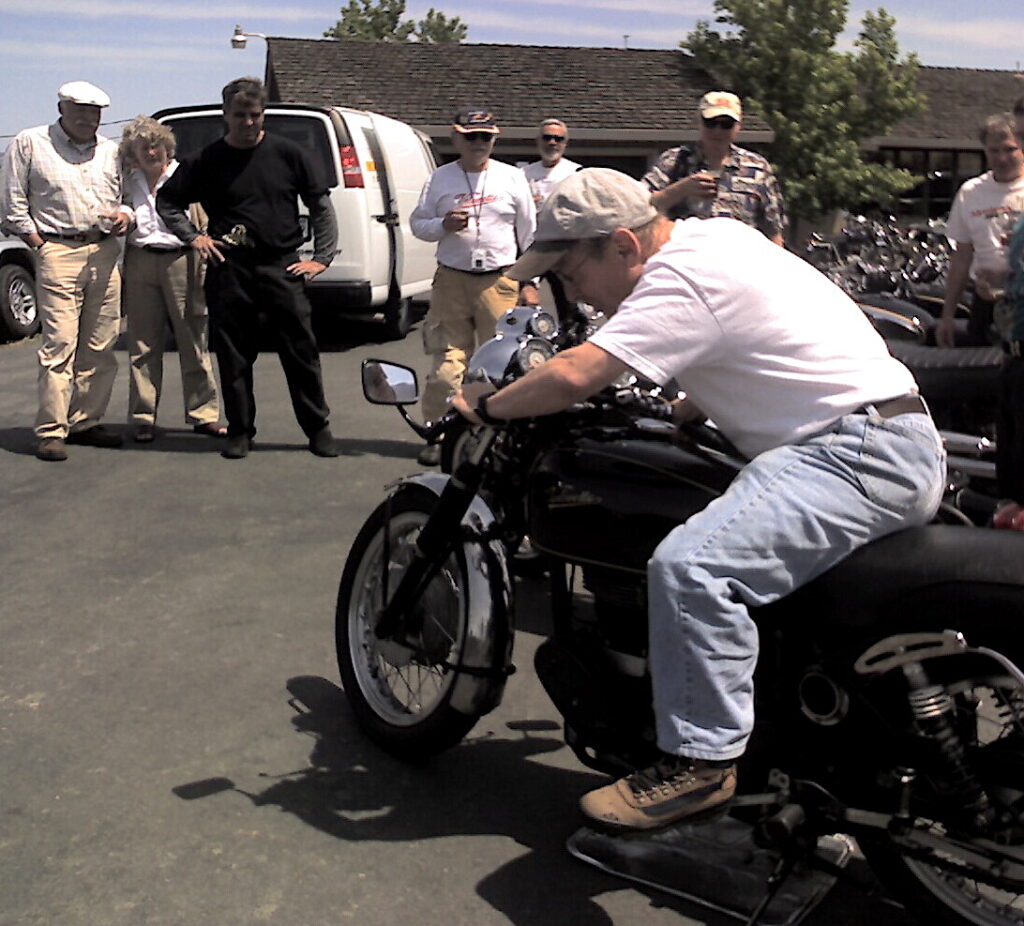
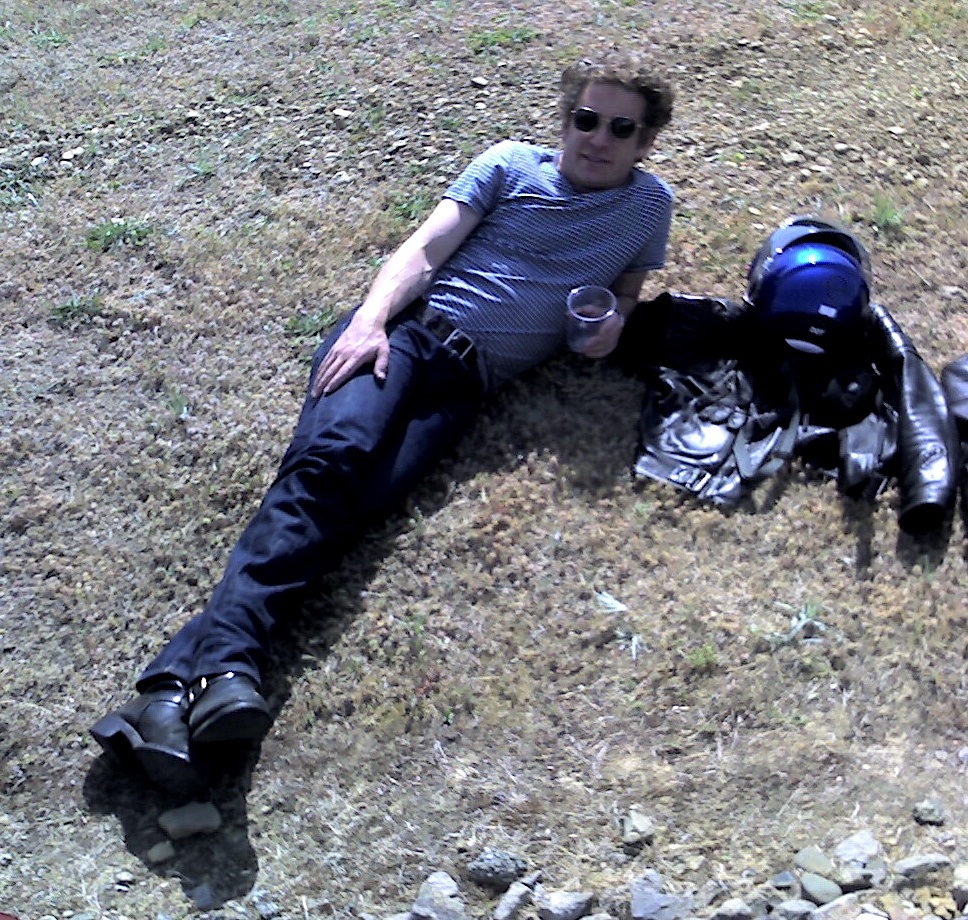
To join the Velocette Owner's Club of North America, click here! The club has an annual 1000-mile Summer Rally (since 1983), and set the gold standard for vintage riding clubs worldwide.

Legend Of The Motorcycle 2007 (Friday)
On entering the hotel forecourt at the Ritz-Carlton in Half Moon Bay, the first two-wheelers we encountered were a pair of MTT Jet bikes! Numbers 17 and 18 produced thus far; apparently there are that many people willing to pay $150k for a new motorcycle that melts car bumpers in traffic. Below is a video of the bike firing up in the forecourt of the Ritz, and filling the whole area with smoke!
https://www.youtube.com/watch?feature=player_embedded&v=FbW8y7wM1nI>
The sartorial accessory of the event (for the judges) was a Rolex Daytona, in varying shades of gold, stainless, and platinum. It's the watch du jour of motorcyclists who have 'made it'. The large belly was optional, but seemingly preferred, as it was popular.
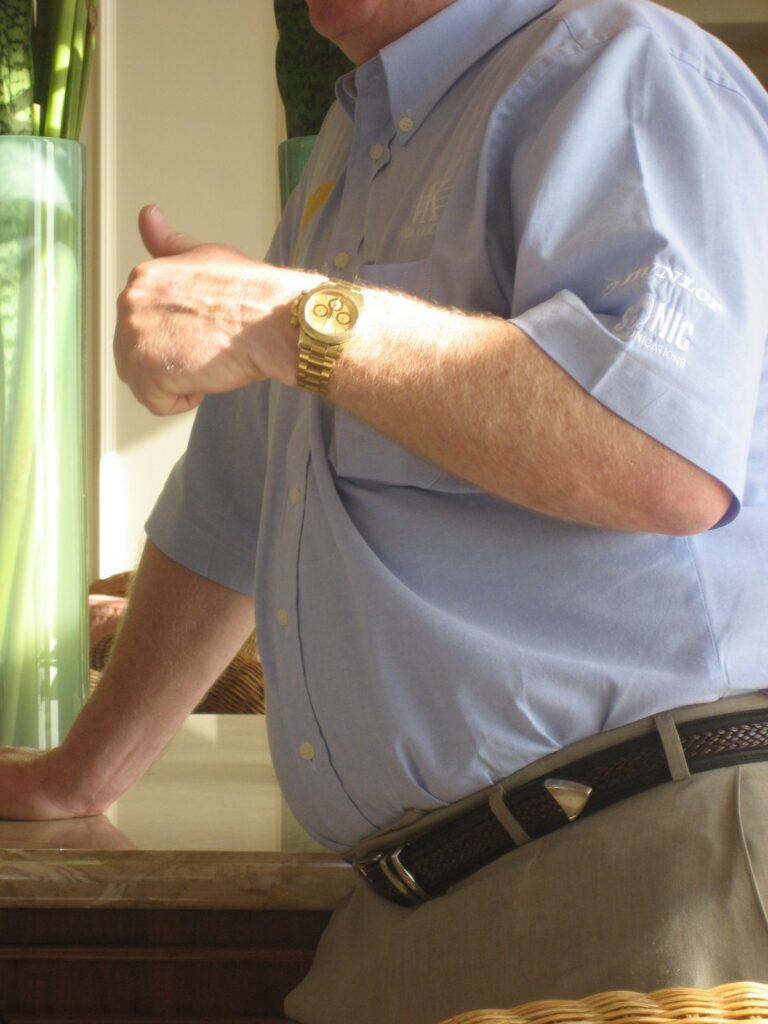
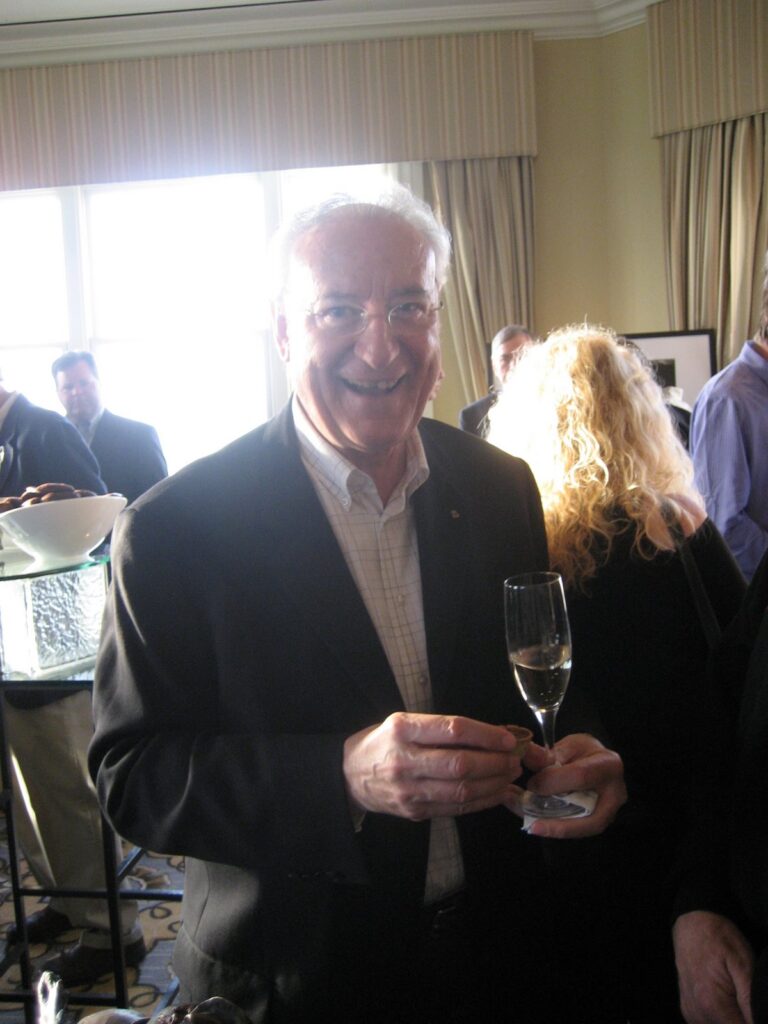
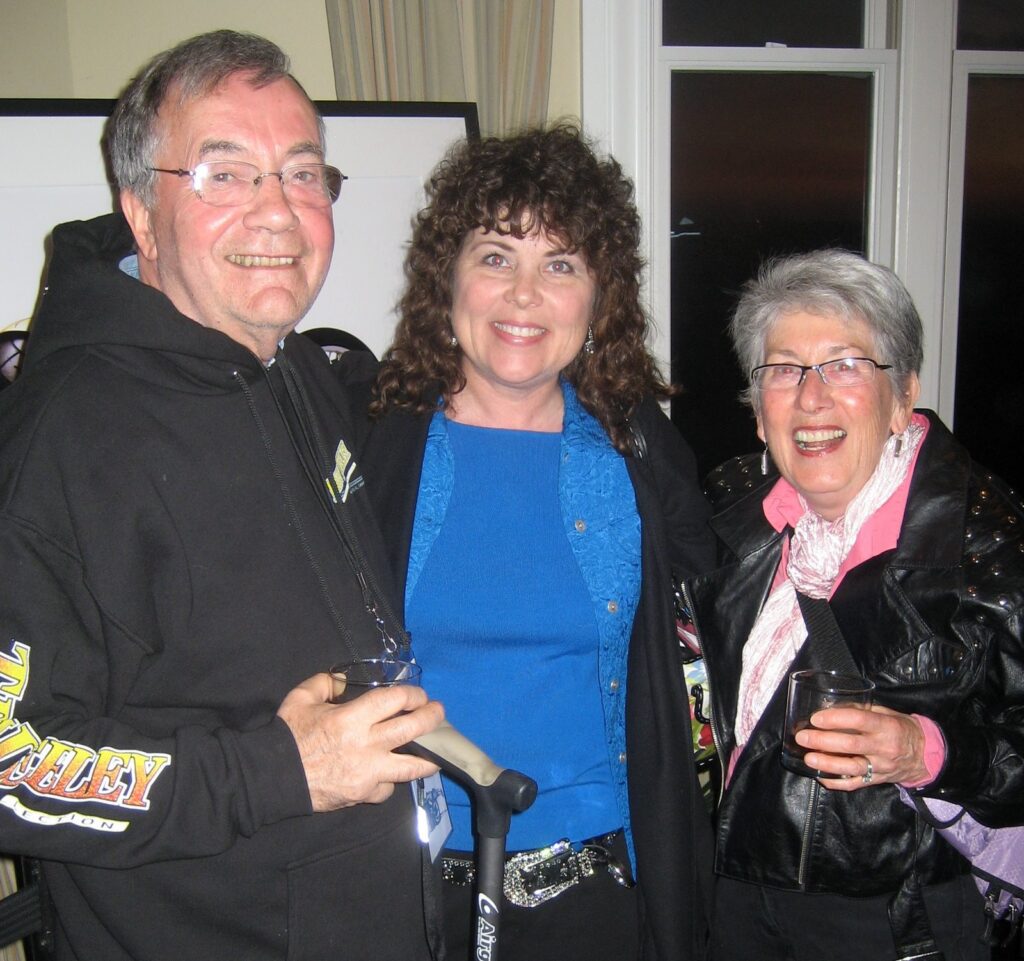
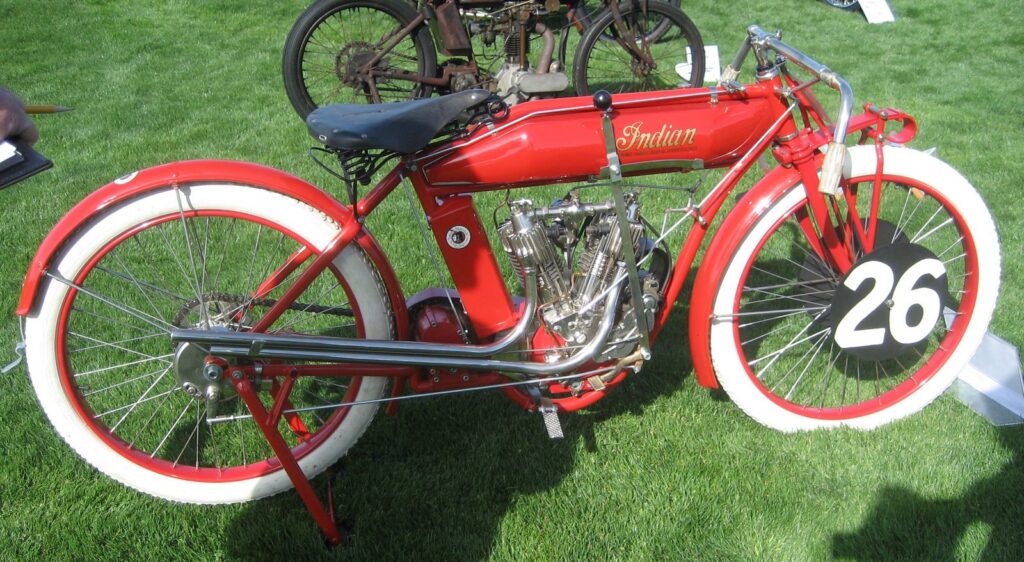
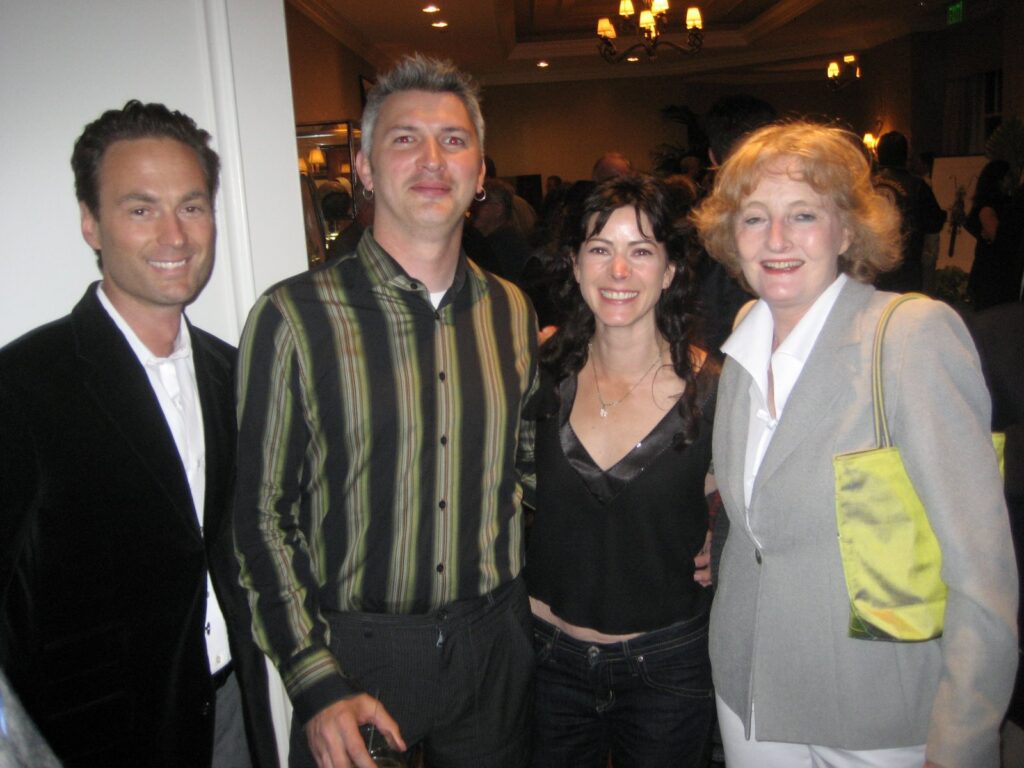
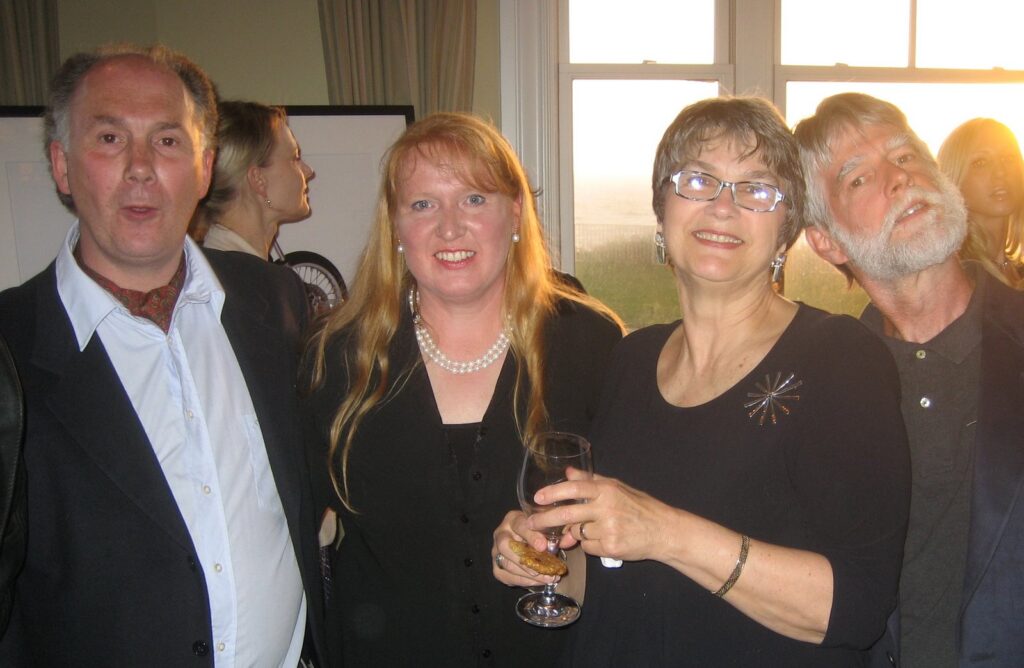
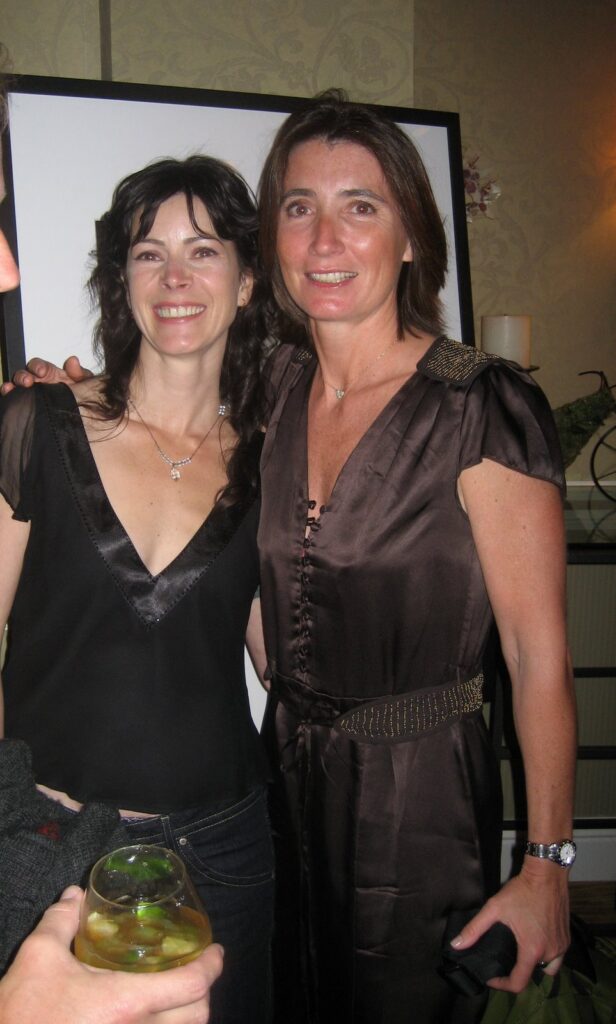
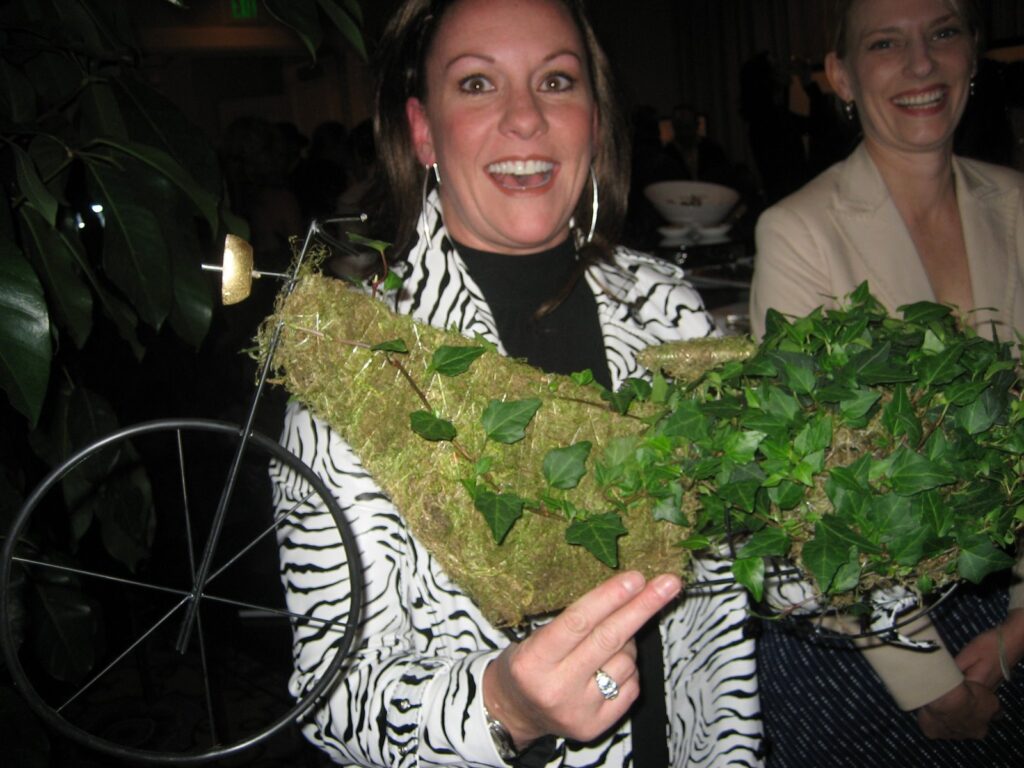
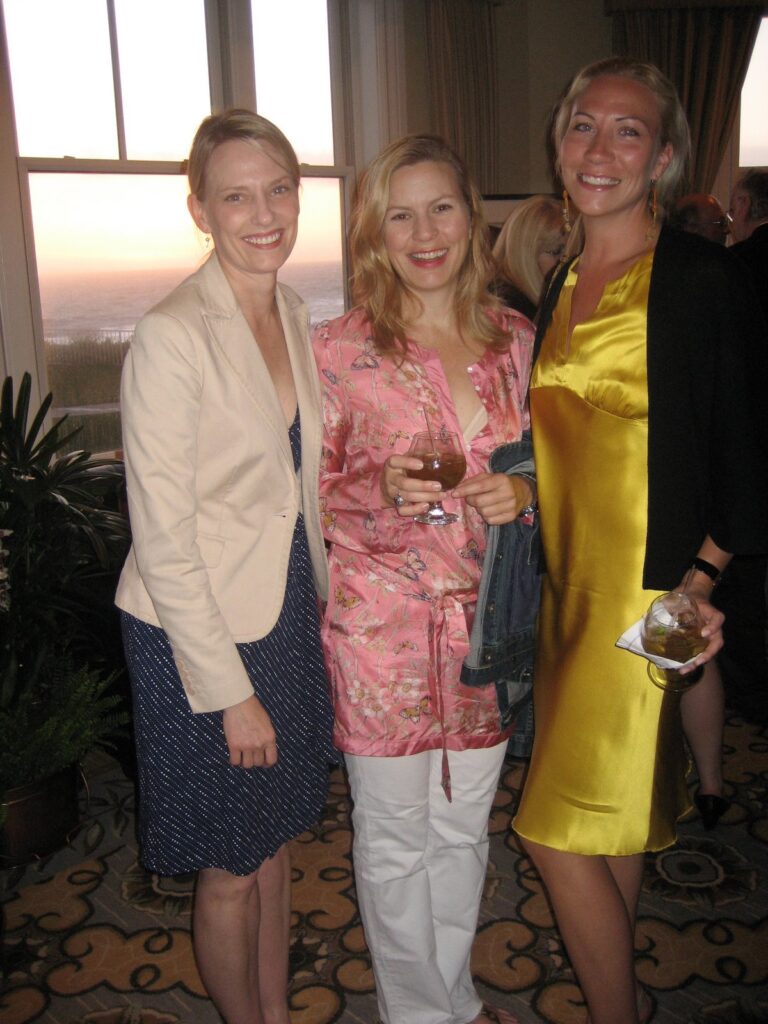
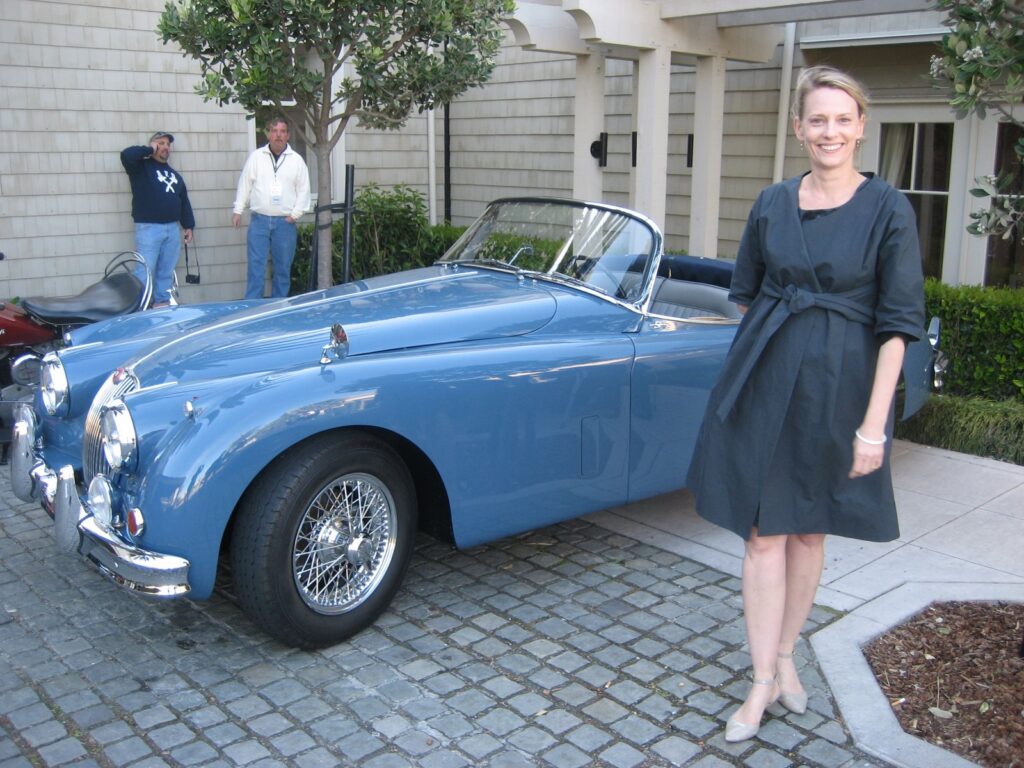

Don’t Trudge It, Rudge It!
A friend (thanks Pete!) forwarded an email from a collector in Australia who needed to lighten his garage a bit; mostly he had pre-1916 bikes which needed vast amounts of work to finish or complete. But, nestled amongst the Veteran Triumphs and Rudges was a proper Vintage (pre-1930 according to the VMCC) Rudge, which looked most intriguing. Of course, this was the bike he really didn't want to sell, but it attracted the most interest (it seems to be harder to sell the really old motorcycles nowadays, and the older collectors are passing on). I put in my bid, and the Rudge is headed to San Francisco.
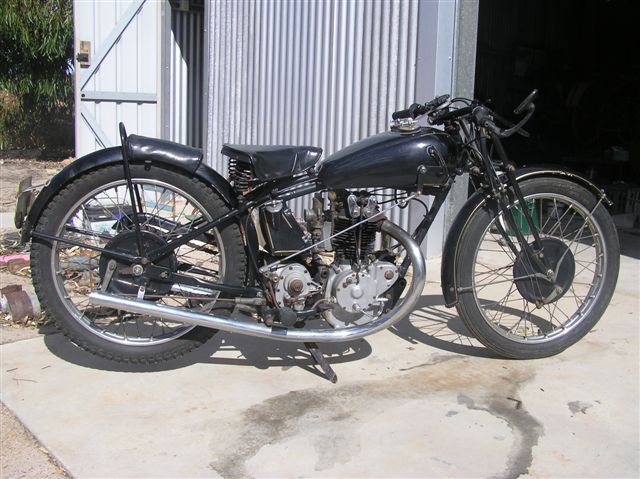
The bike in question is a 1929 Rudge Ulster, their pukka Racing Replica, and a faithful copy of Graham Walker's 1928 Rudge factory racer on which he won the Ulster TT at a 'world's first' road race average of 80mph. The factory wisely sought to capitalize on Graham's success by building a racer for sale, and the infamous Ulster model was born. Rudge carried on building Ulsters as their top-line motorcycle until they ceased building bikes at the onset of WW2, and like many a soldier, did not return after. The company did carry on though, but preferred to sell their wheel technology to automotive and motorcycle manufacturers, as they'd invented the splined knock-off wheel hub and the flanged aluminum rim for two and four wheels. Ever notice those Rudge wheels on a Mercedes Gull-Wing 300SL? Also, Borrani licensed the Rudge patent for flanged aluminum wheel rims, the first in the industry, introduced in the mid-1930s for both cars and motorcycles.
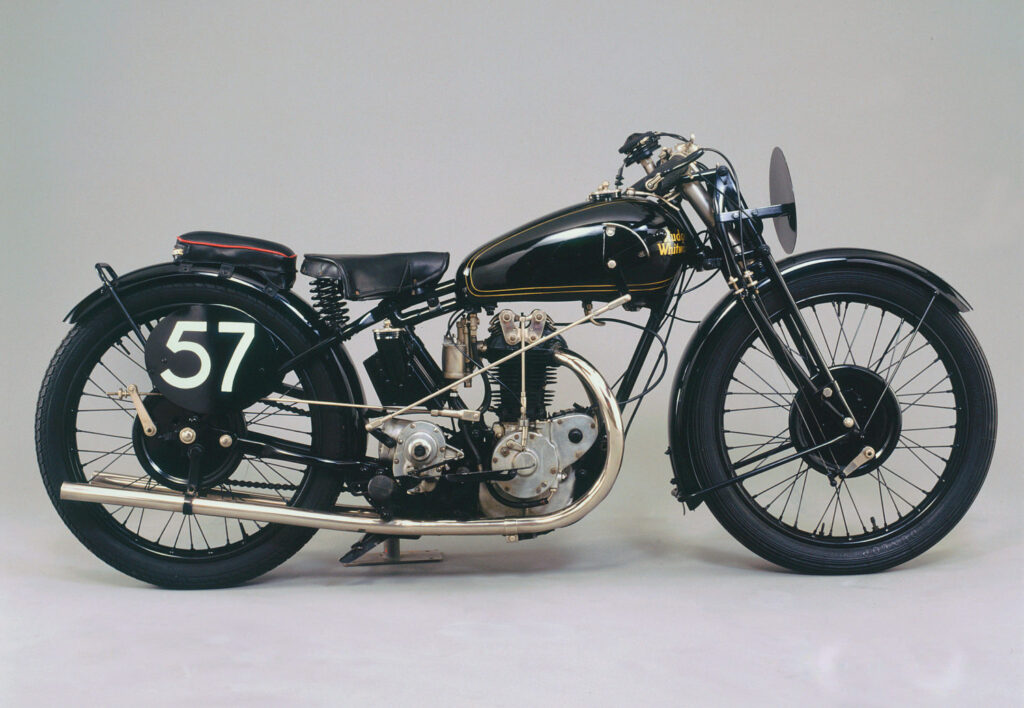
The first-year Rudge Ulster (1929) was a unique beast, and was essentially a one-year model. The 500cc single-cylinder pushrod engine had 4 valves and 33hp, and a four-speed gearbox, while the rest of the industry still contended with 3-speed boxes. Top speed was 105mph on an open exhaust pipe. The engine had a total-loss oiling system, meaning it had no oil pump per se, but rather an oil metering device, and the oil was allowed to burn off/drip out rather than being returned hot to the engine. 'A constant supply of clean oil' was the thought, but properly circulating oil really helps keep an engine cooler! There are other features of the bike which are unique to the year, such as the twin-filler gas and oil tanks and large diameter wheel rims (21" and 20" front and rear); the 8" drum brakes were the biggest in the motorcycle industry for many years.
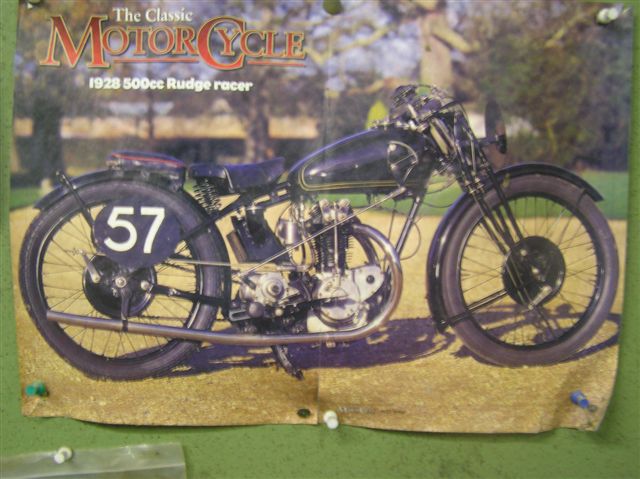
Regarding the poster of Graham Walker's machine; the owner has it attached to his garage wall - a pinup! Let's hope the Ulster looks as good as the calendar girl when it arrives in the USA.


artoftime said...
Paul - it was such a pleasure to see your name over at the Sartorialist - I bought your 900GTS in something like 1990 - never forgot how cool you and Denise(?) were - rode the wheels off that bike, sold it, traded it back for a painting and now just looking it in mock up state. Don't quite know where to go with it...anyway, now into vintage cars and a painting career. Would love to catch up - you even in NYC?
Gregory Johnston
APRIL 01, 2007
vintagent said...
Hi Gregory, can't contact you via your artoftime handle for some reason; send me your email address! I was just in NYC, but will be back likely in early June. Send to vintagent1@aol.com
I was just thinking about 'ARTMS' when I was in NY actually, must have been psychic. What a great bike. If you want to sell it back, let me know. P
APRIL 11, 2007
Anonymous said...
Wonderful article, I own and ride a Rudge Special 500 1937. The bike is new to me, however, my father had a Rudge in his youth. I love vintage cars and motorcycles. Would you be able to recommend a source to acquire an owners manual and spare parts list?
Thanks
George Murphy
Mar 27 2007
2007 All-British Clubman's Show
The focus of this year's display was 'Racing Nortons', in honor of the significant history of these machines in the Isle of Man's centenary year. Top pic shows yours truly atop Paul Adam's '37 Norton Manx GP (they didn't call them 'Manx' until after WW2), which he had just finished restoring, and which was the finest machine present in my opinion. Paul's attention to detail is impressive, and I love the satin chrome finish on all the nuts and bolts - a difficult process to source these days, with environmental regulations on plating by-products (like hydrogen cyanide). Perhaps in the Sierra foothills where he lives, the EPA isn't paying as much attention.
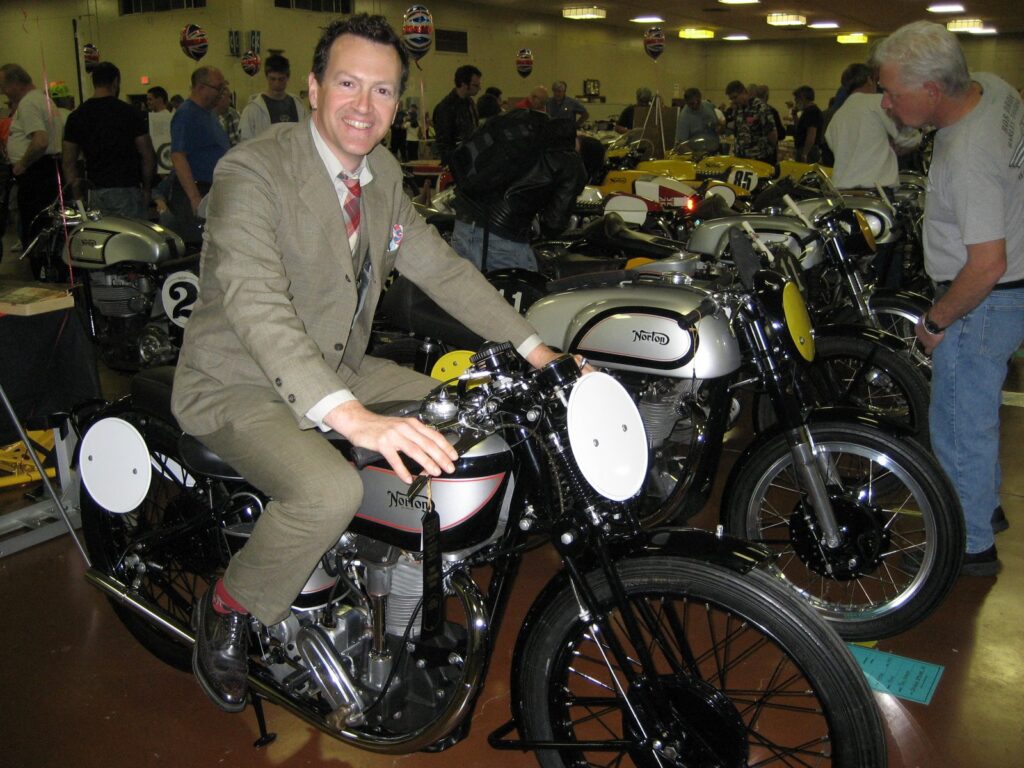
You might note that the engine has black crankcases, indicating that they're magnesium; these 'Manx GP' models were the first Nortons sold to the public with this ultra-light material. Previously, only factory racers used magnesium. I think Paul's bike is one of a handful of survivors of this particular model; I've only ever seen pix of two others. Note also straight exhaust pipe, not a megaphone.
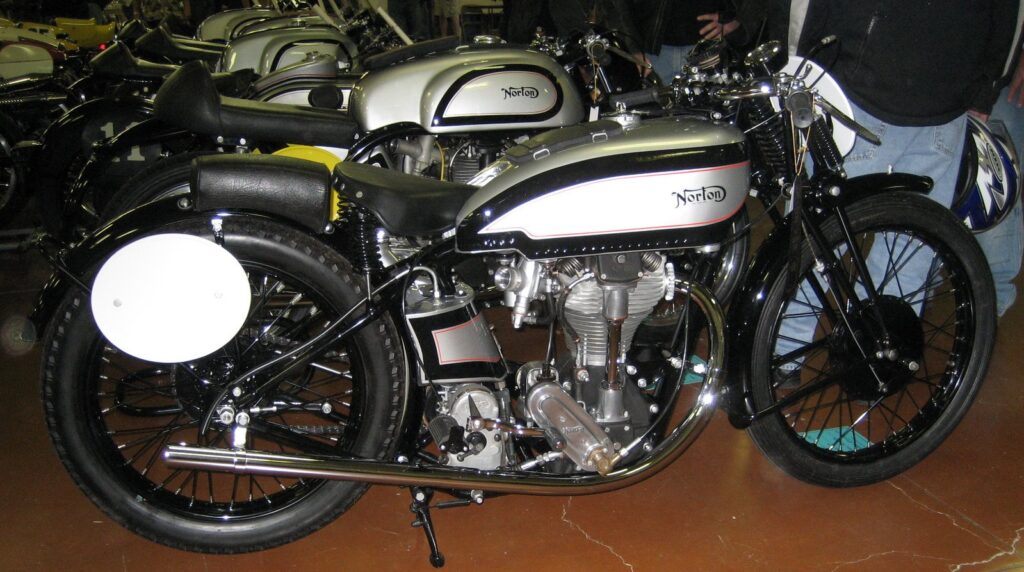
Pete Young and I were the judges of pre-war machines at the show, and awarded the Norton Best in this category. An impressive machine; even my suit is turning green in the photo! The display of Nortons was perhaps the best 'featured marque' display ever seen at the Clubman's Show, with over 20 compelling racing Nortons, ranging from my 1925 Model 18 racer to 70s Commando production racers. Kudos to the show organizers for bringing such a diverse lot together. Bottom pic shows a couple of attendees in their Rocker finest, admiring a speedway machine with Triumph Tiger Cub engine. There was a great crowd at the show, quite a few Rockers in fact, and I managed to pick up a whole load of Velocette spares for my projects.
